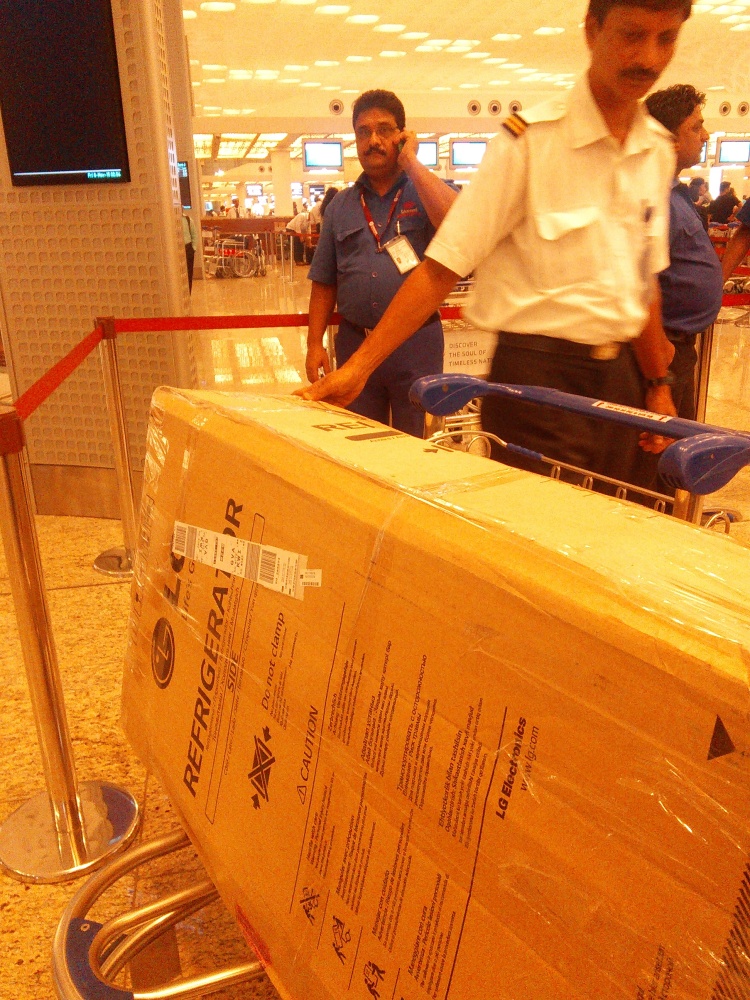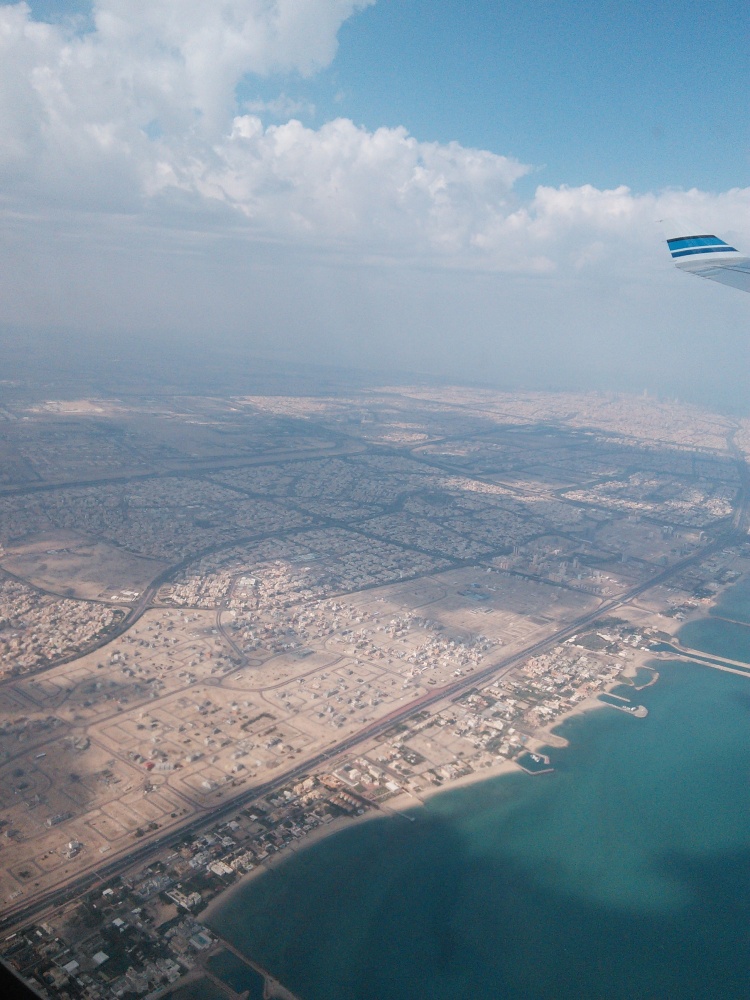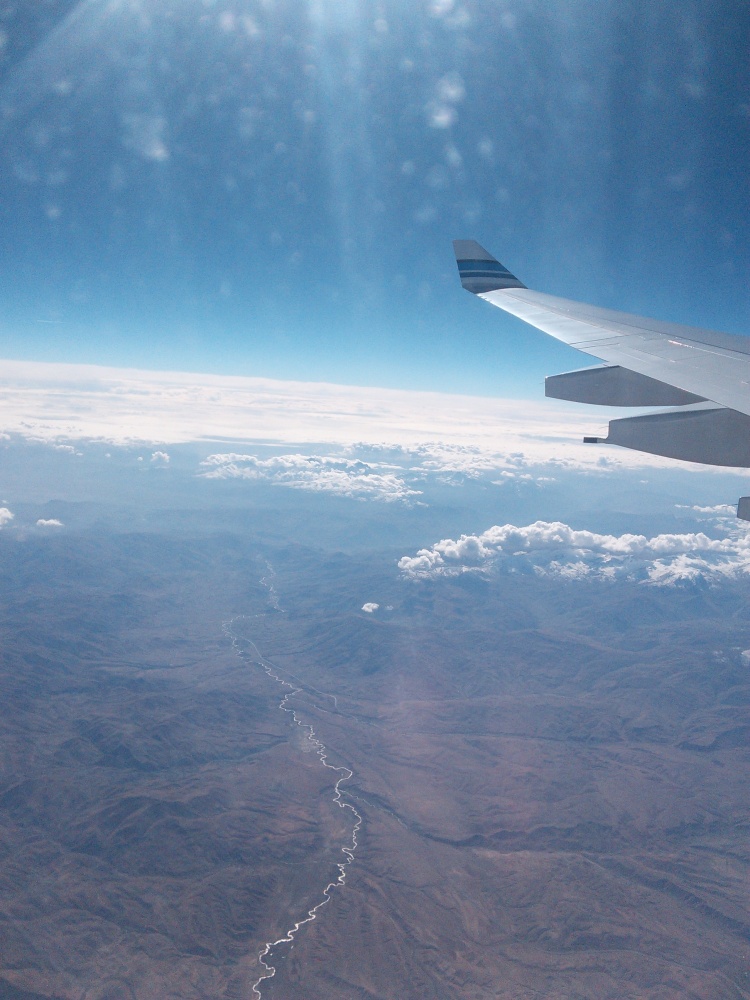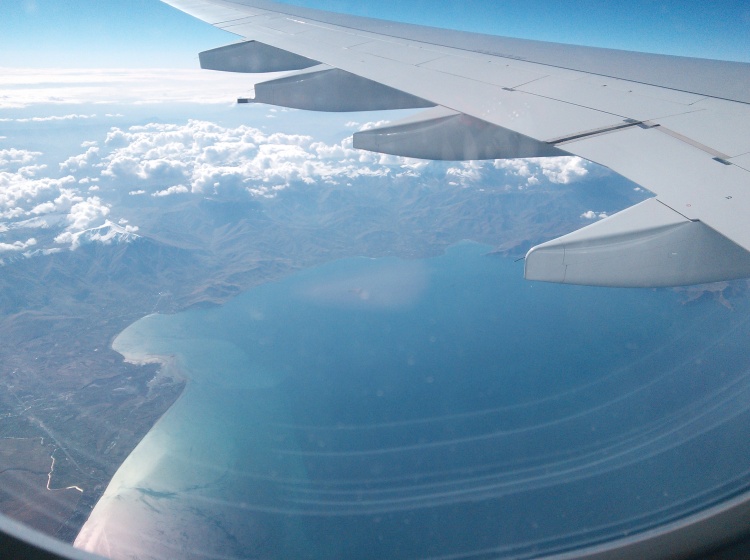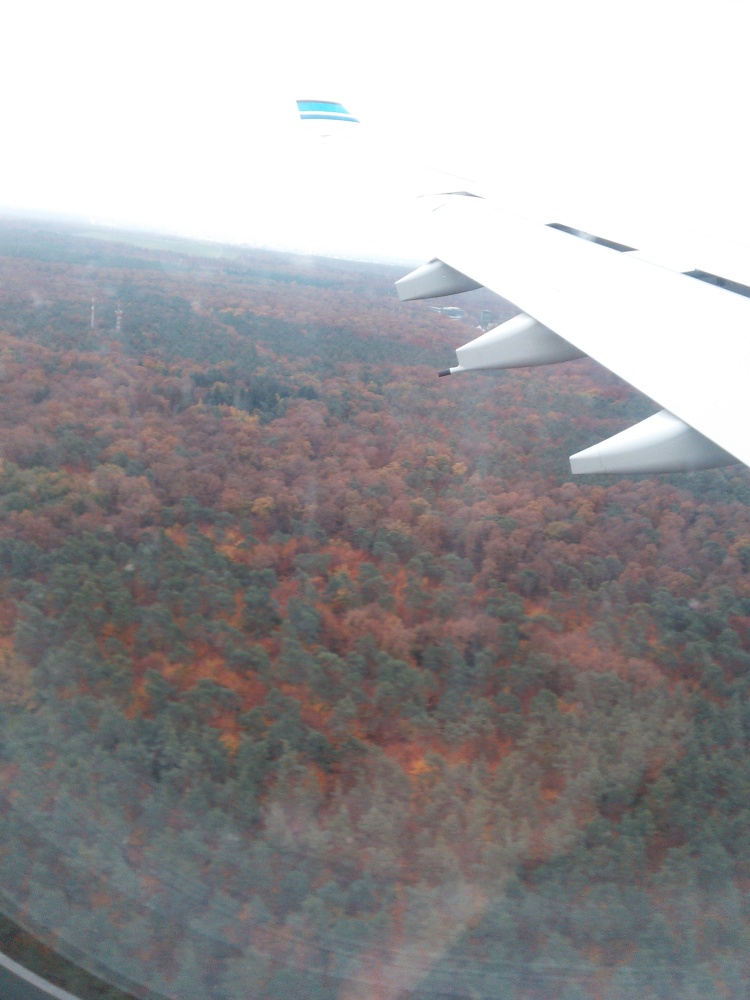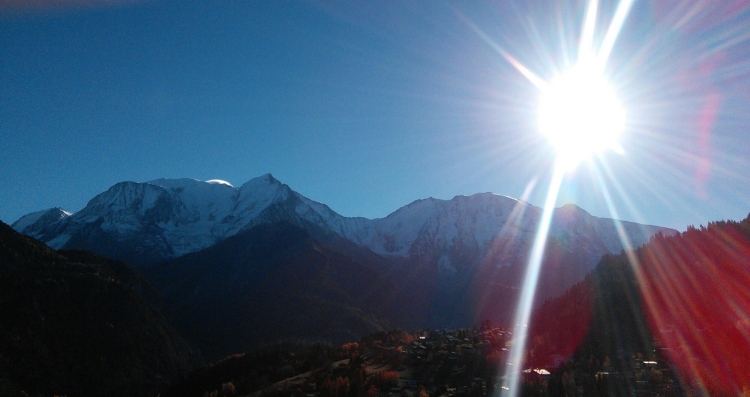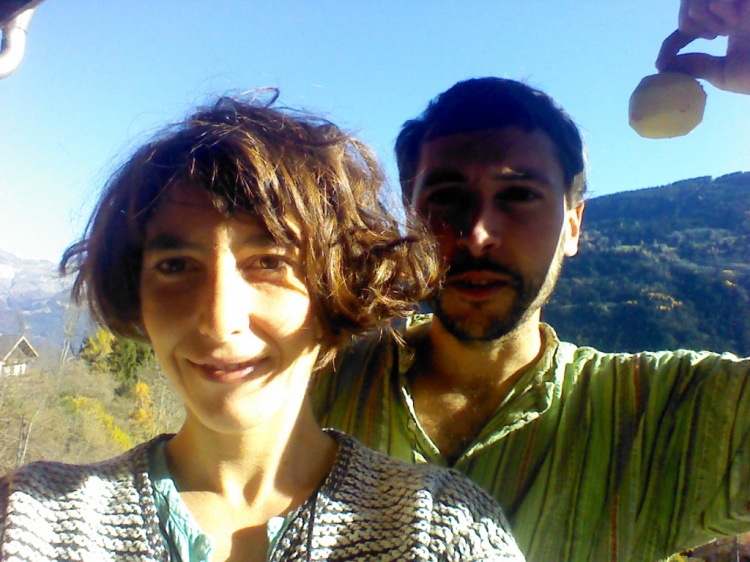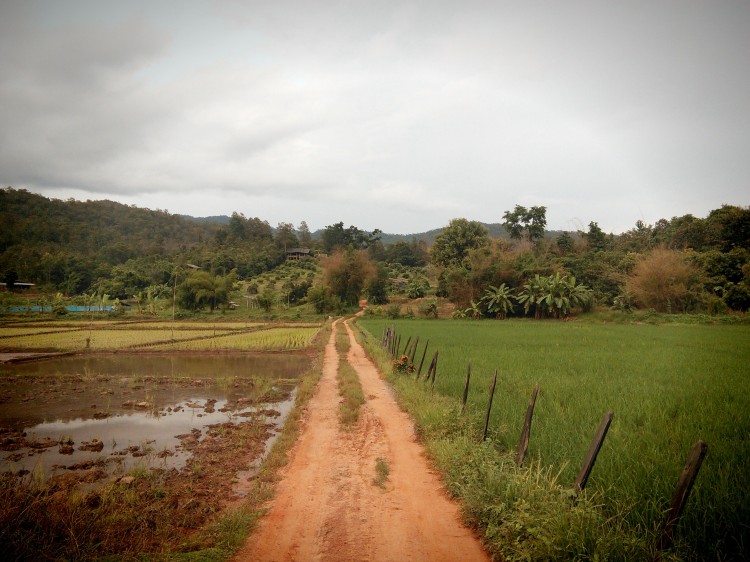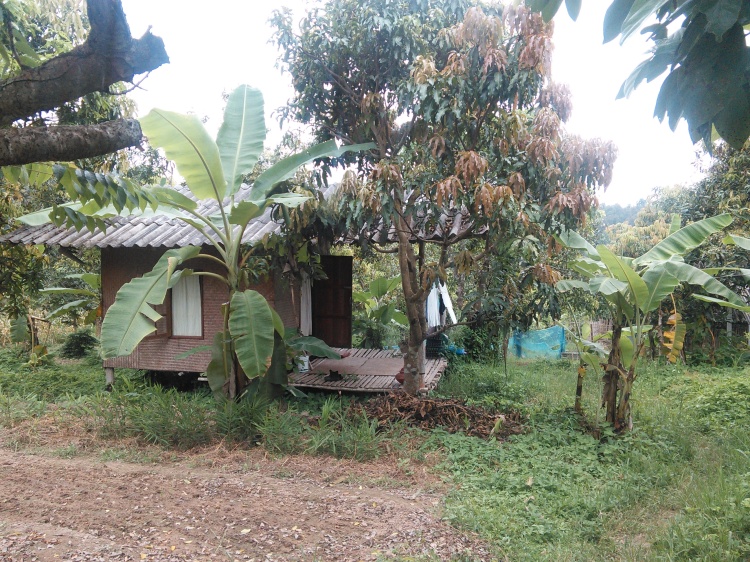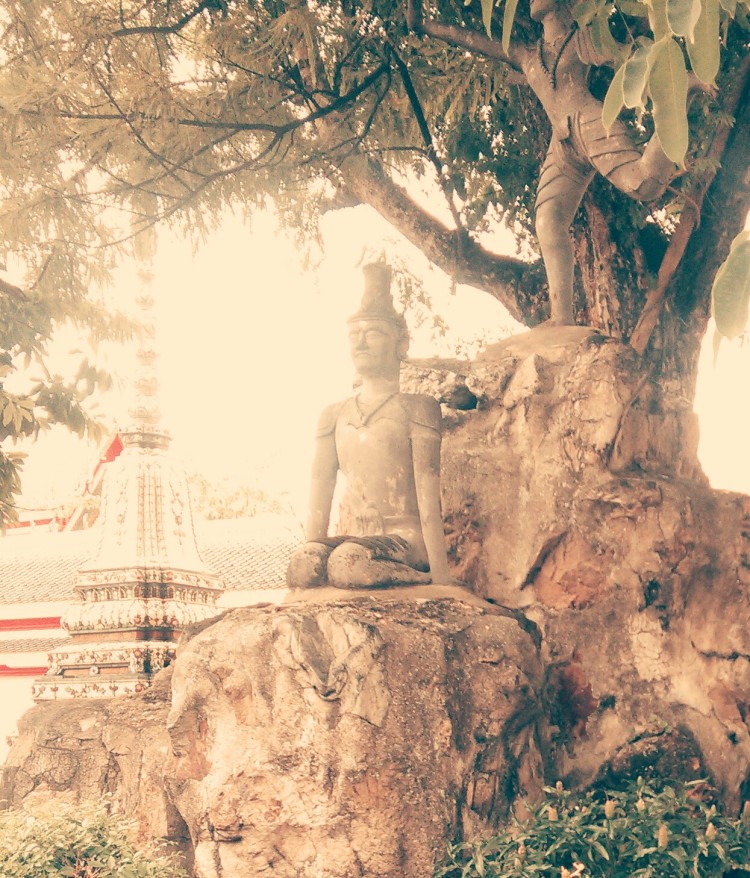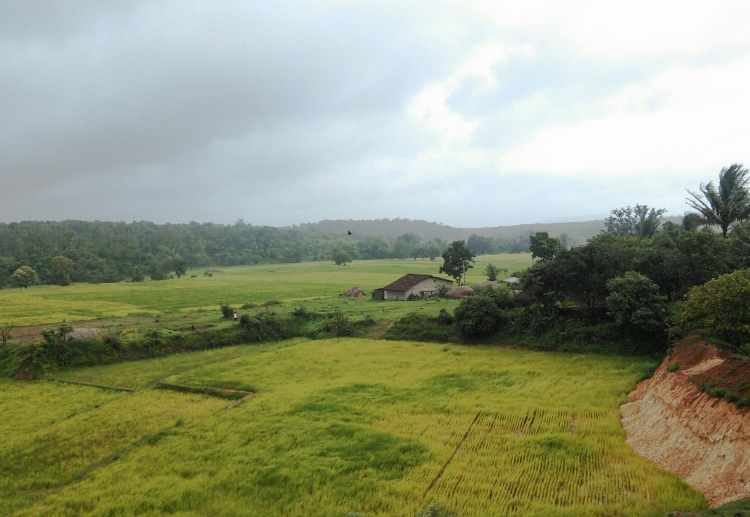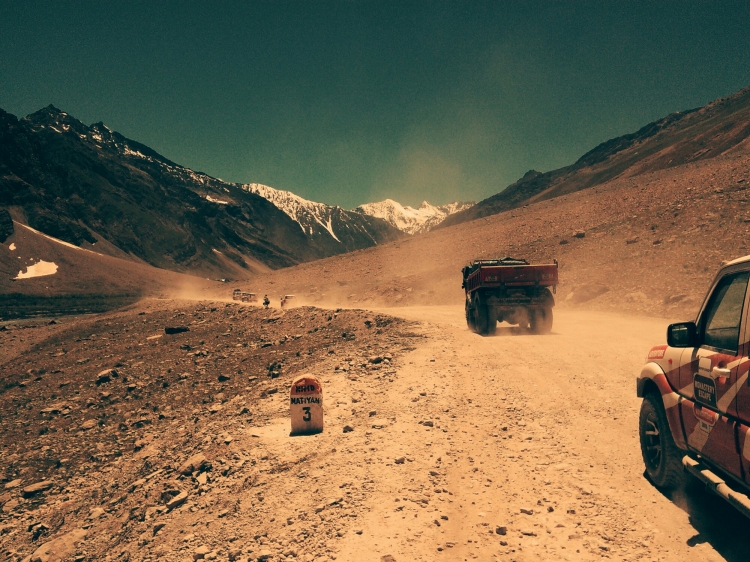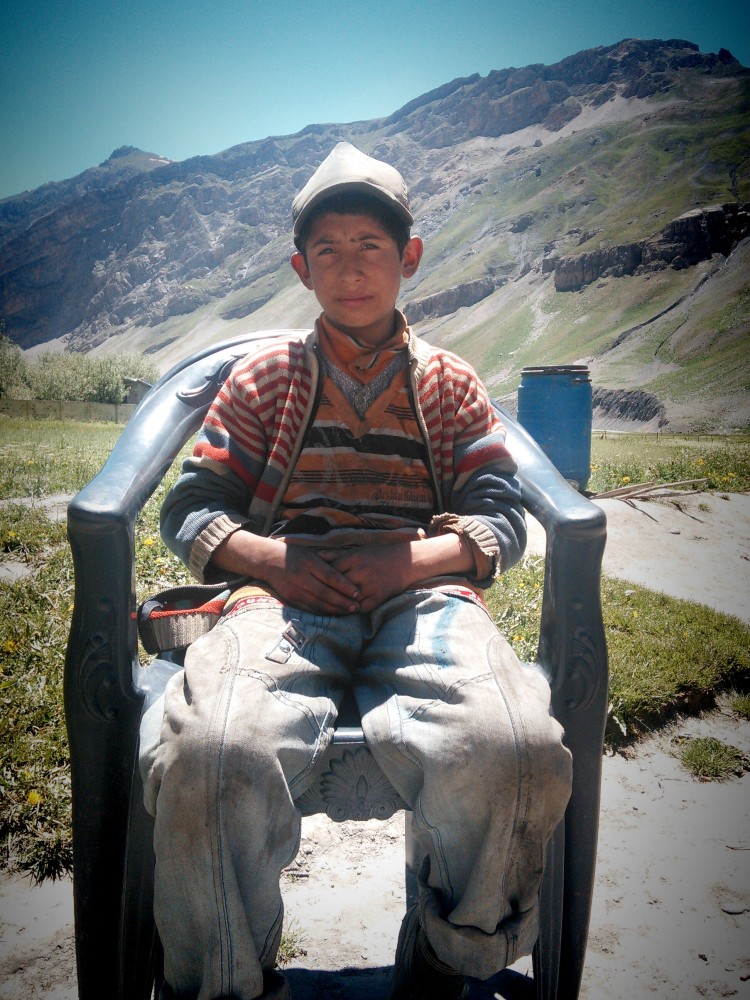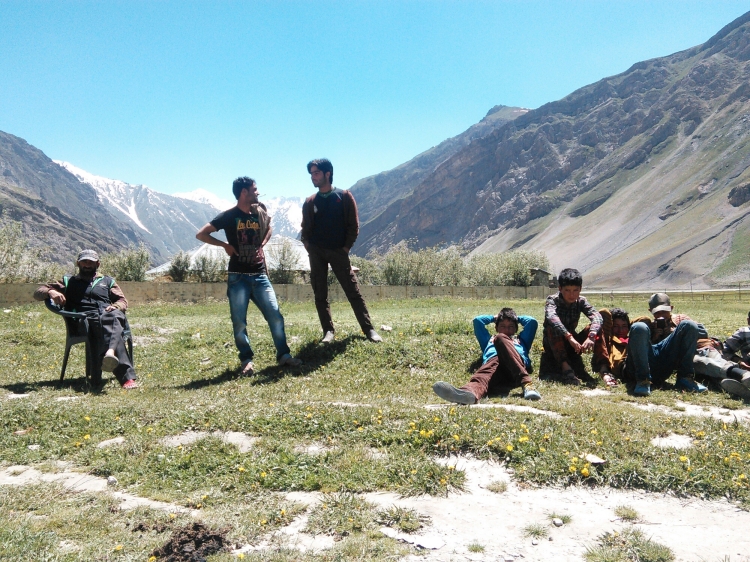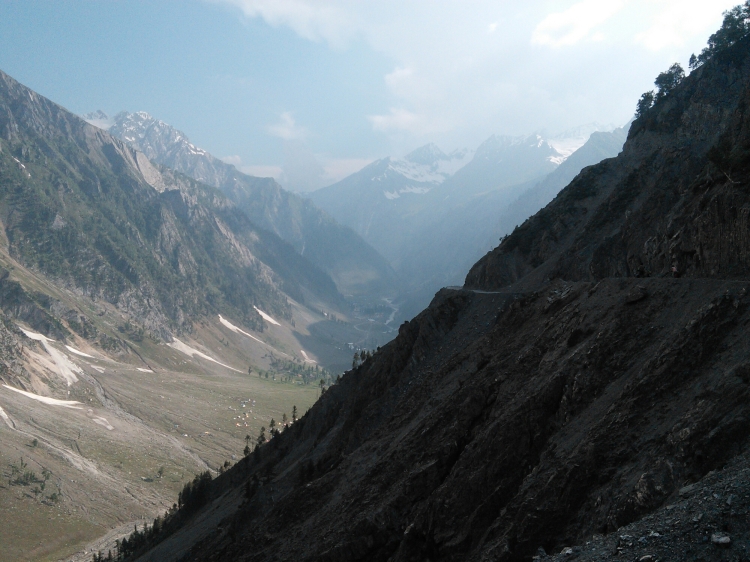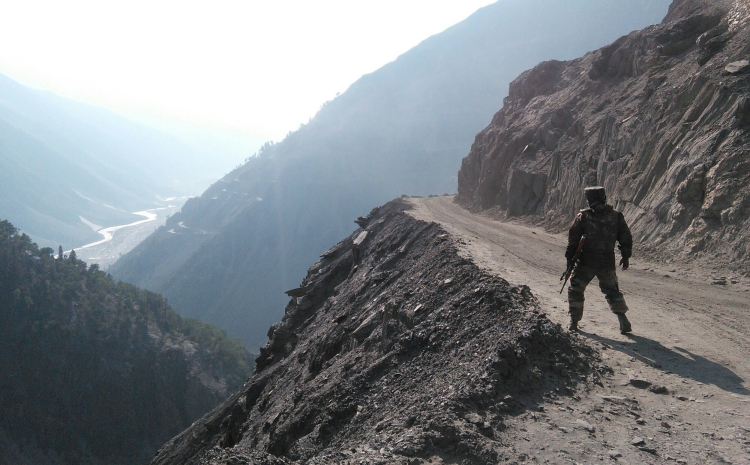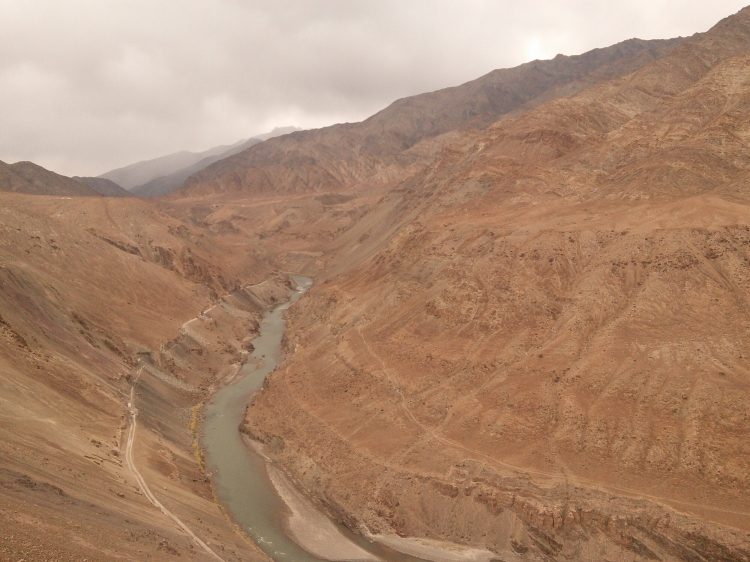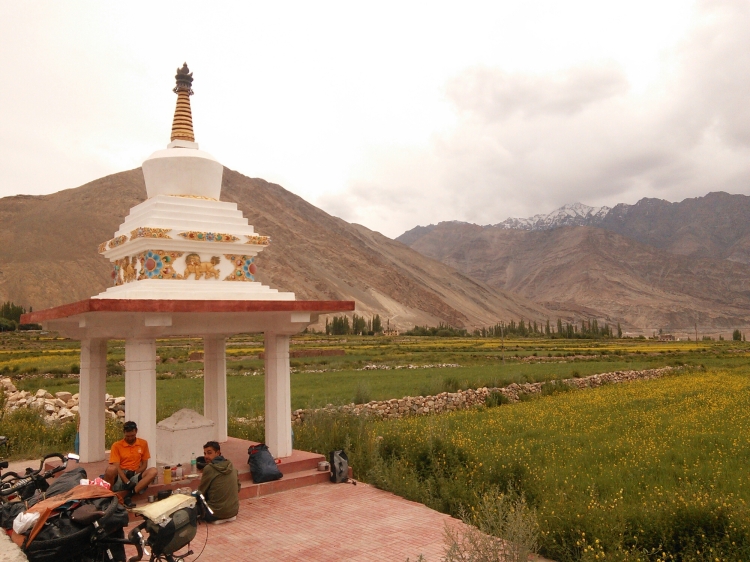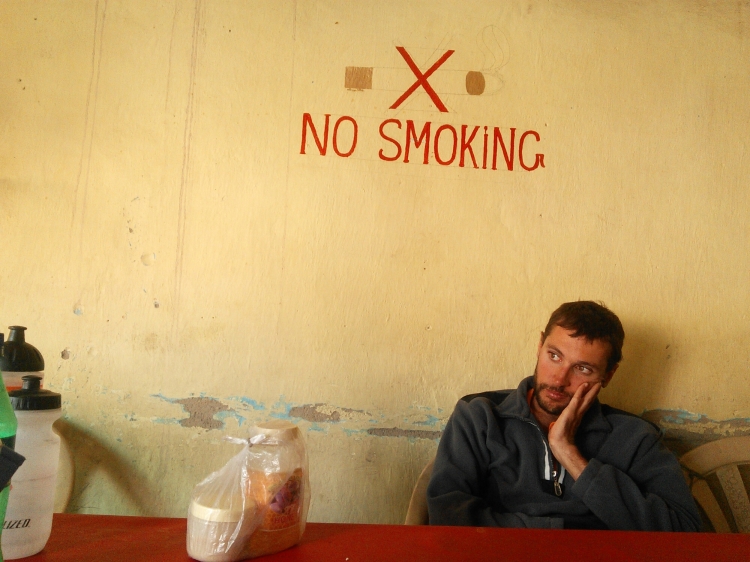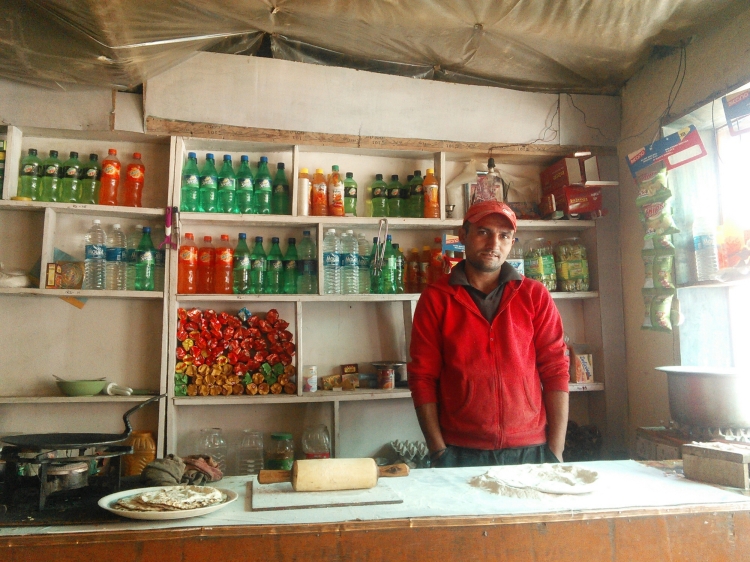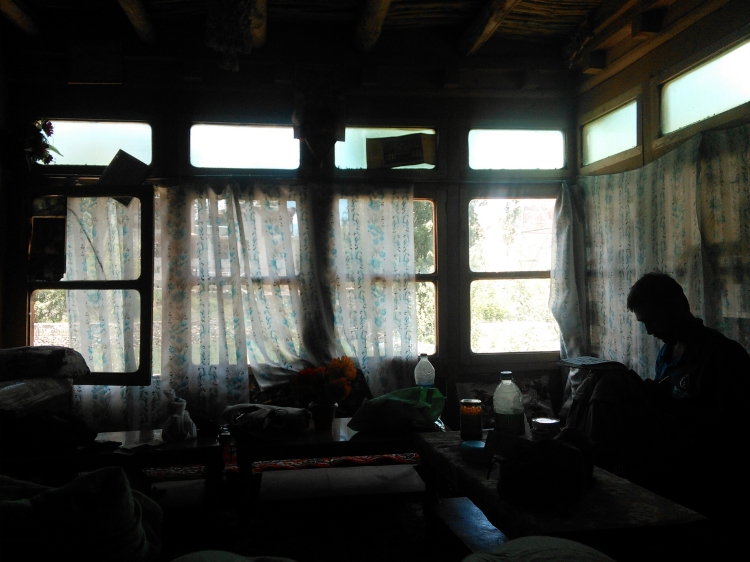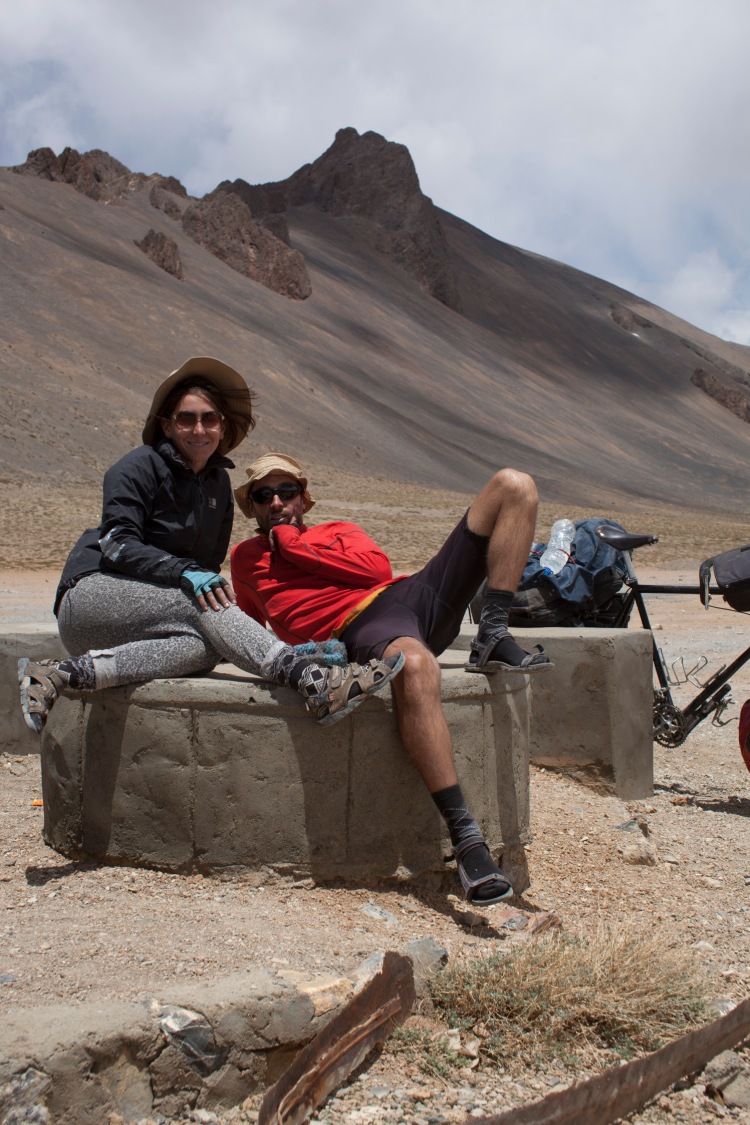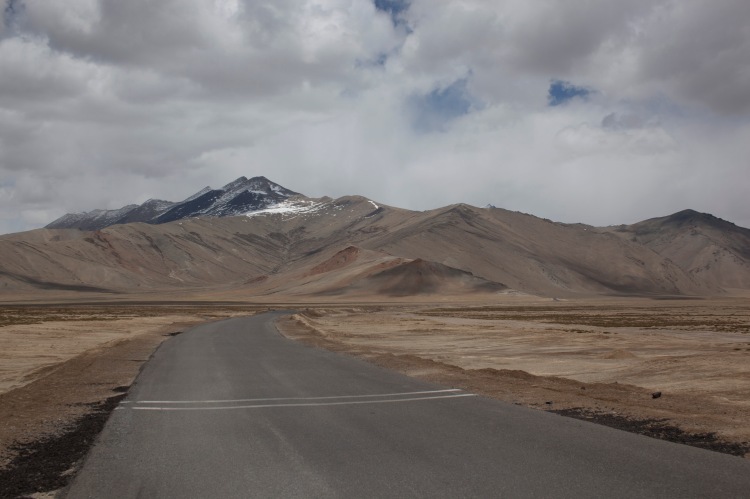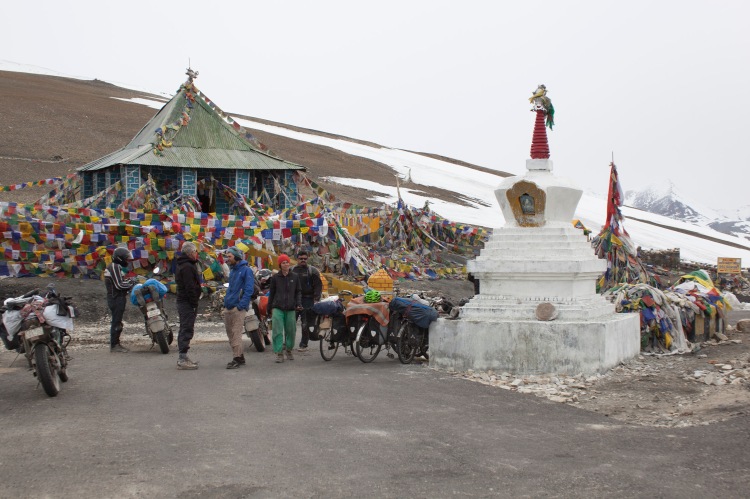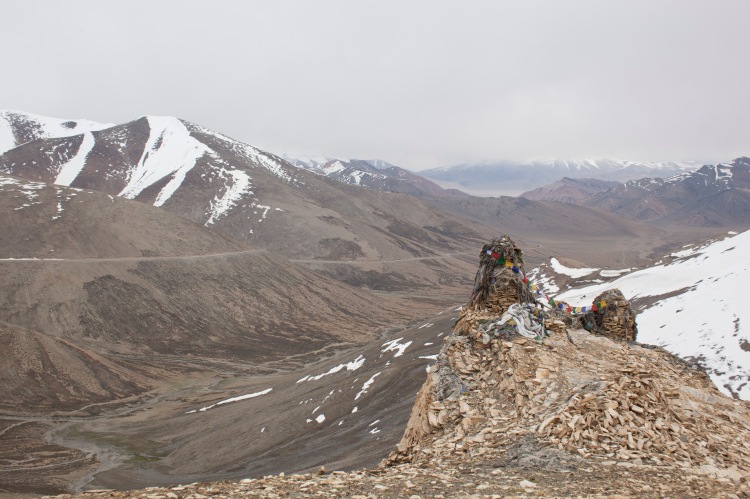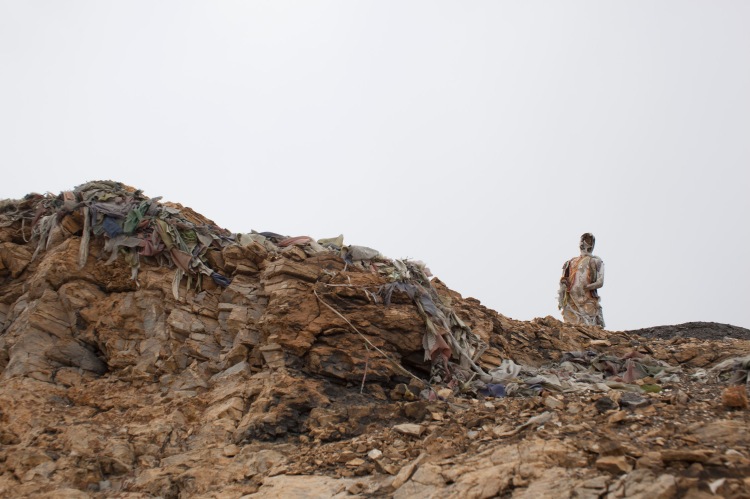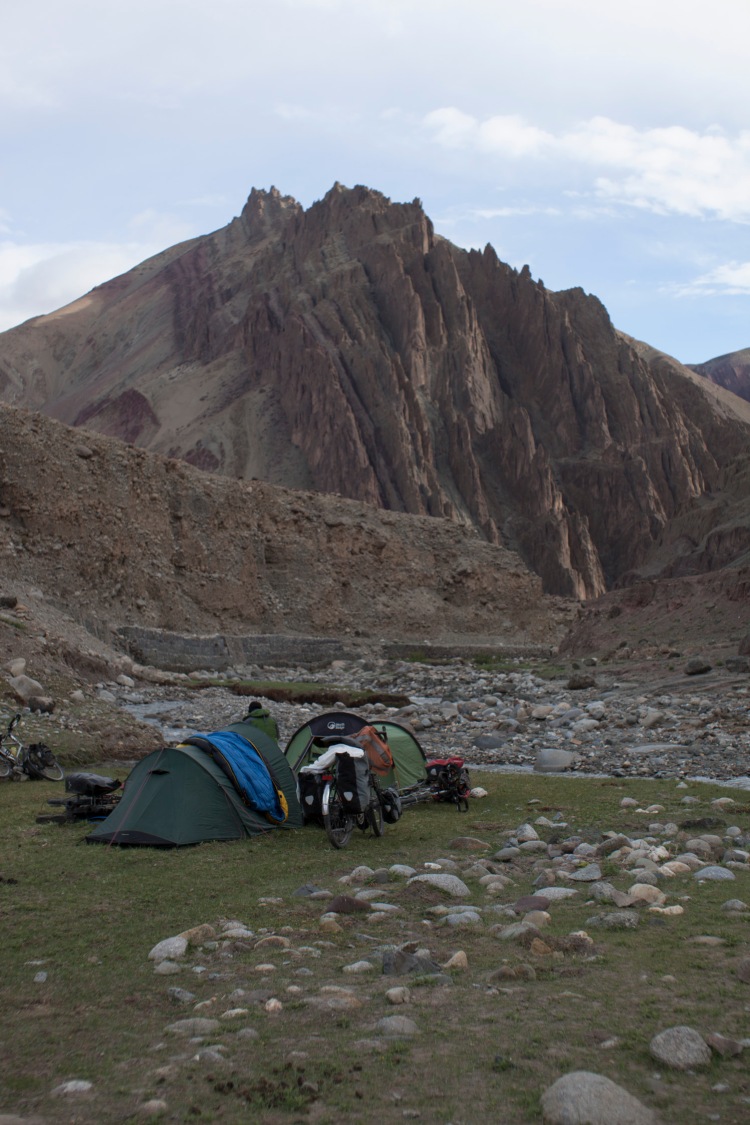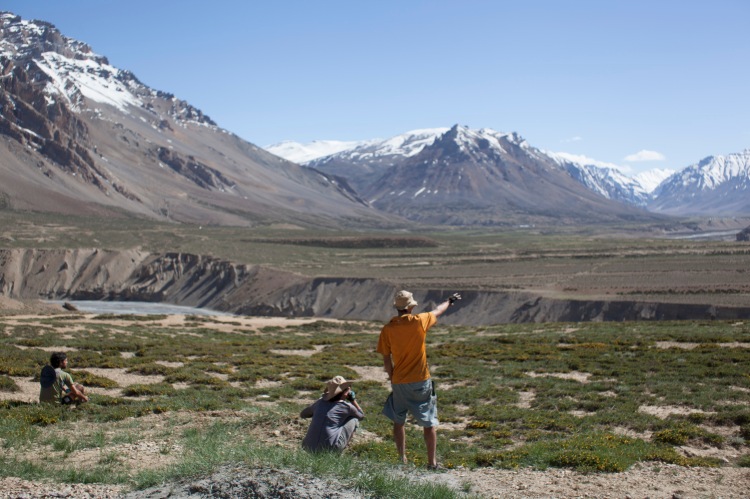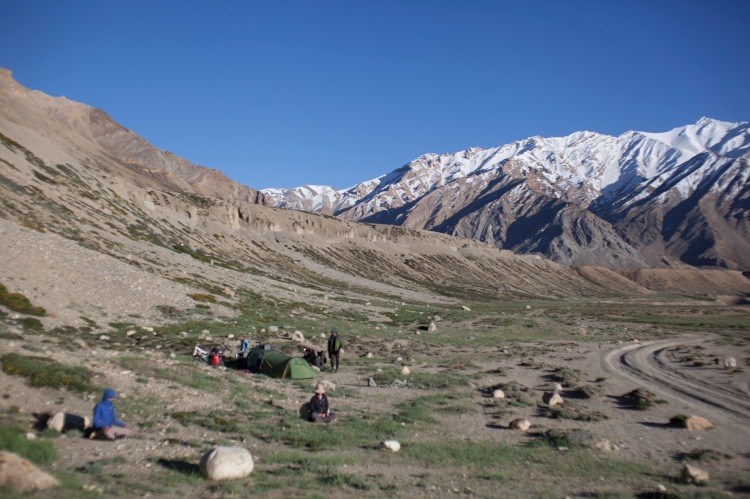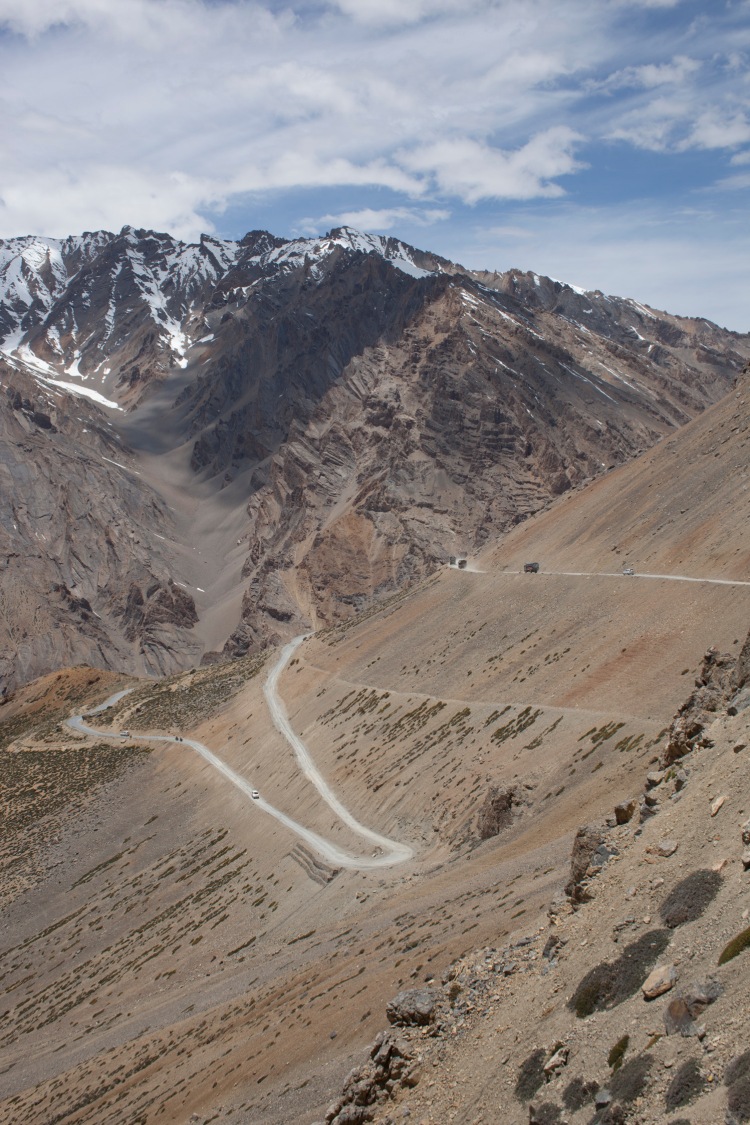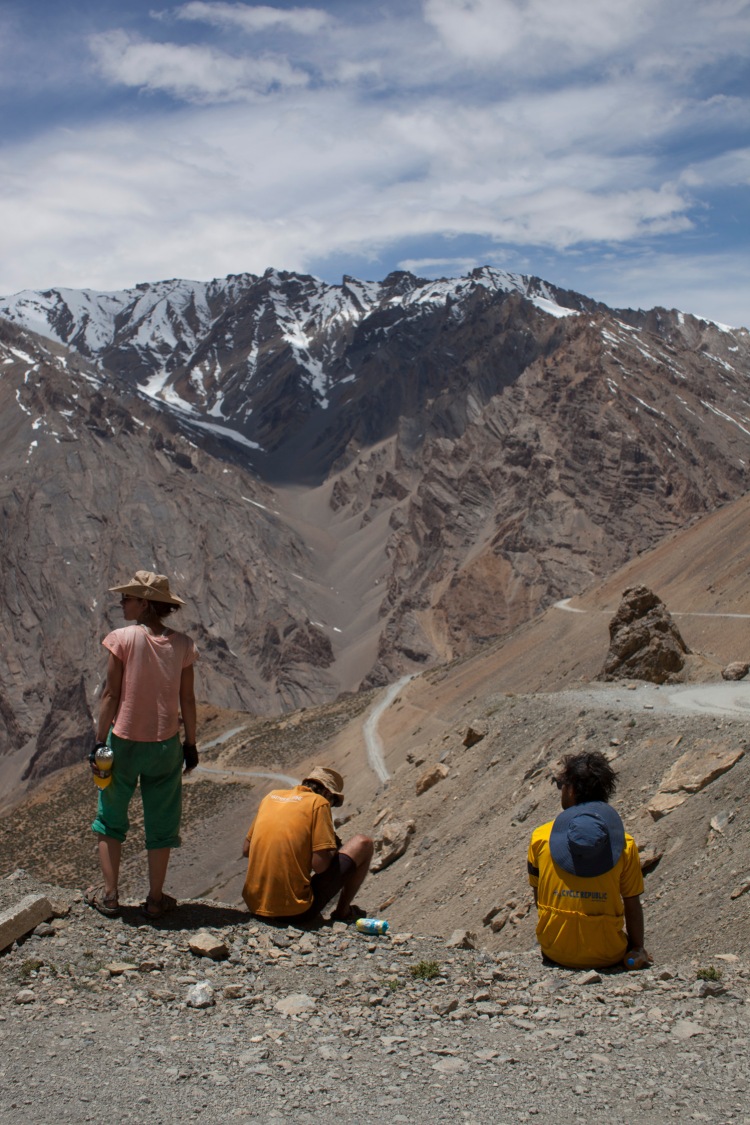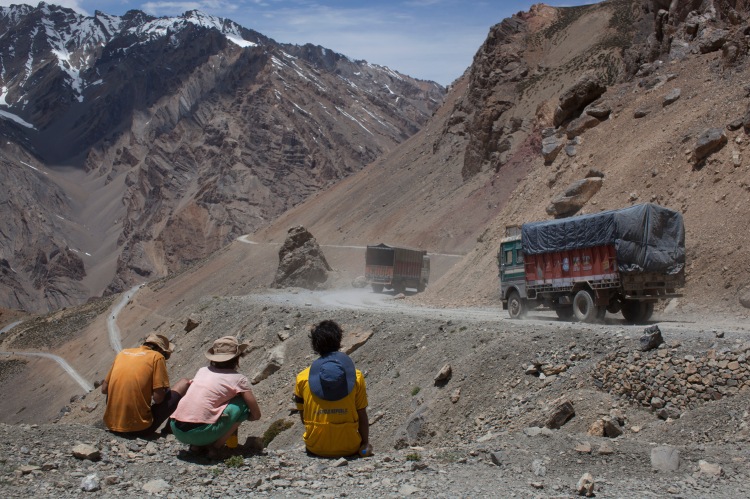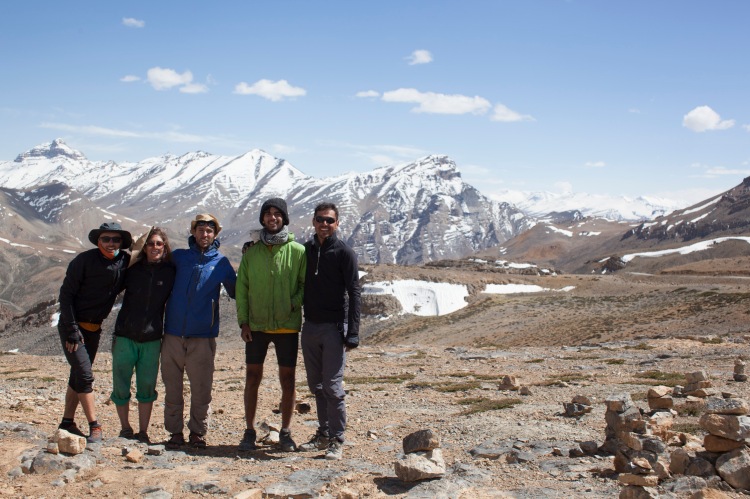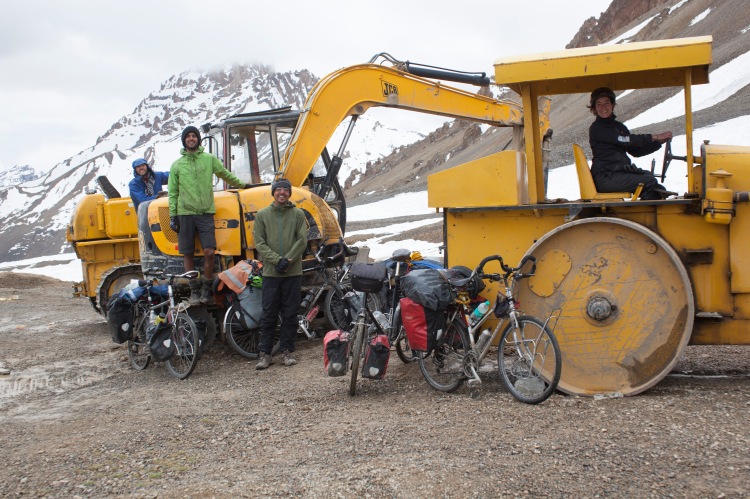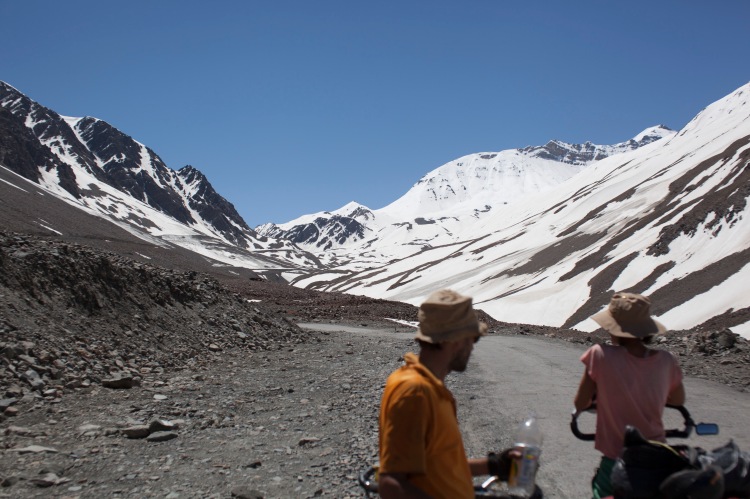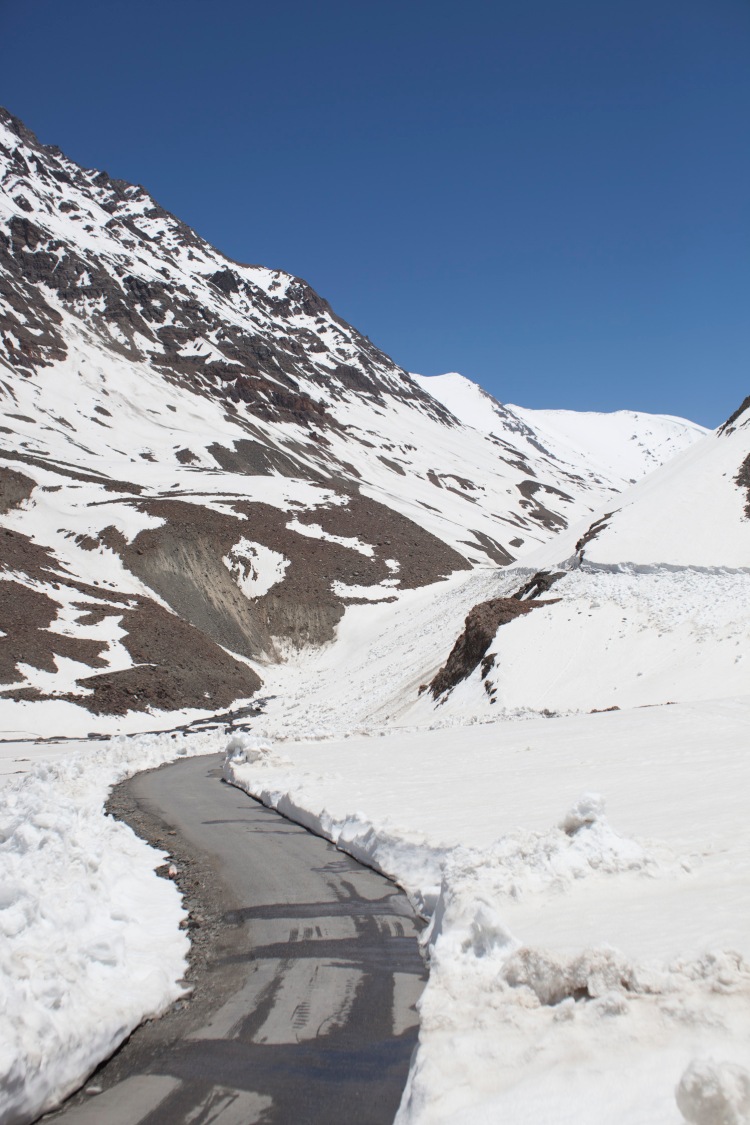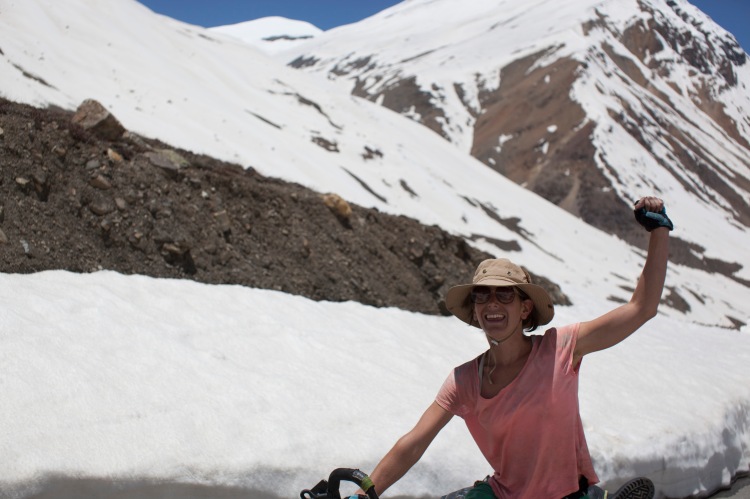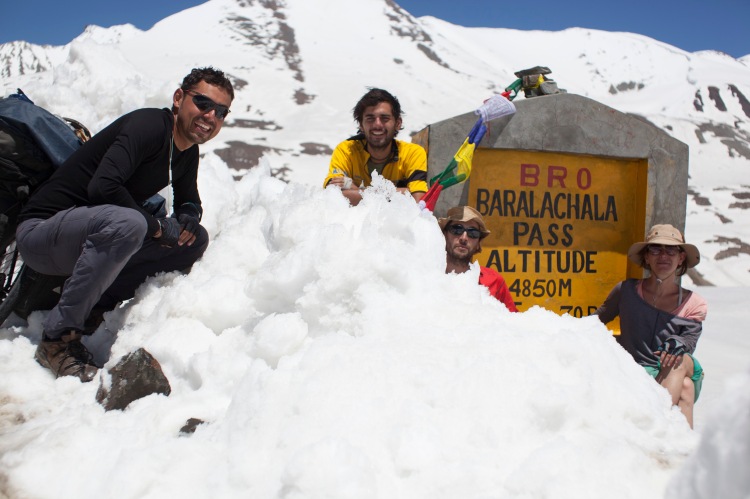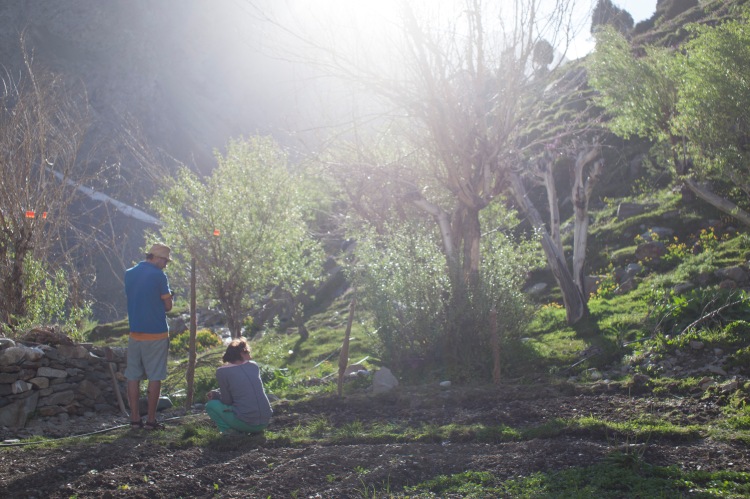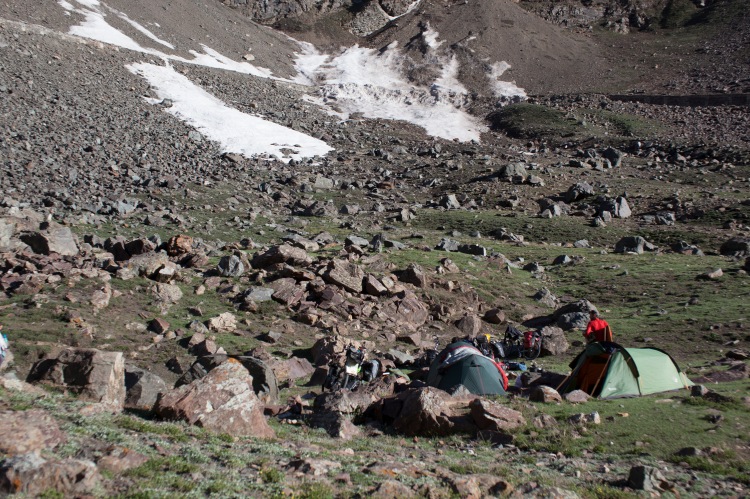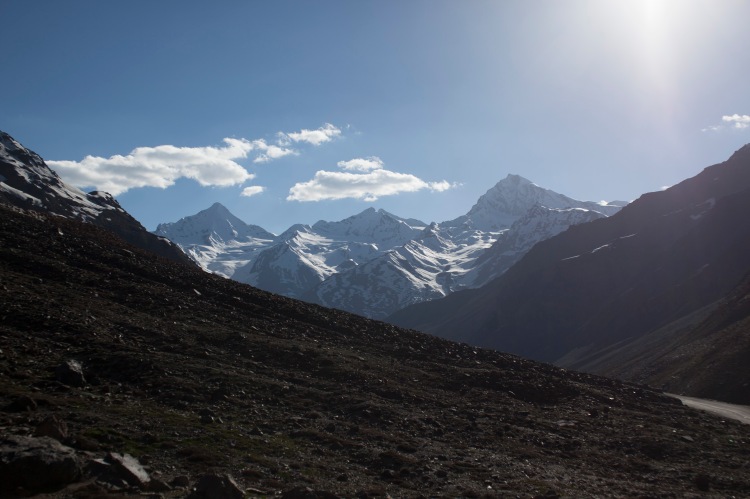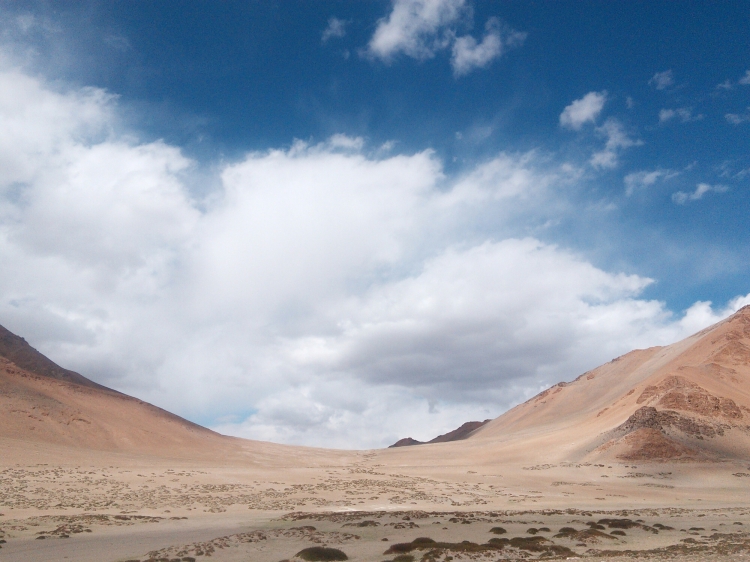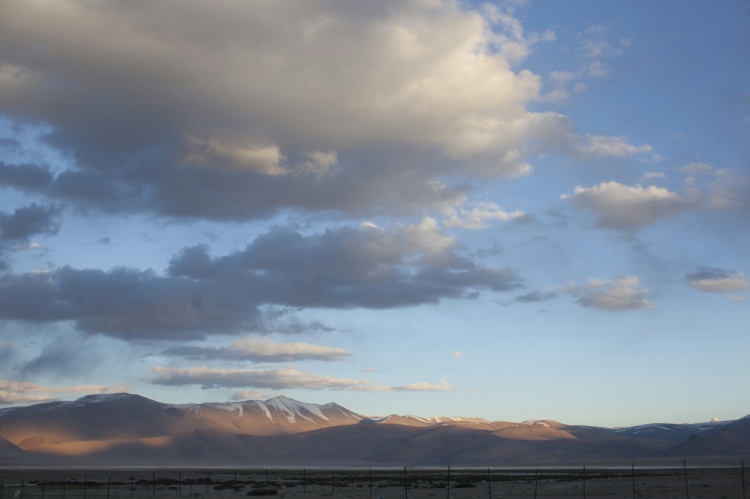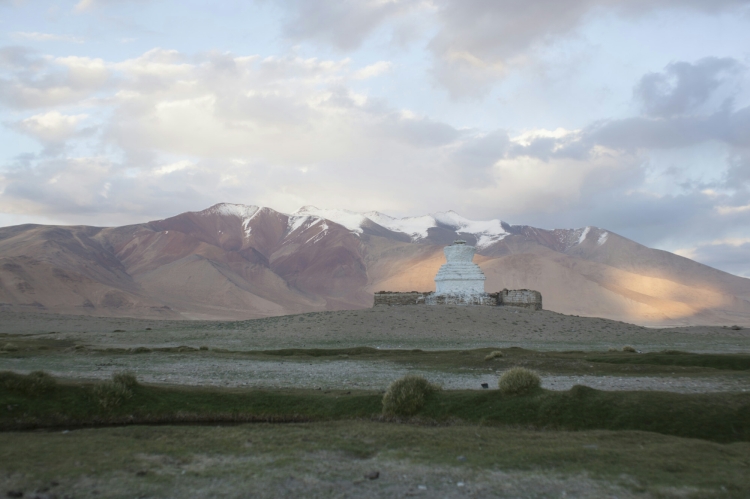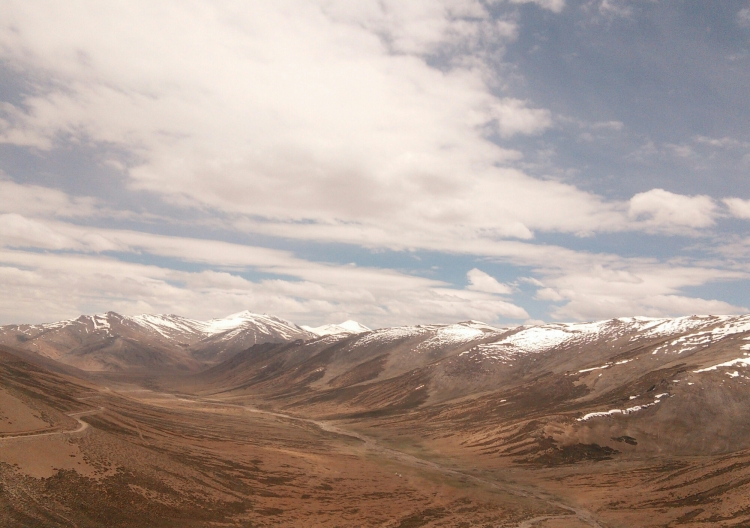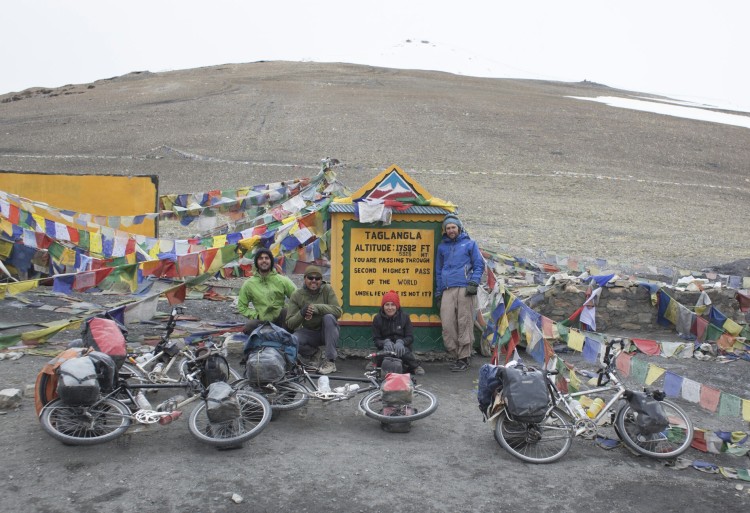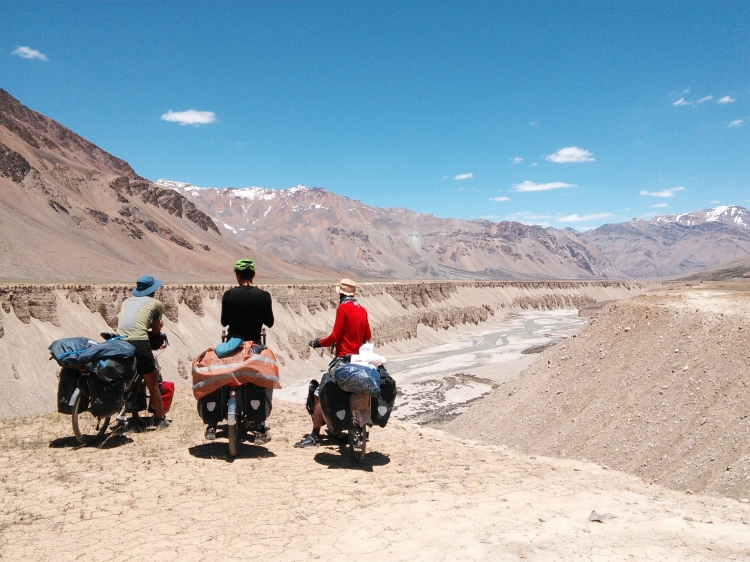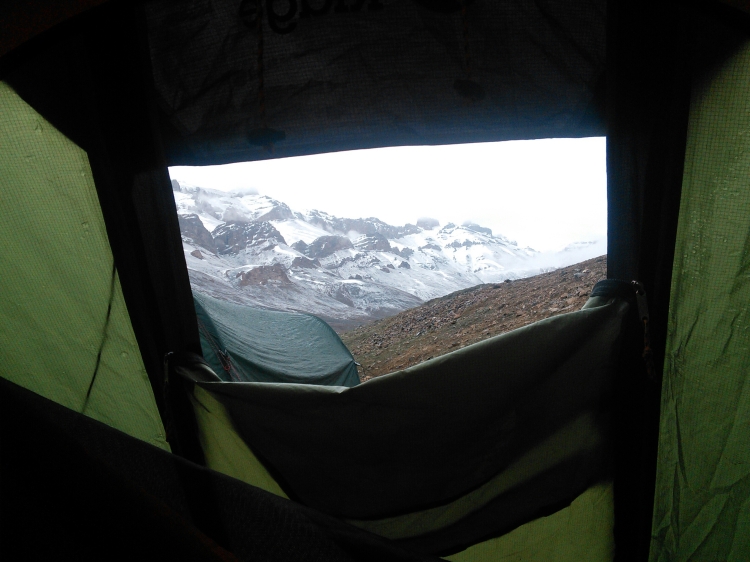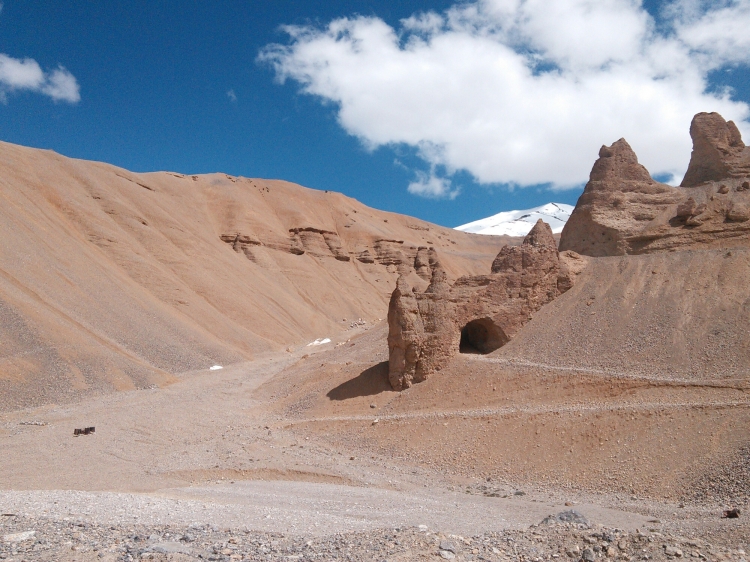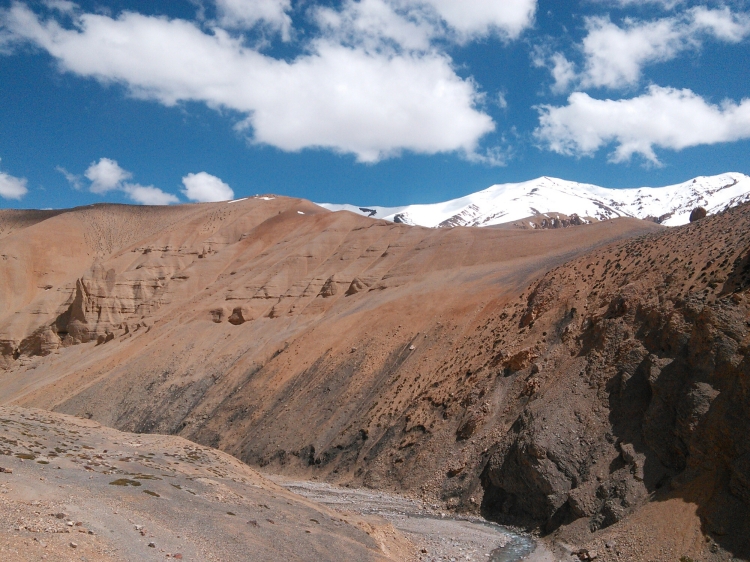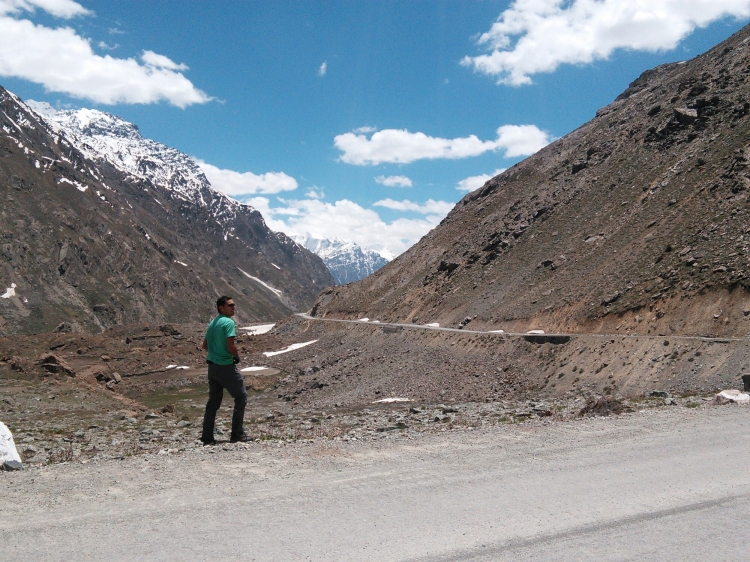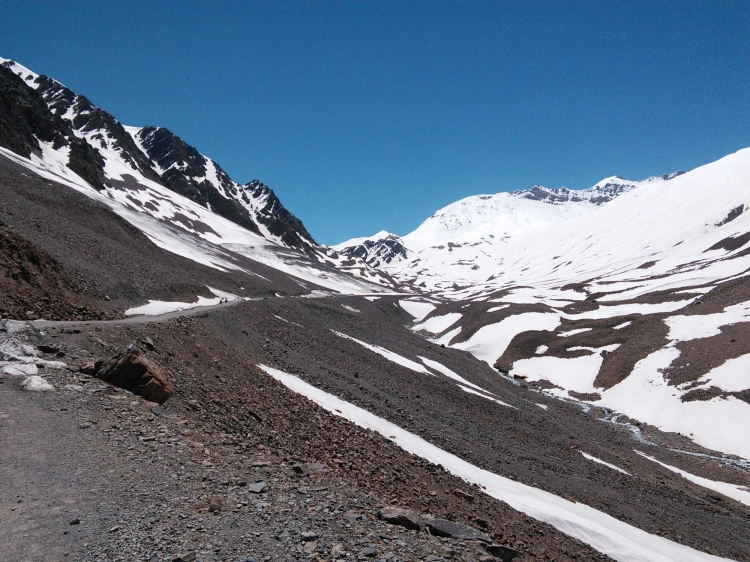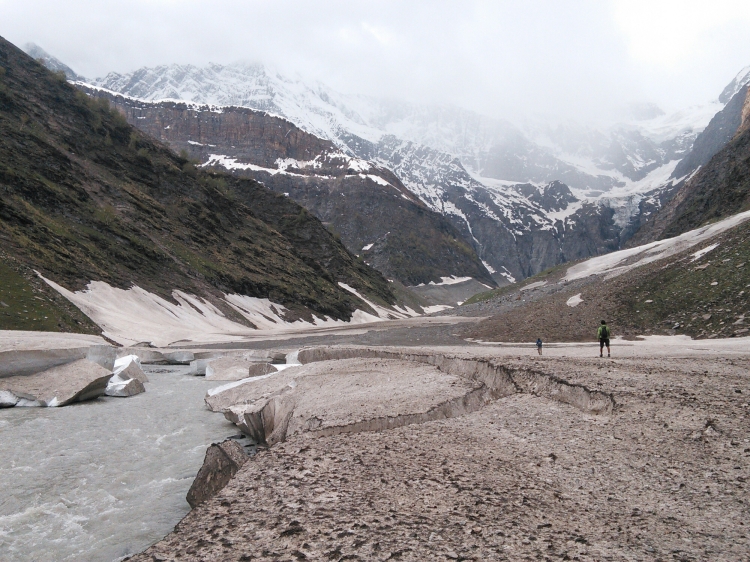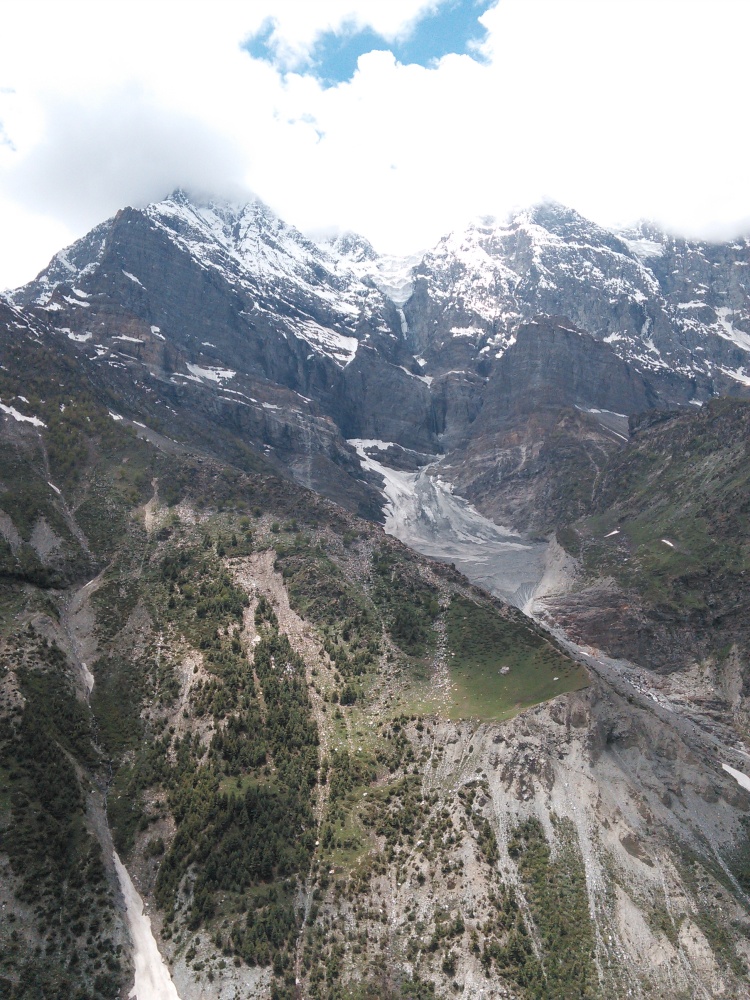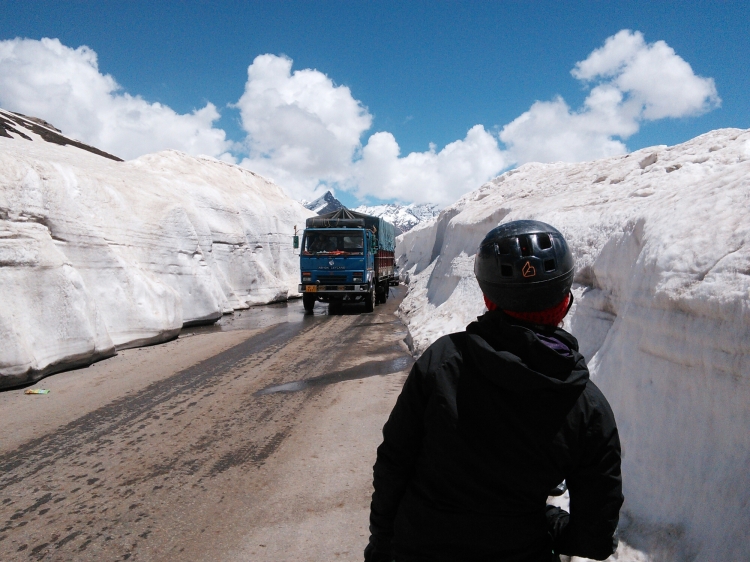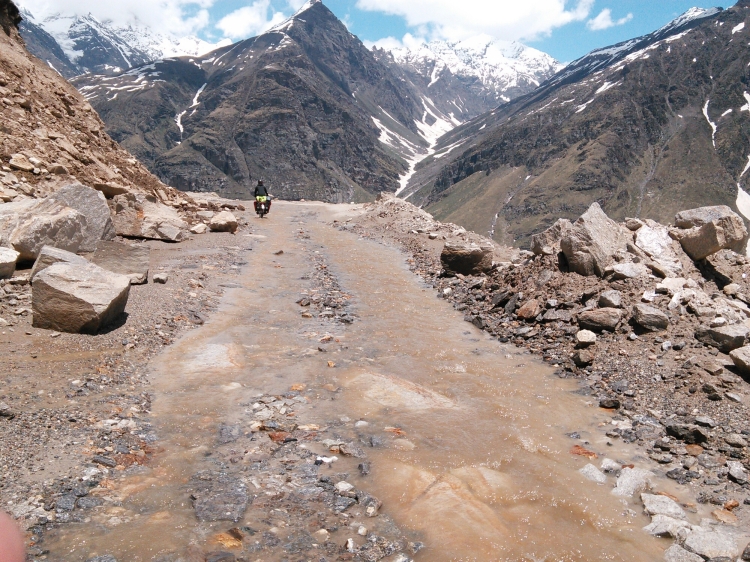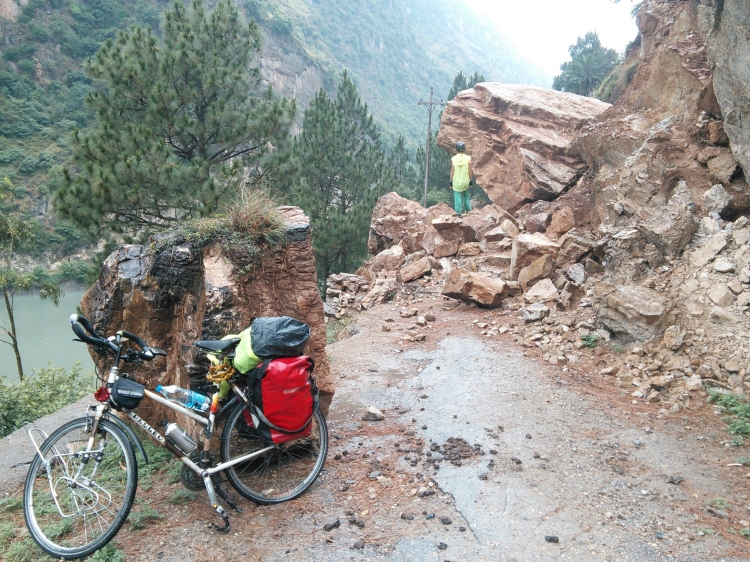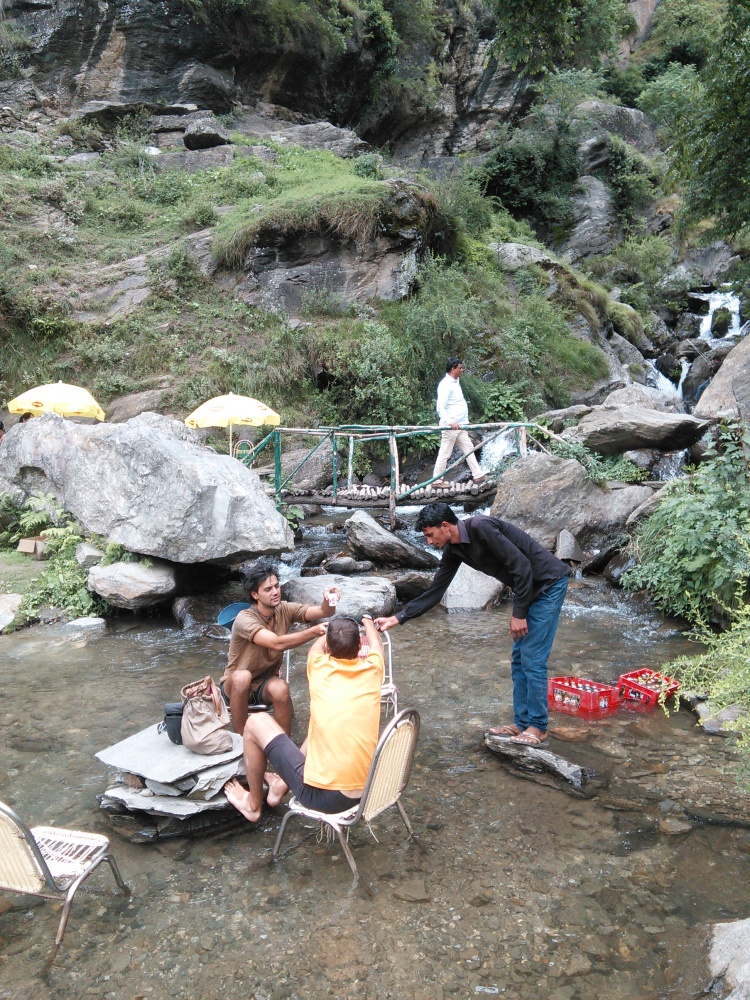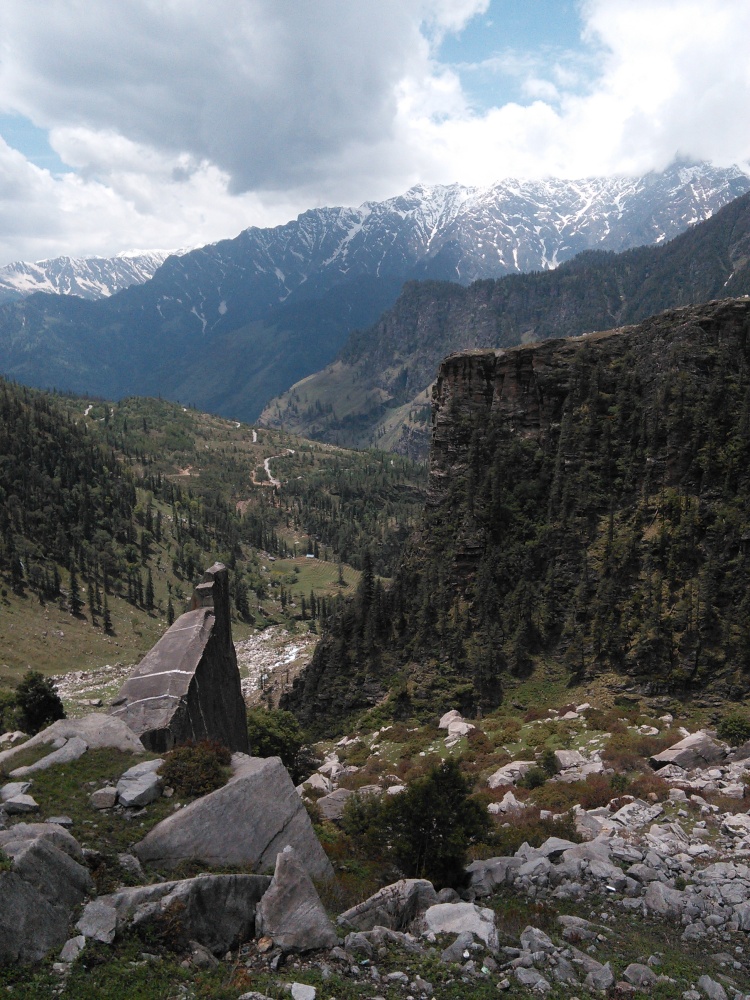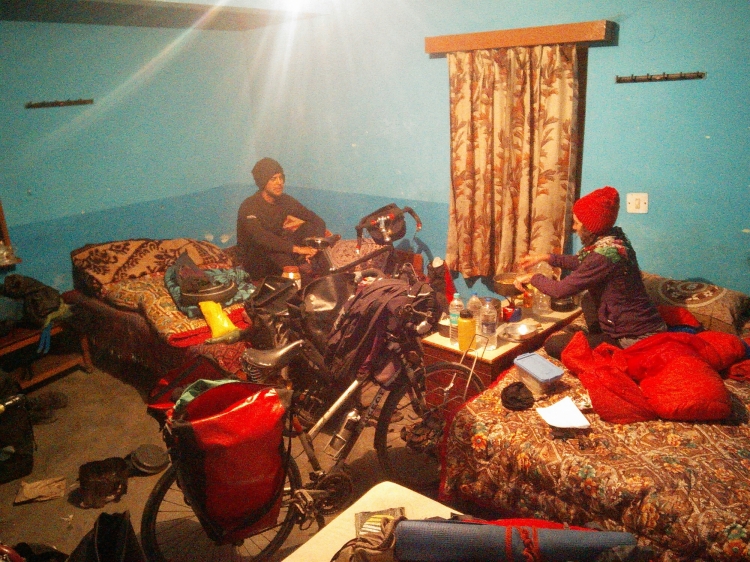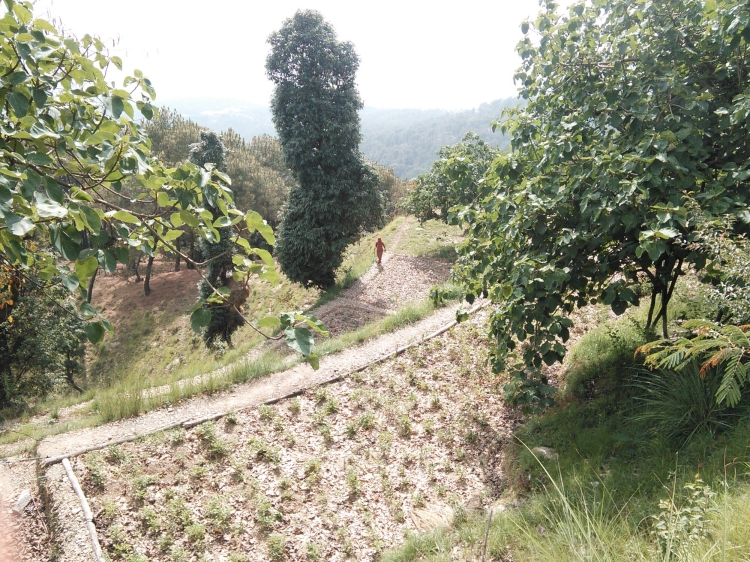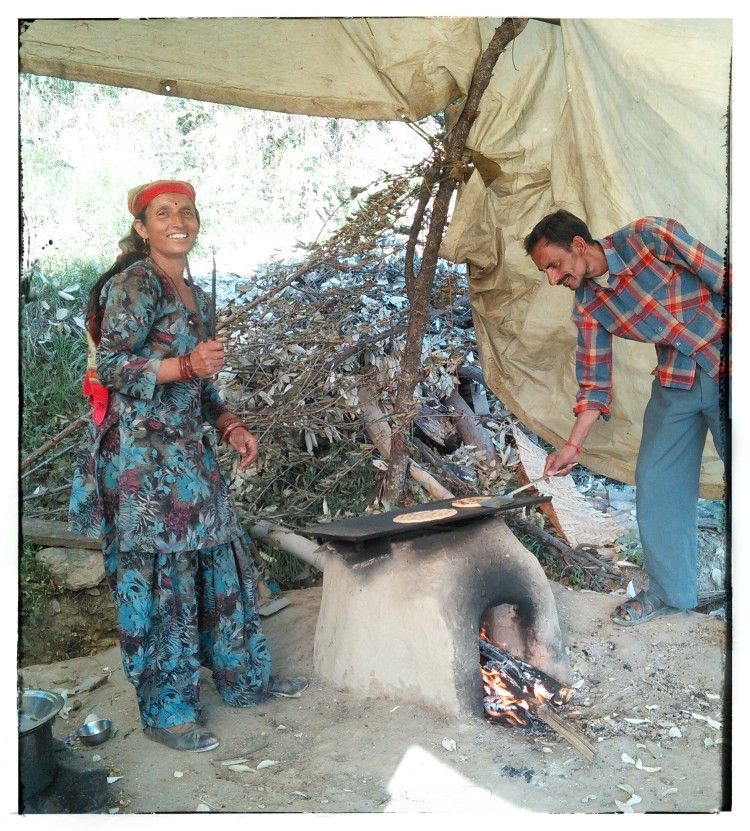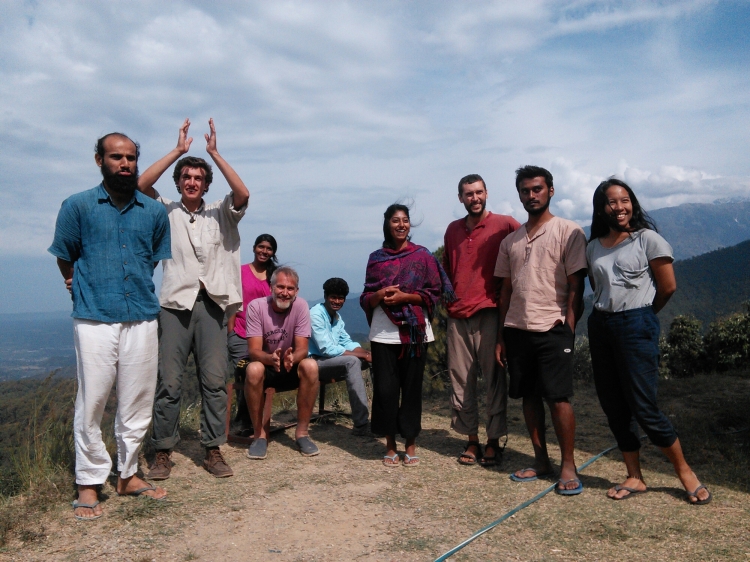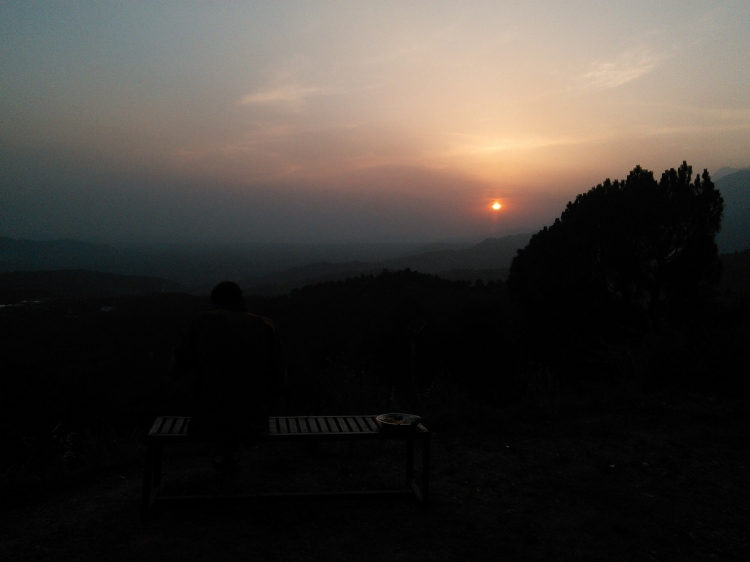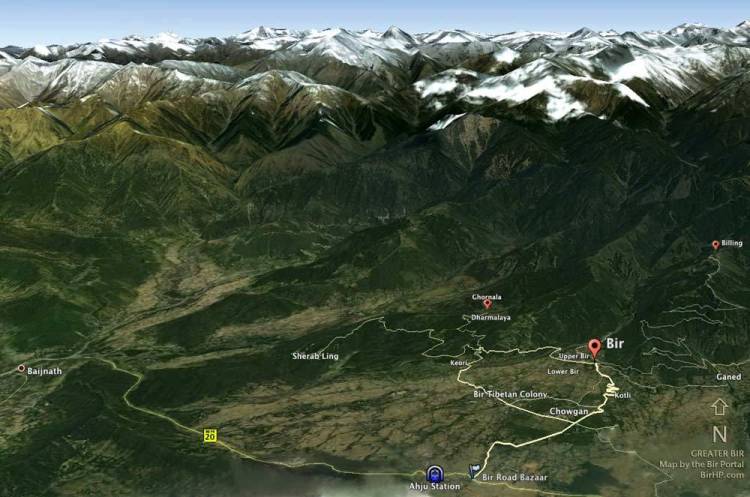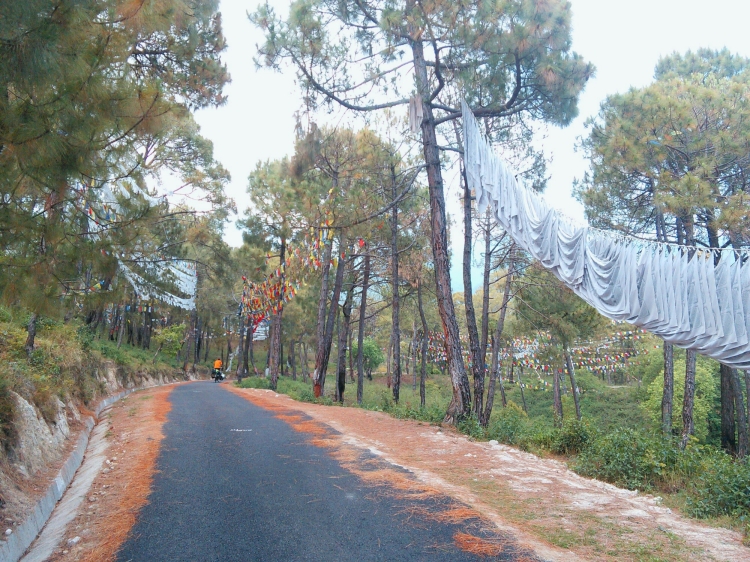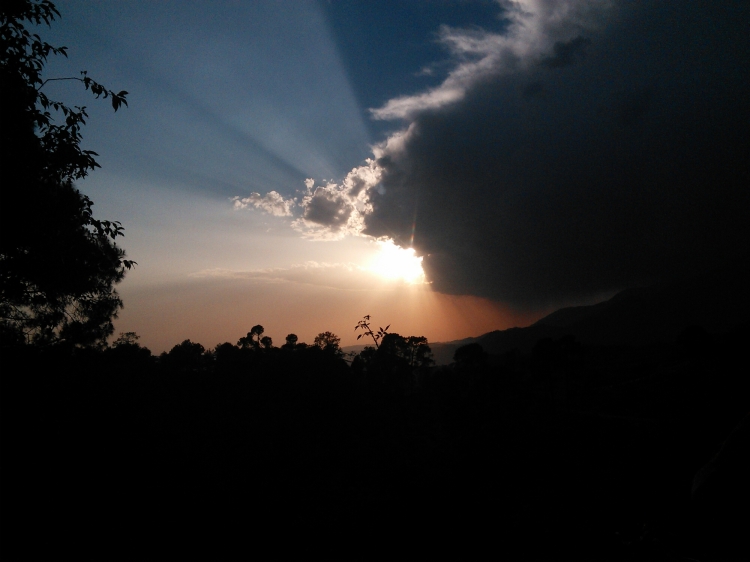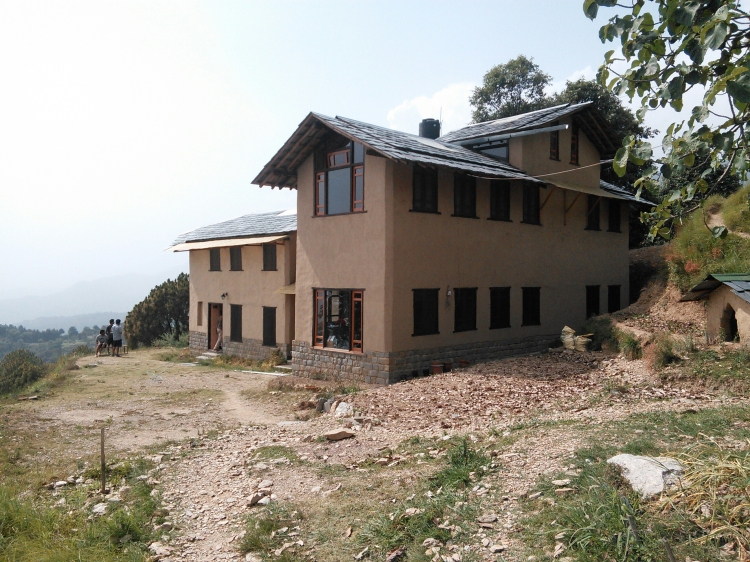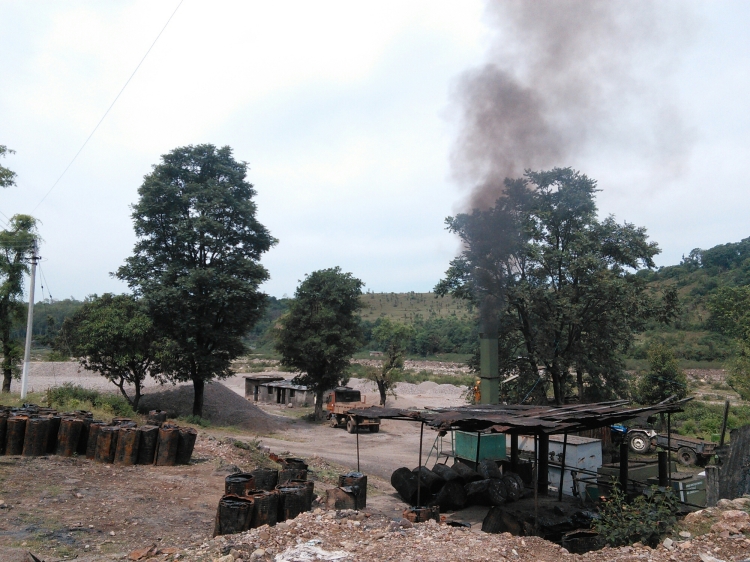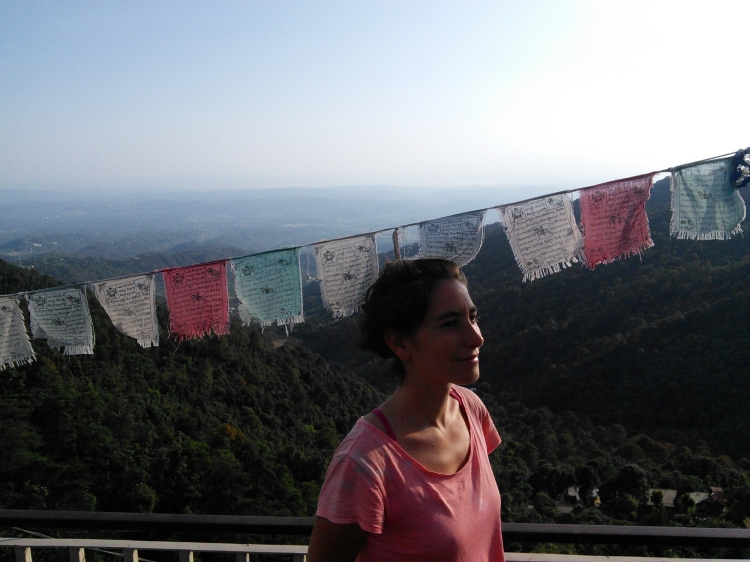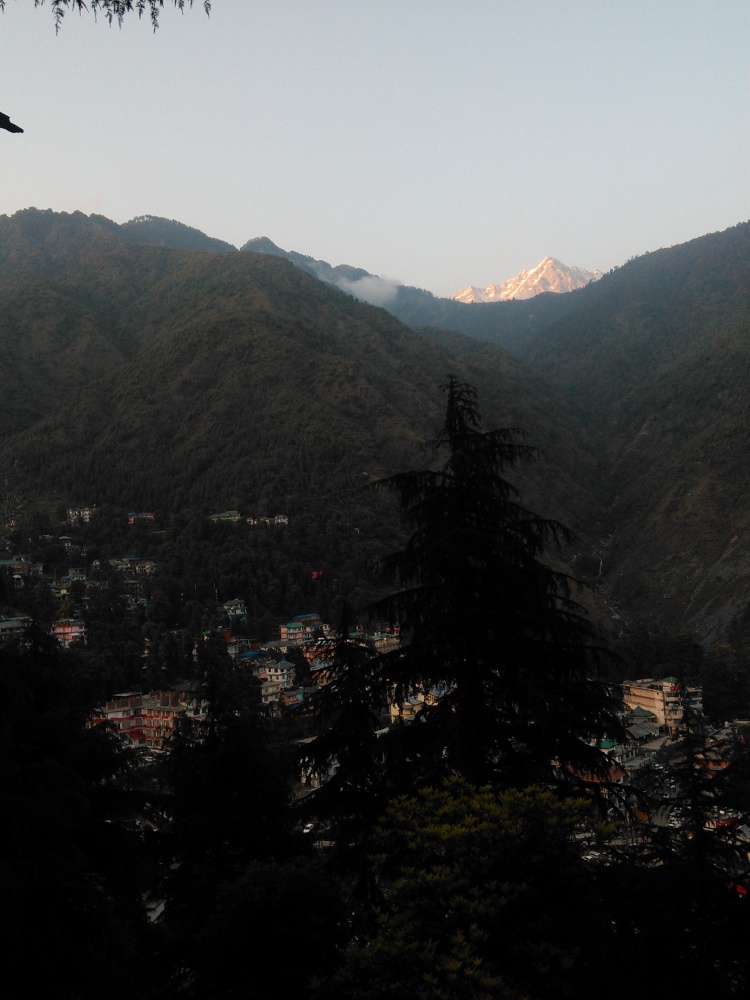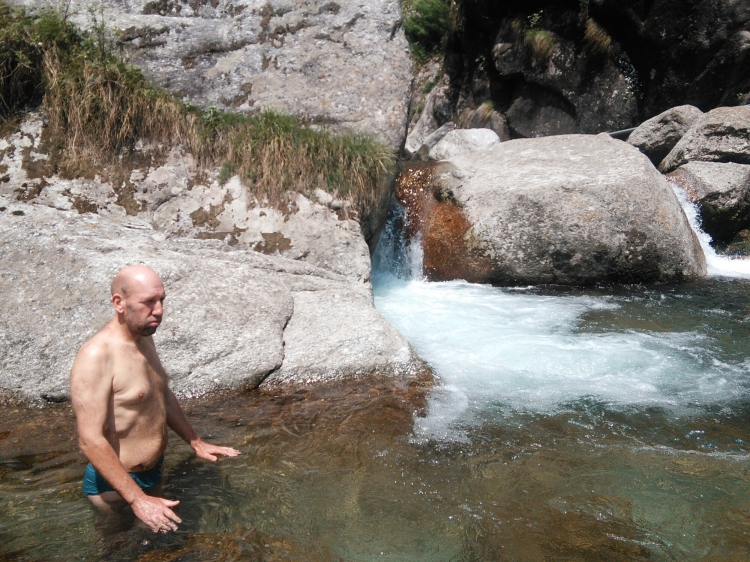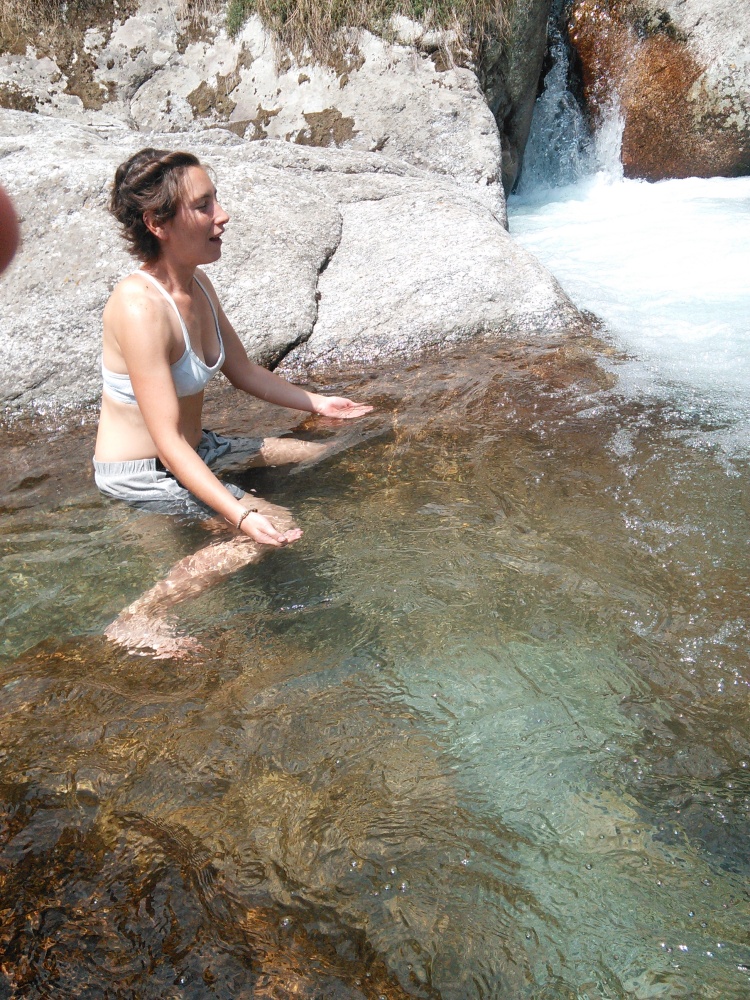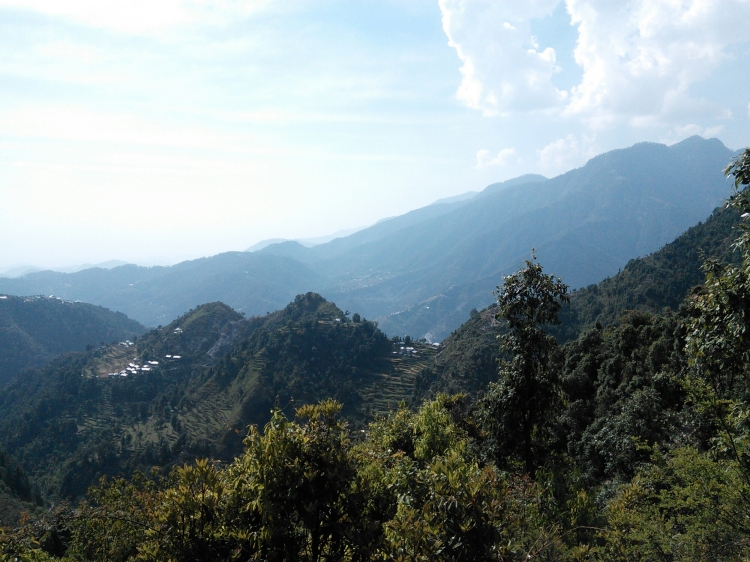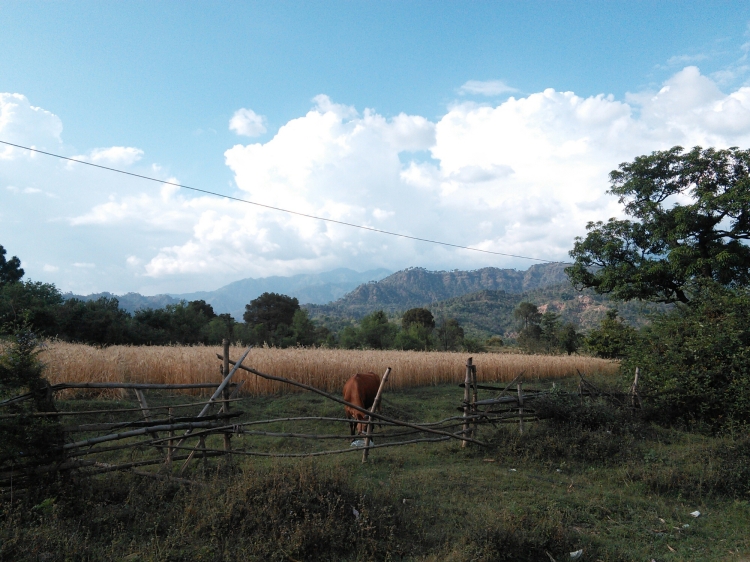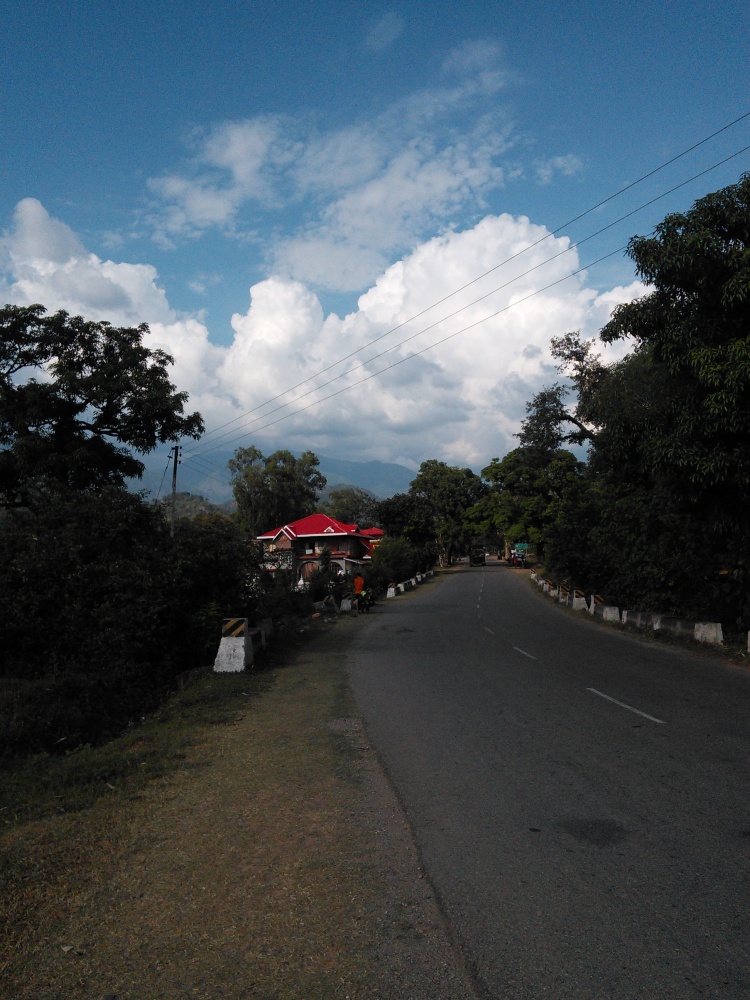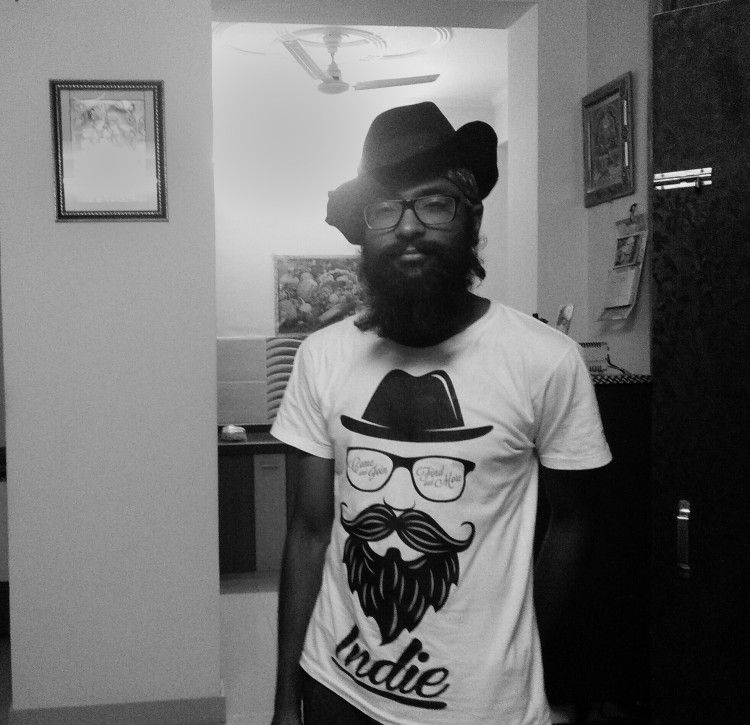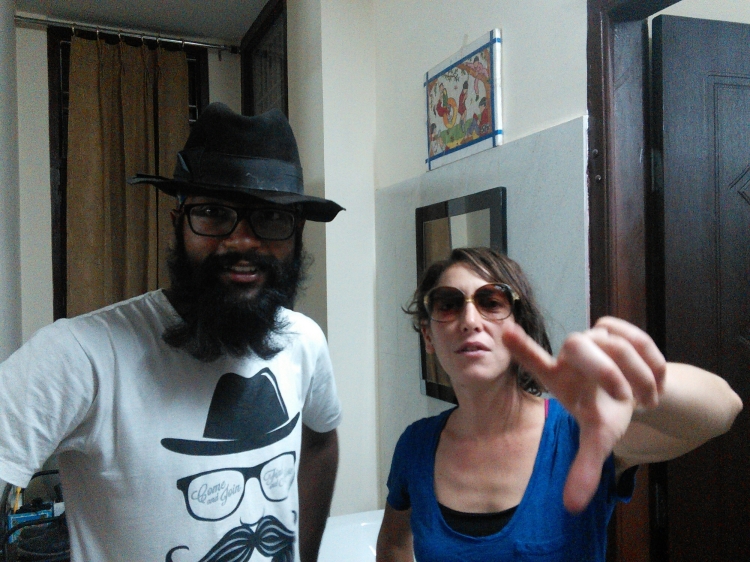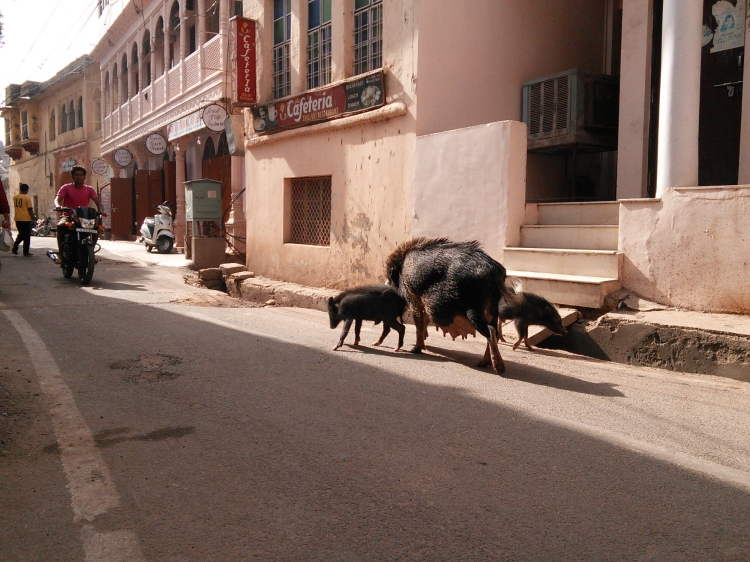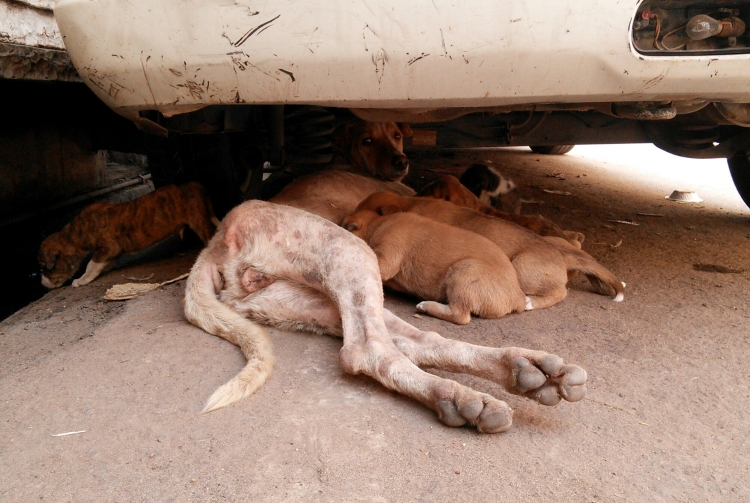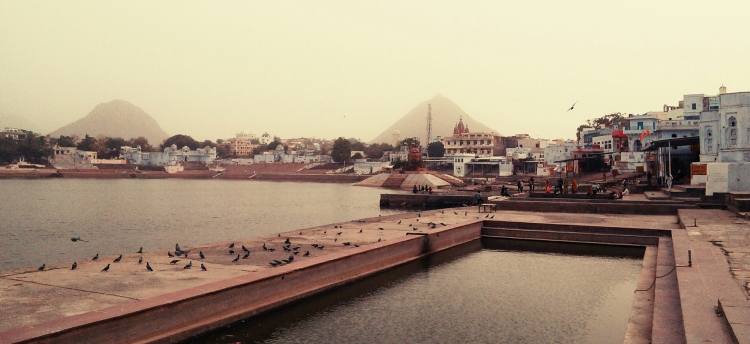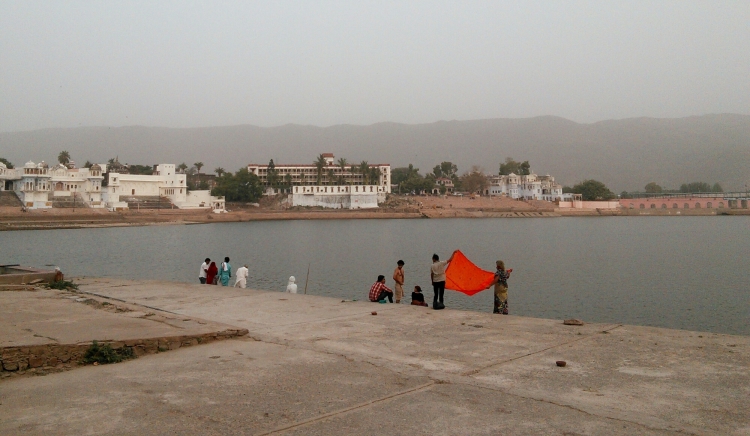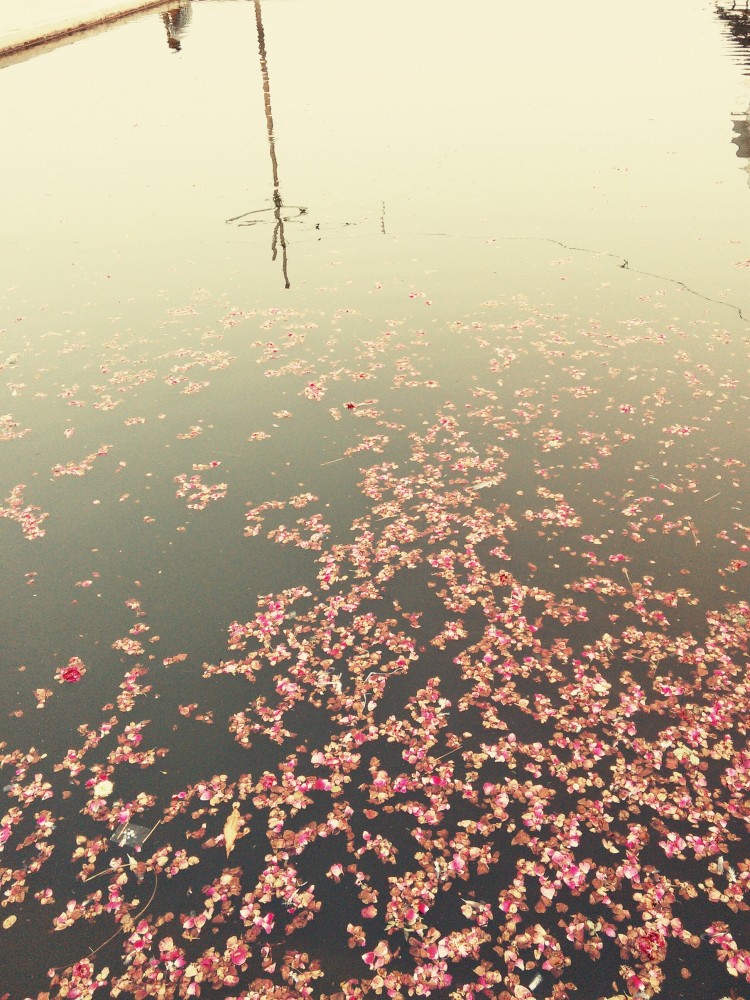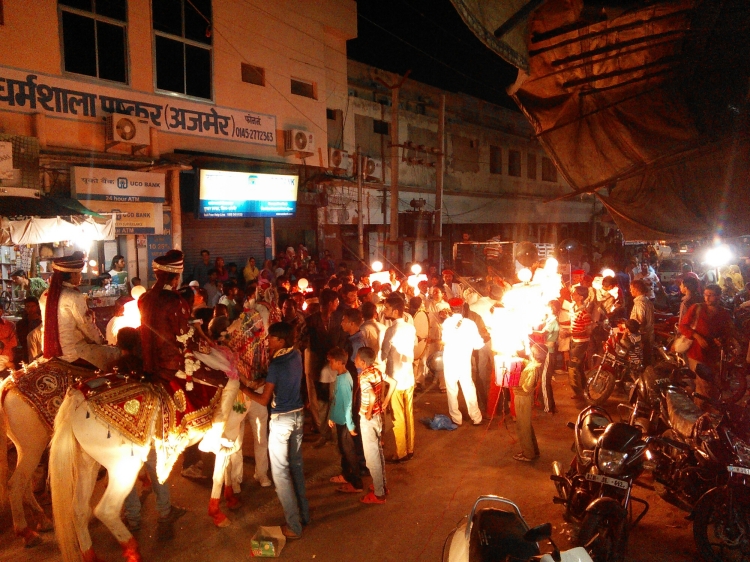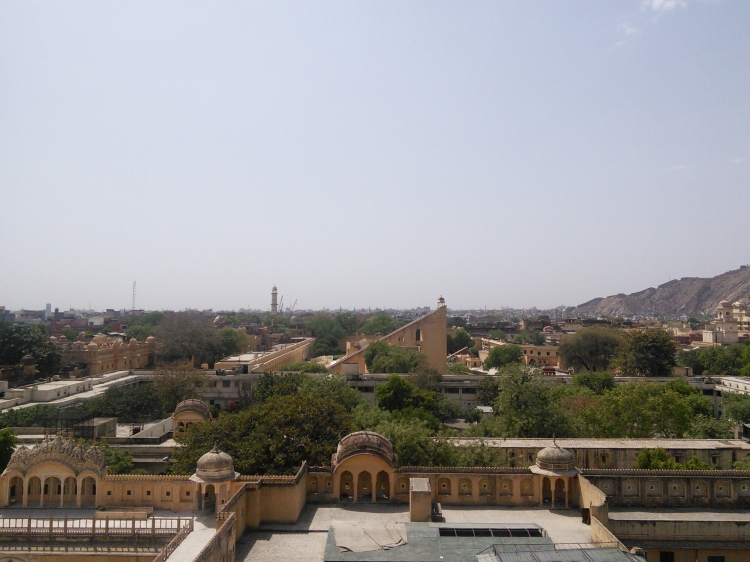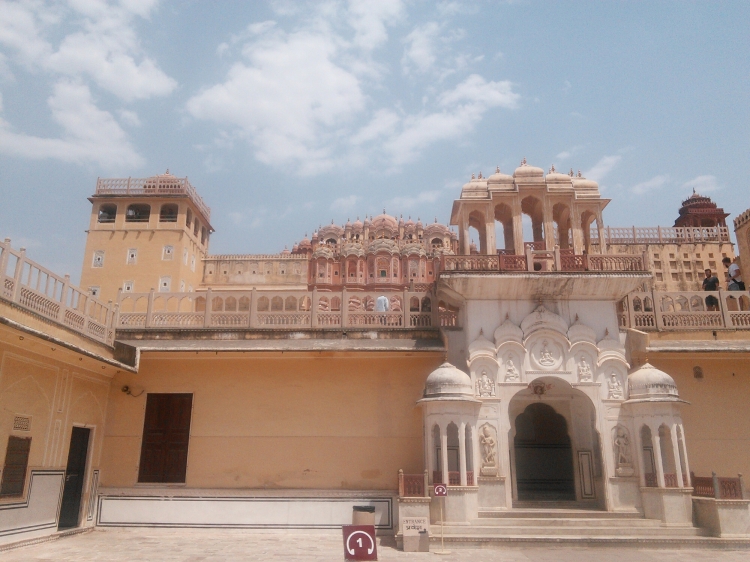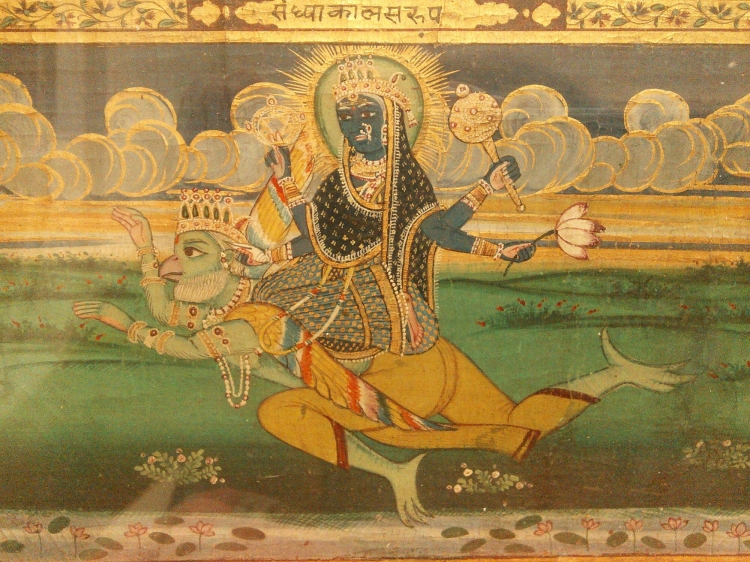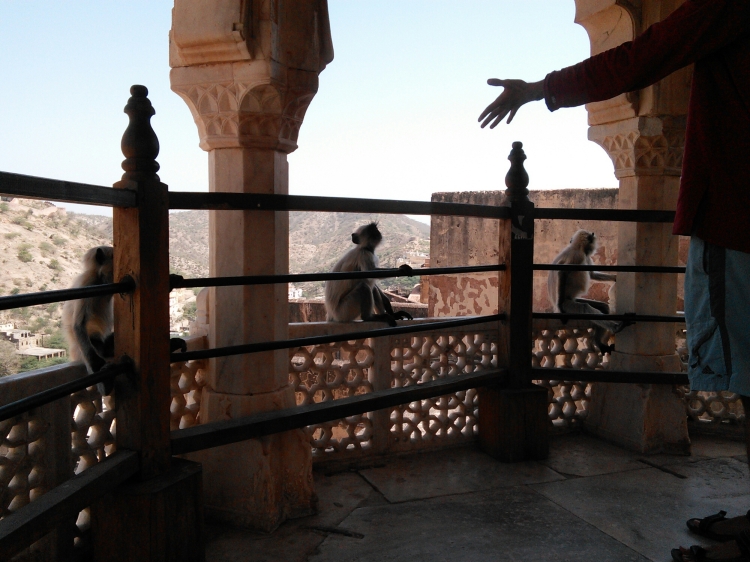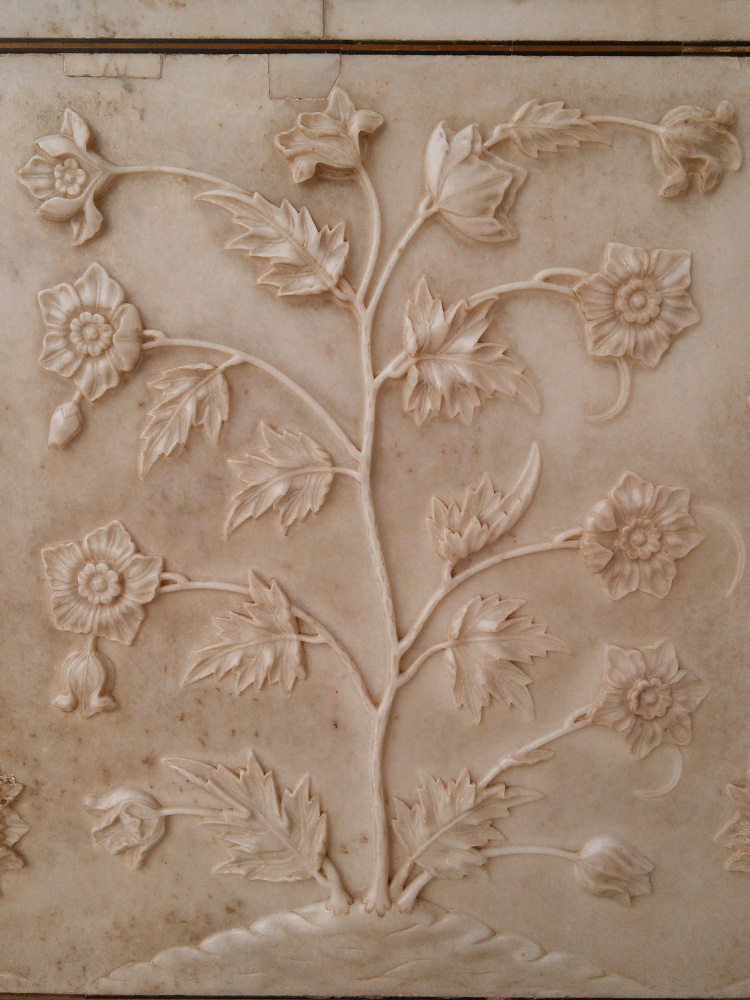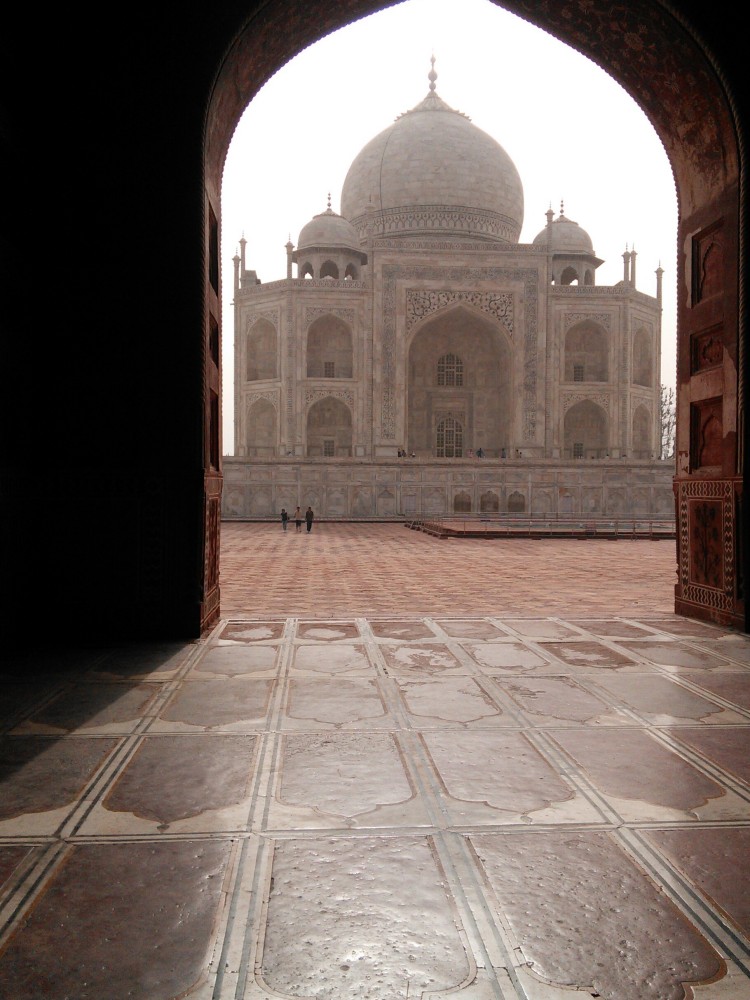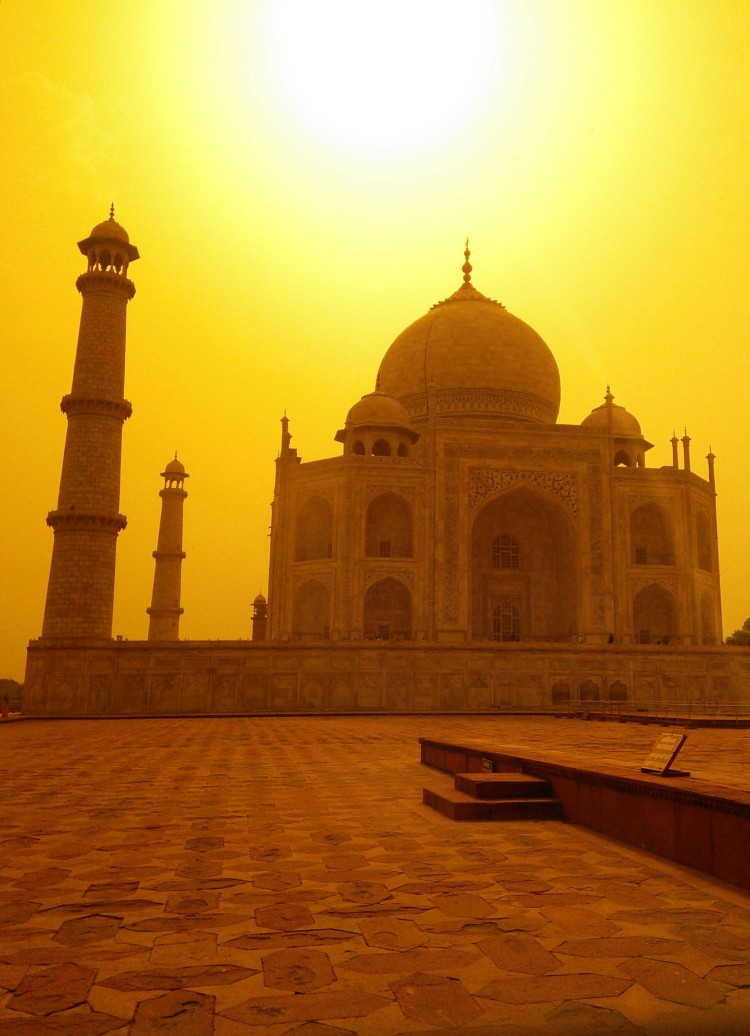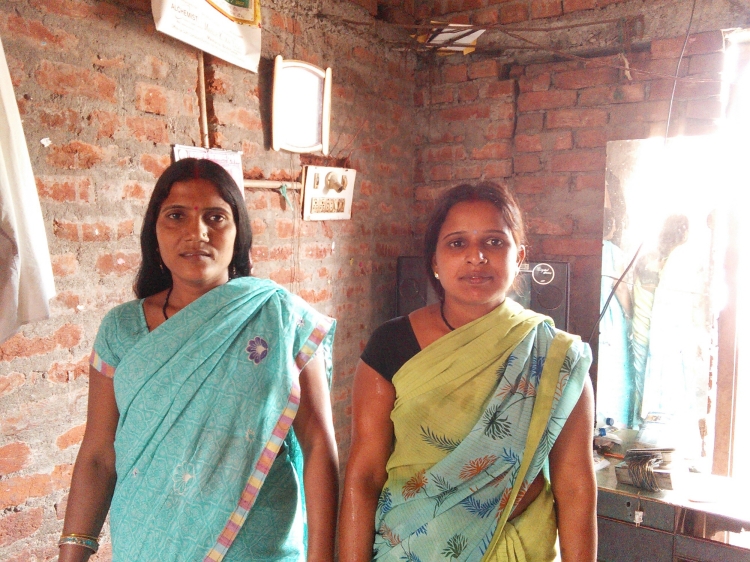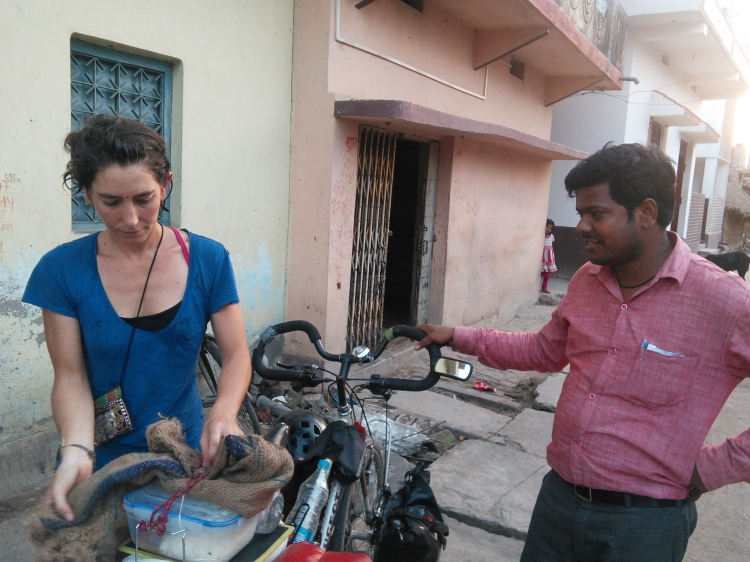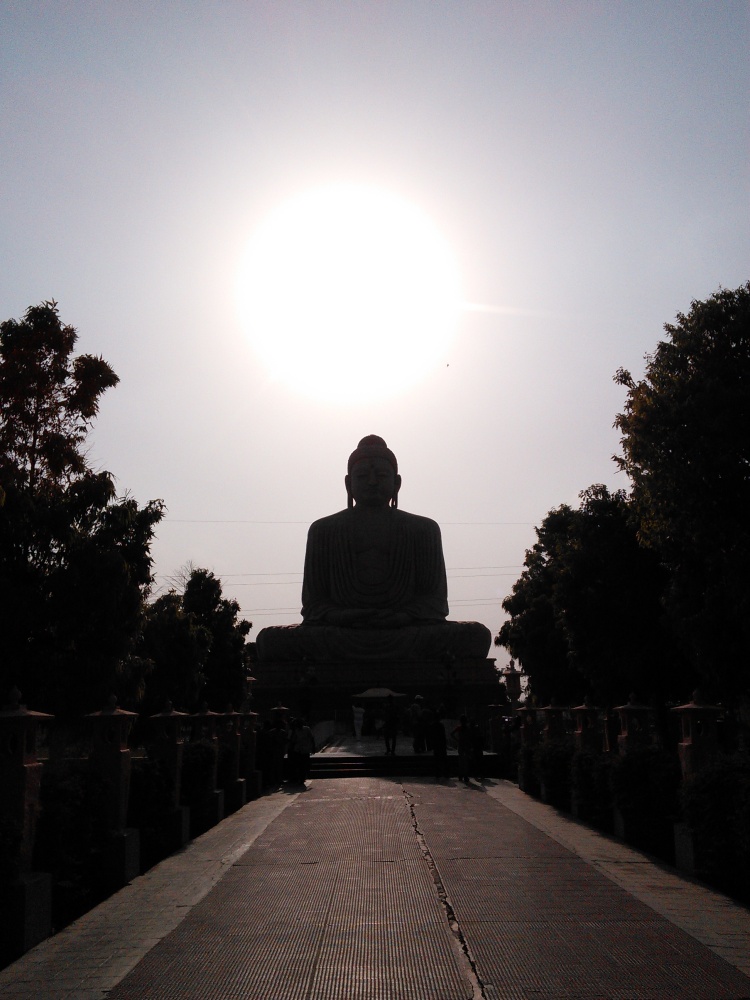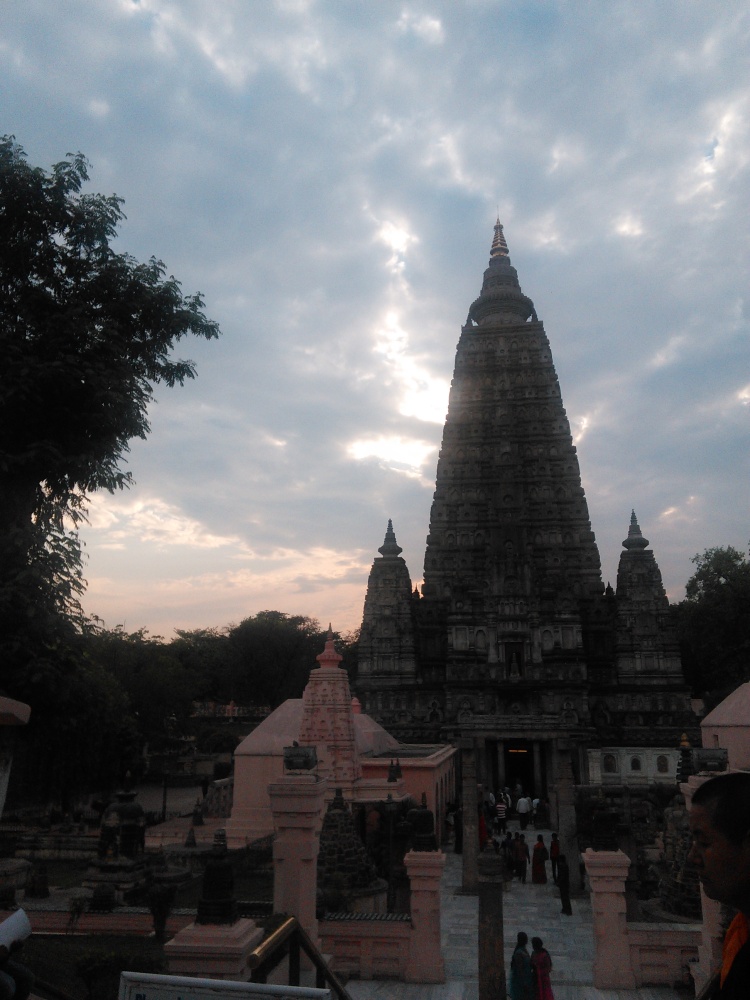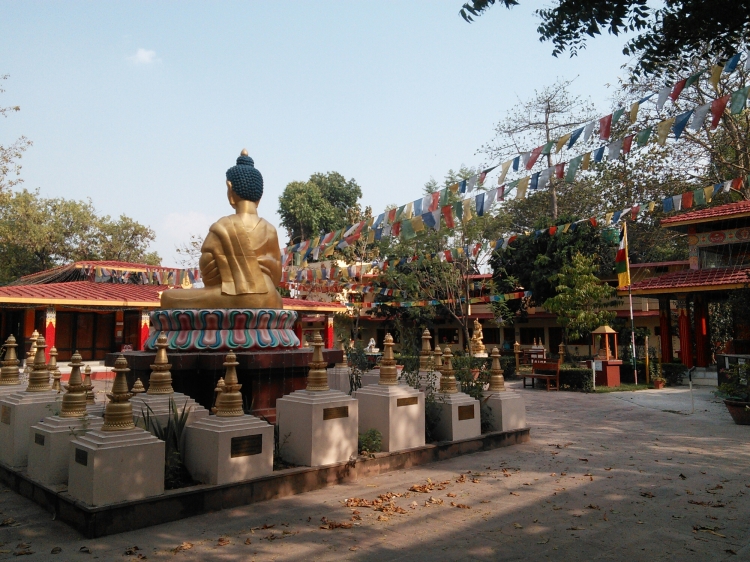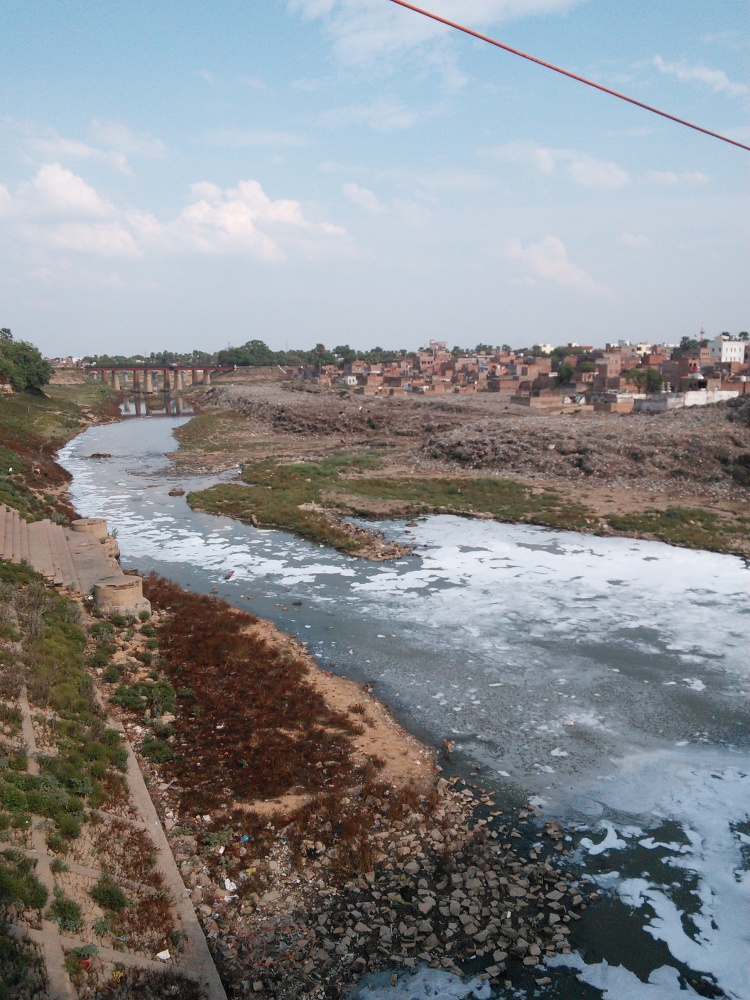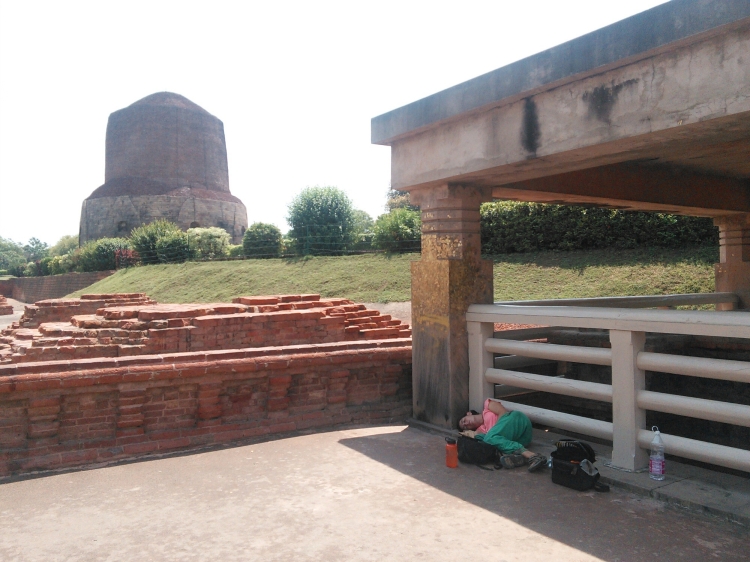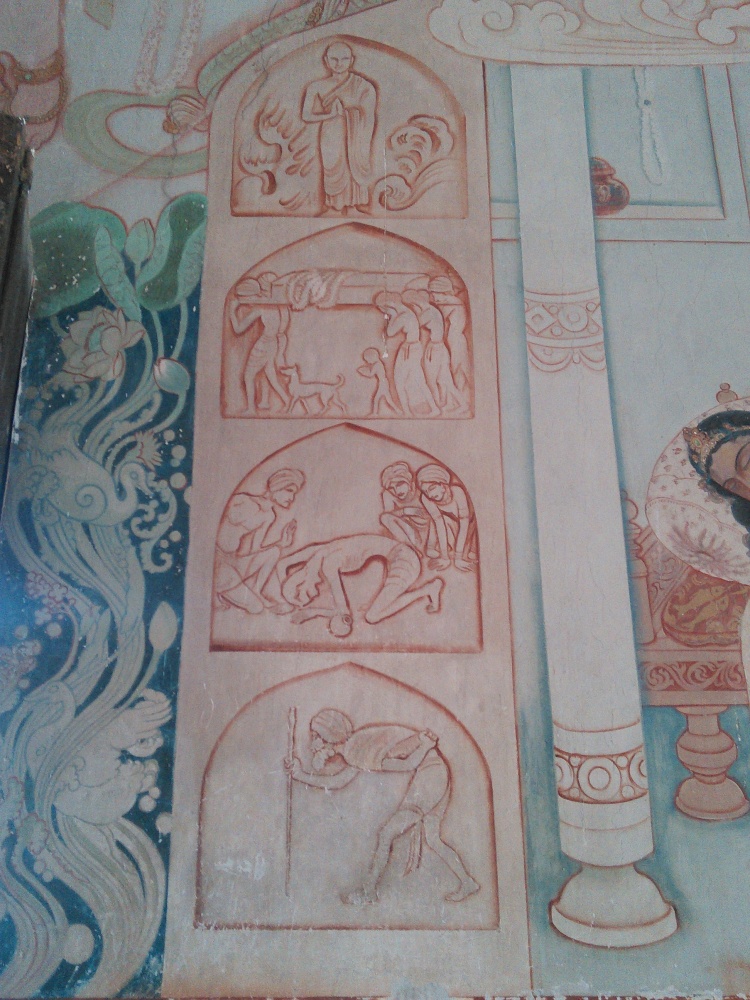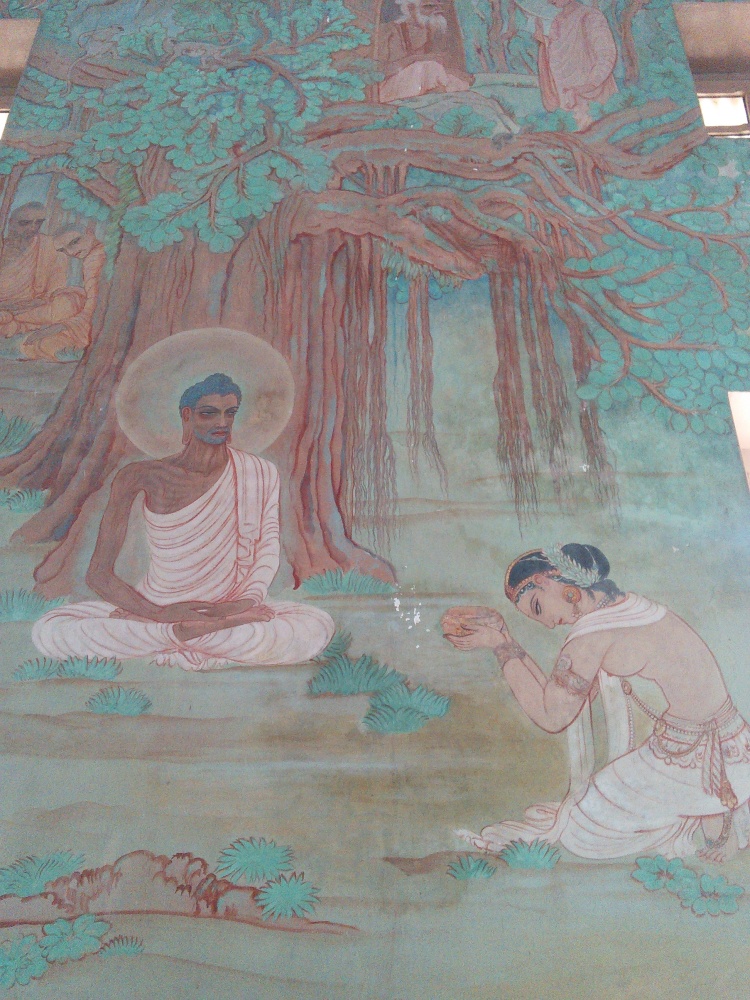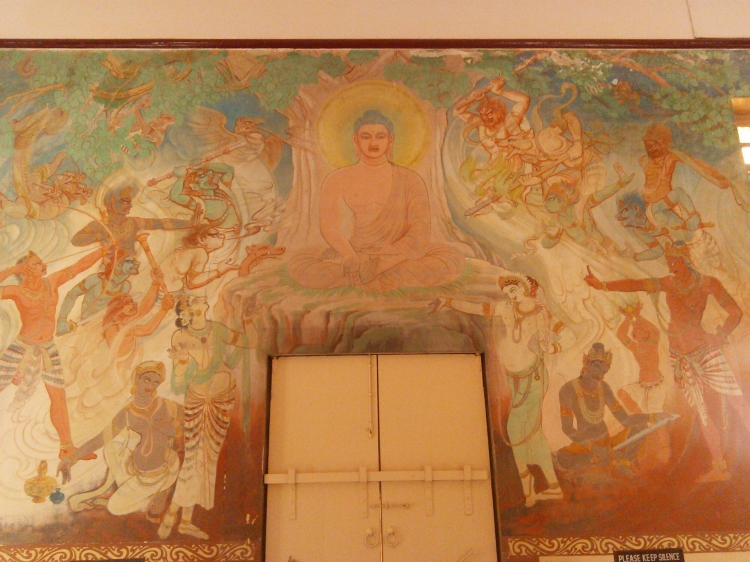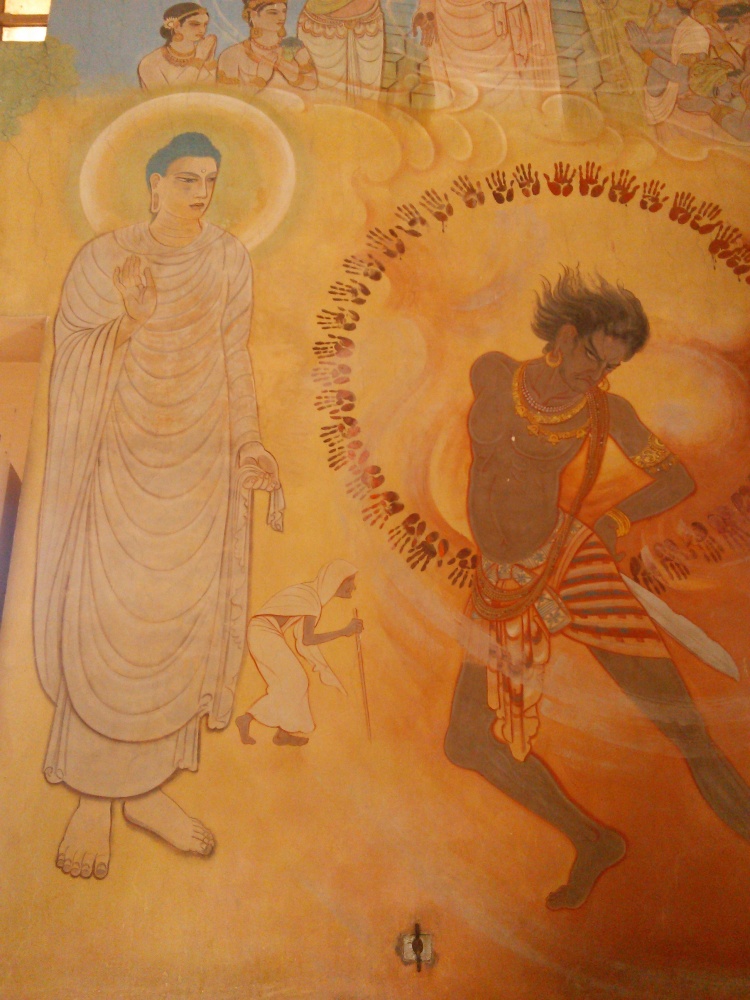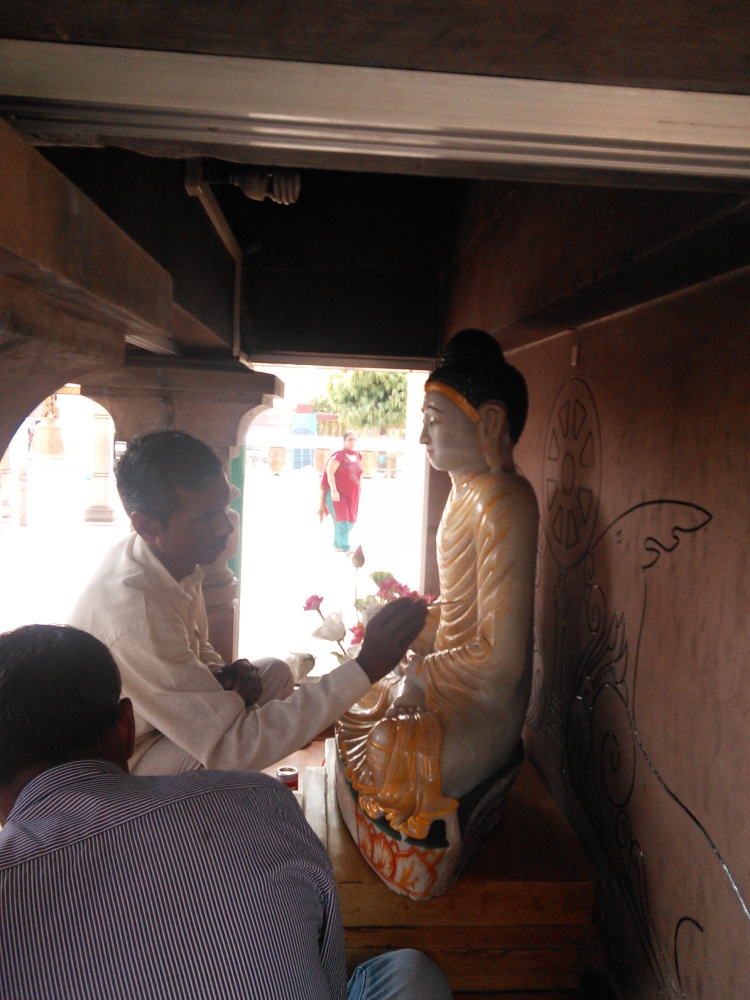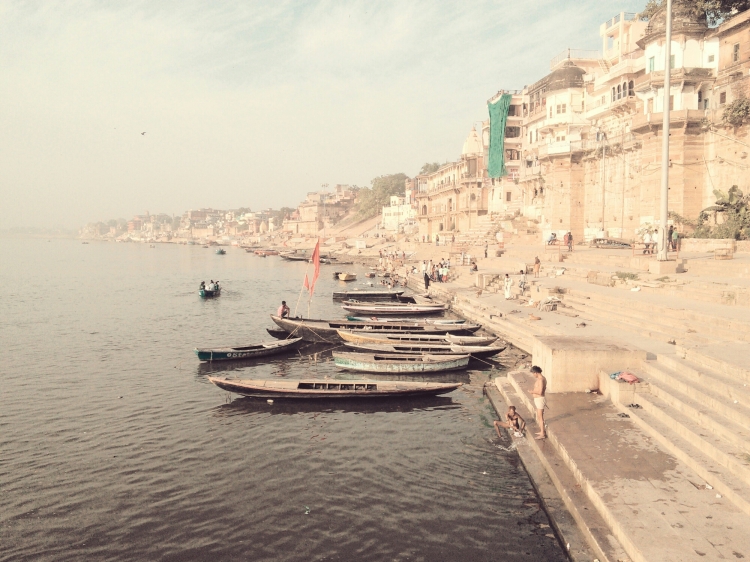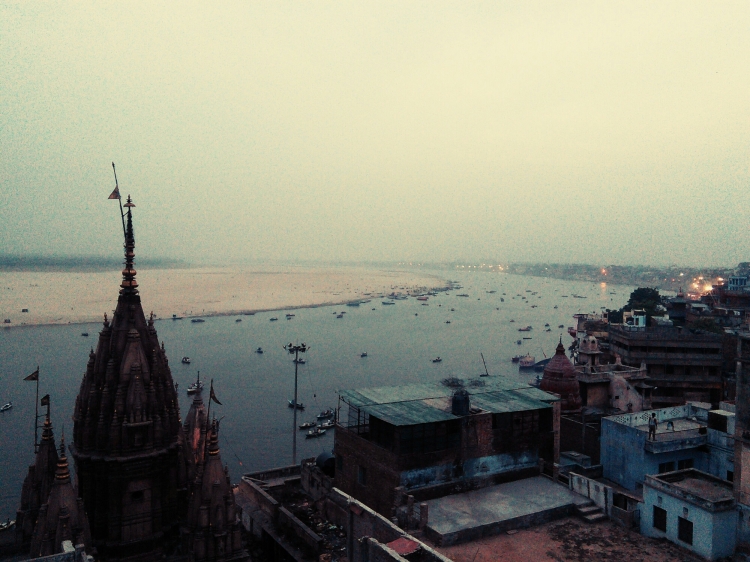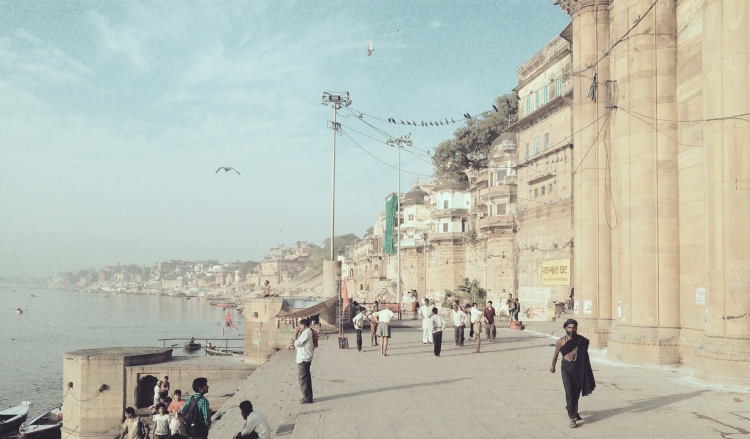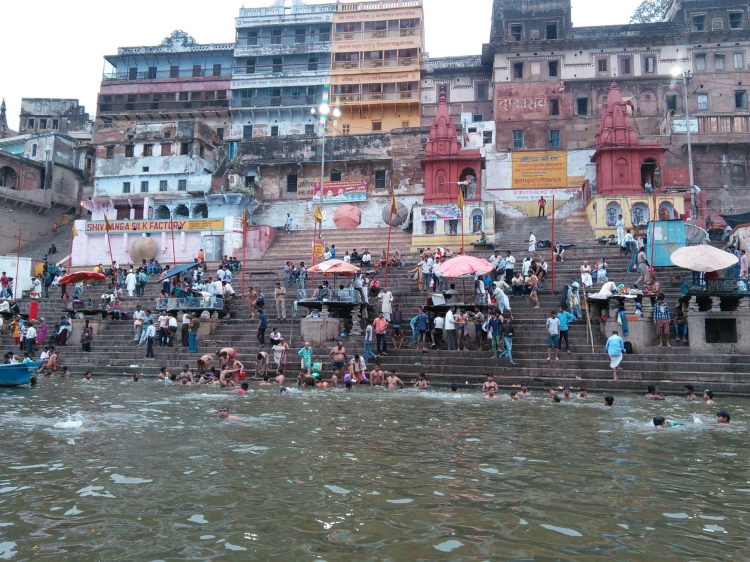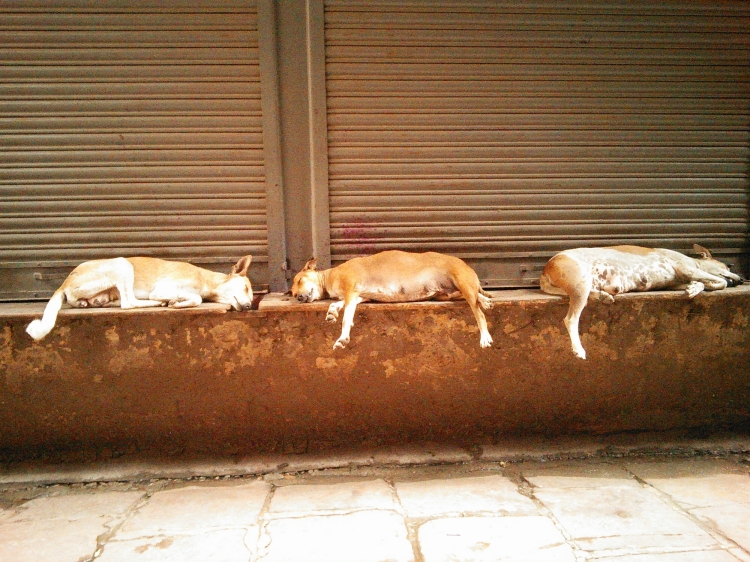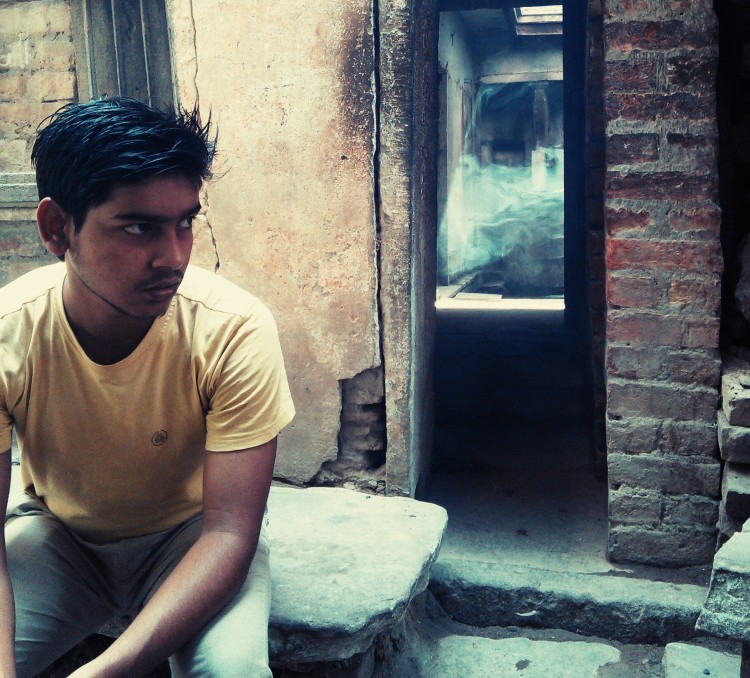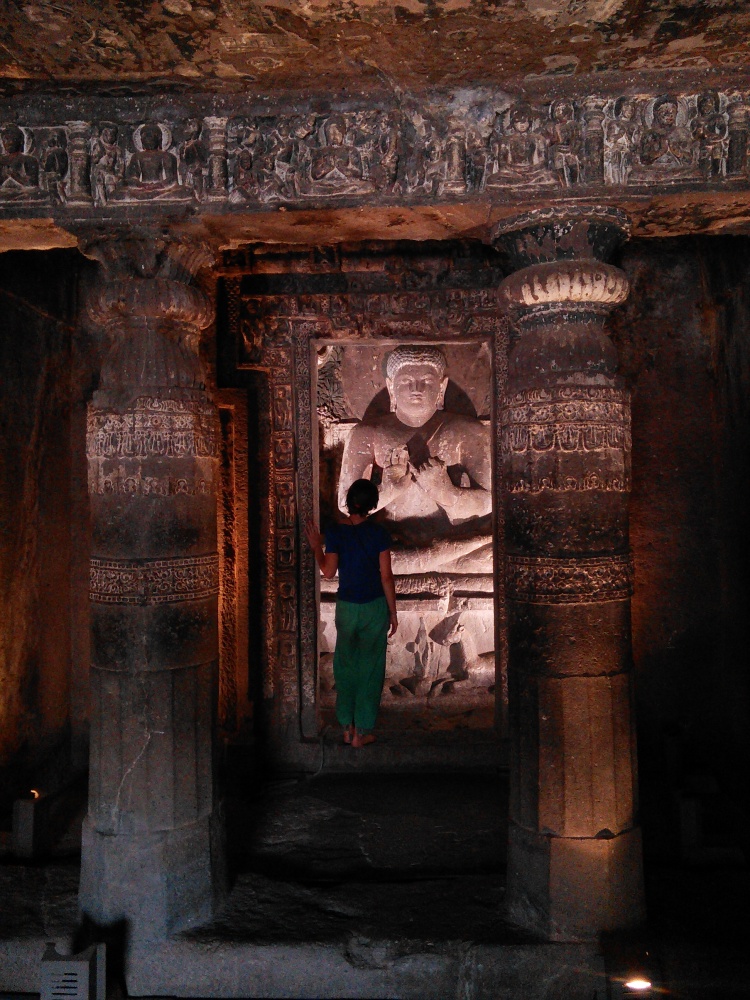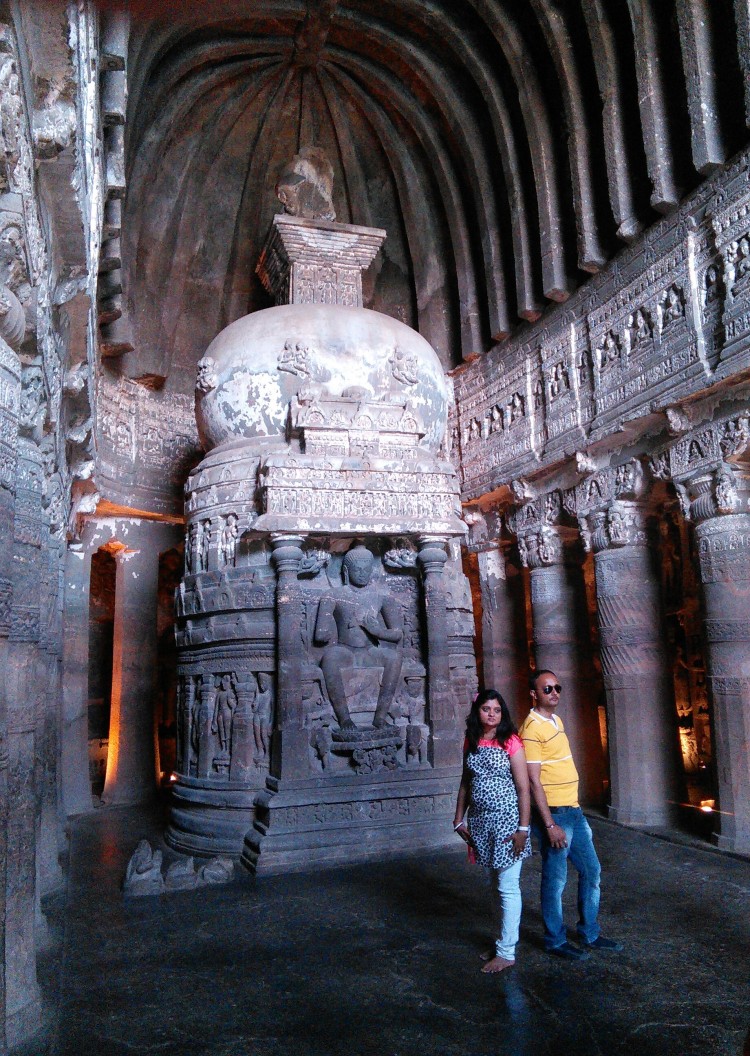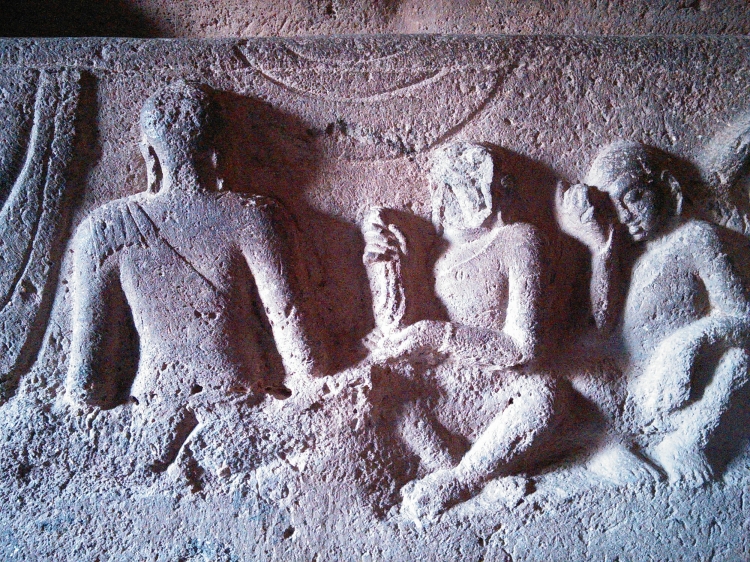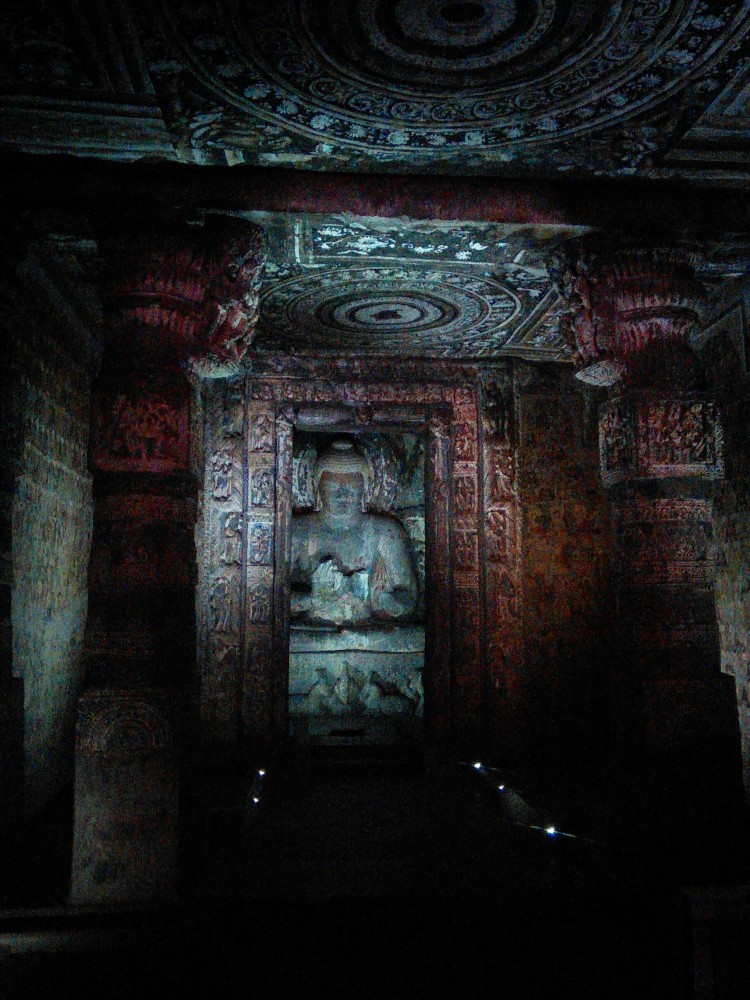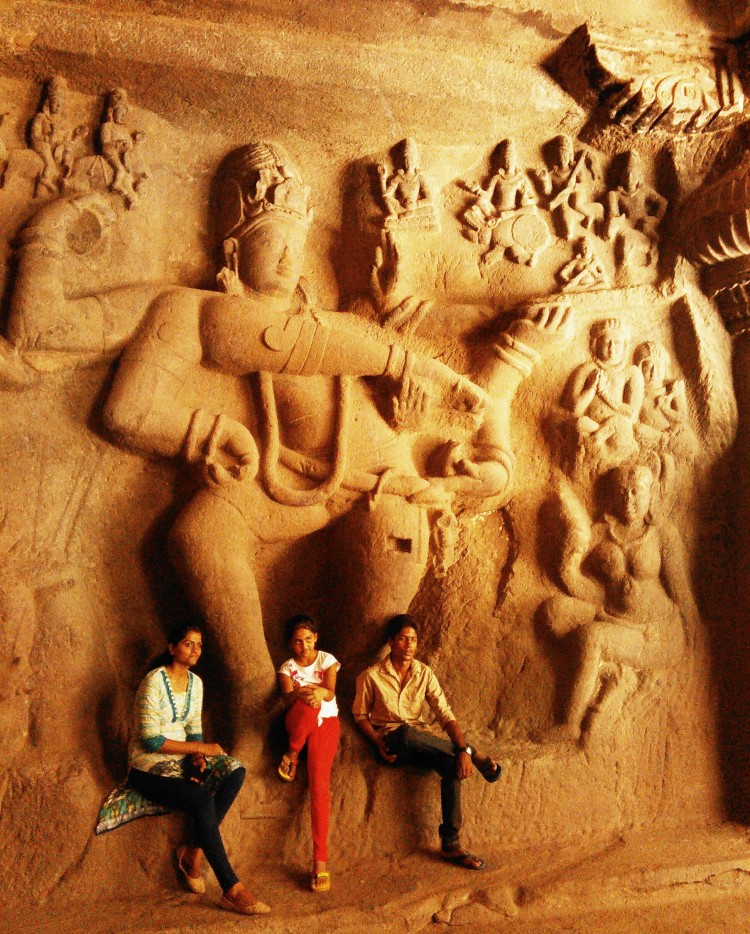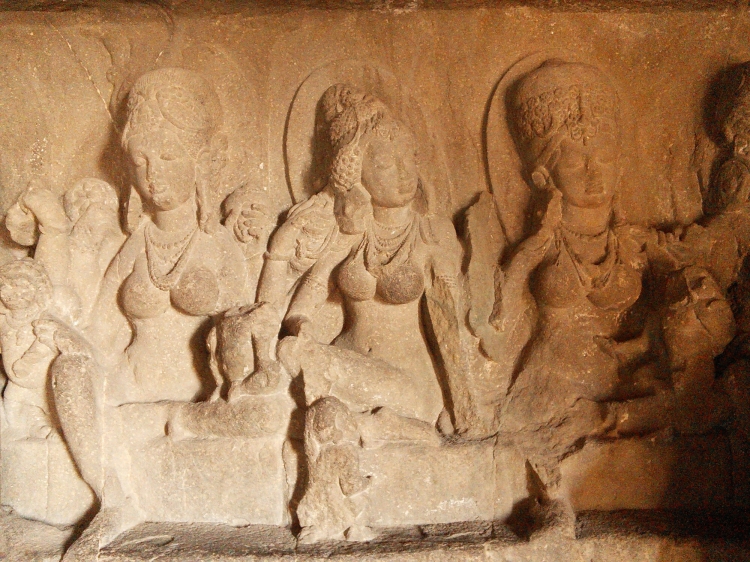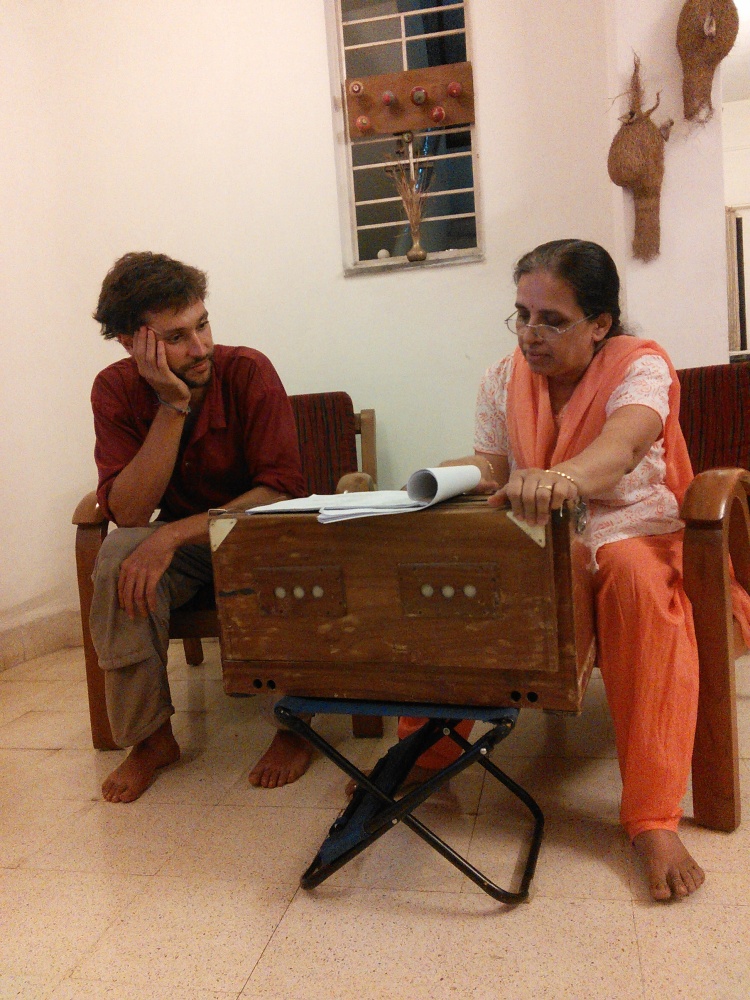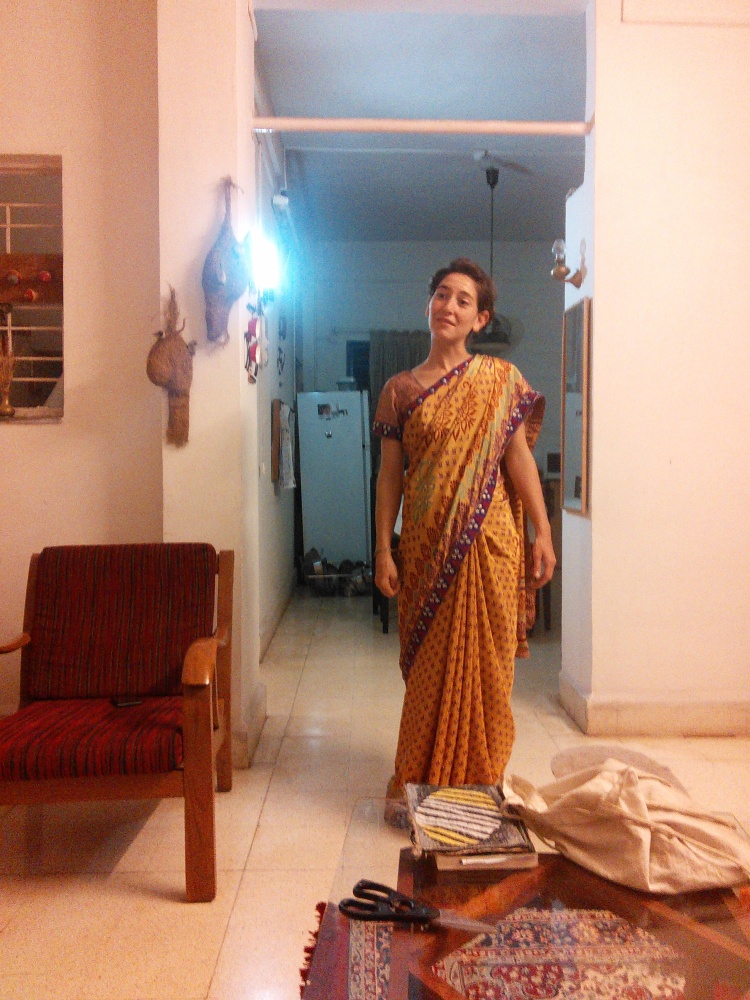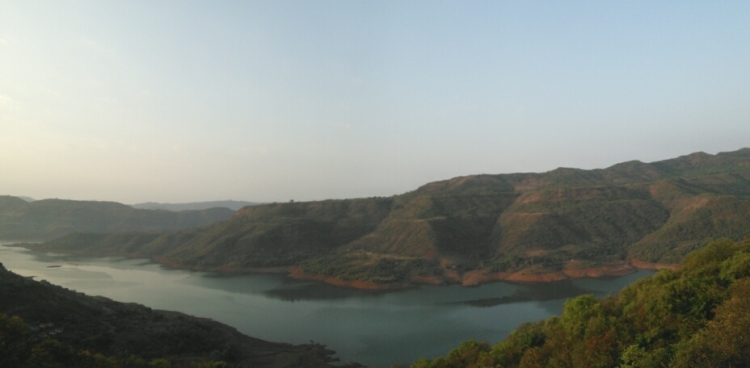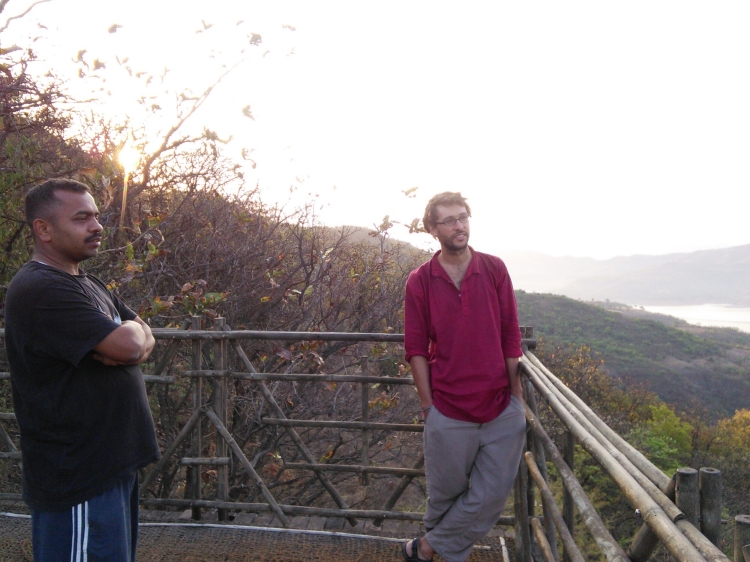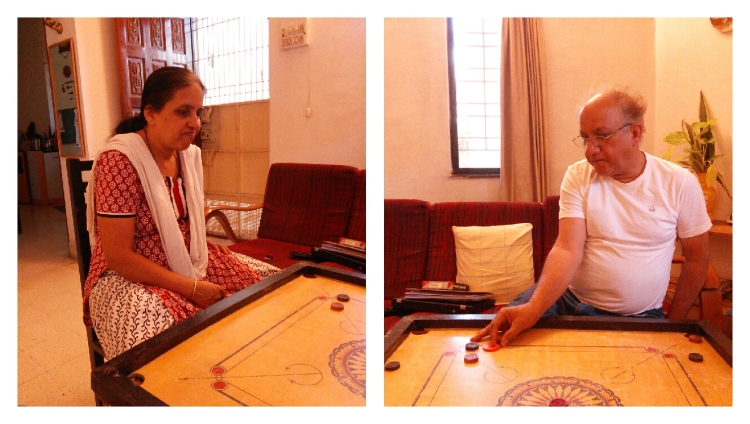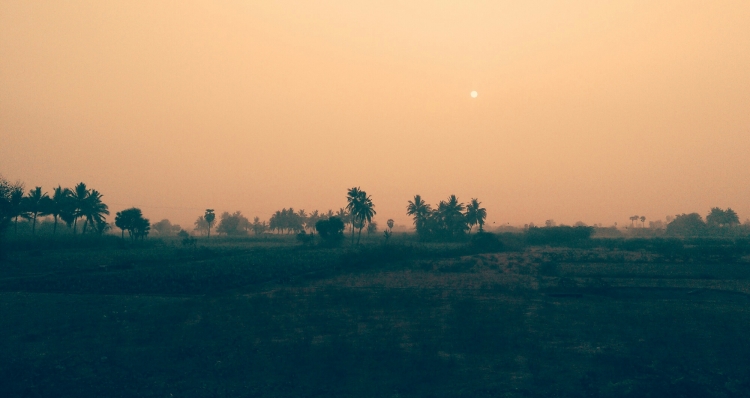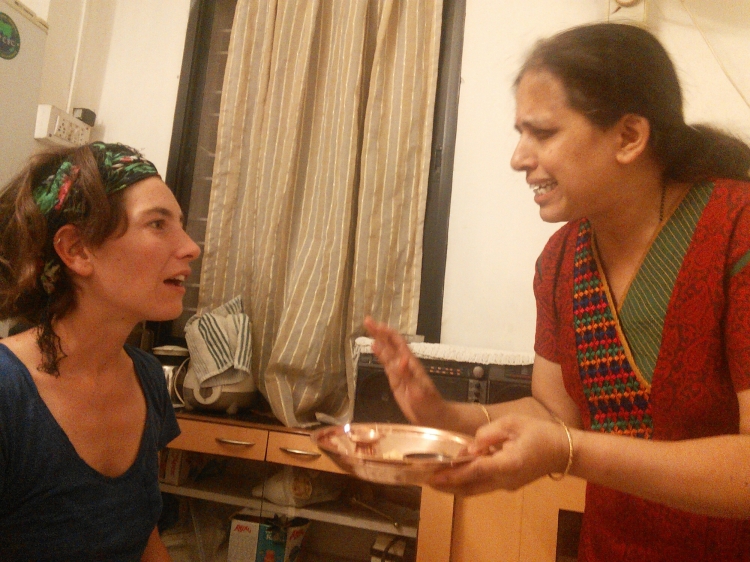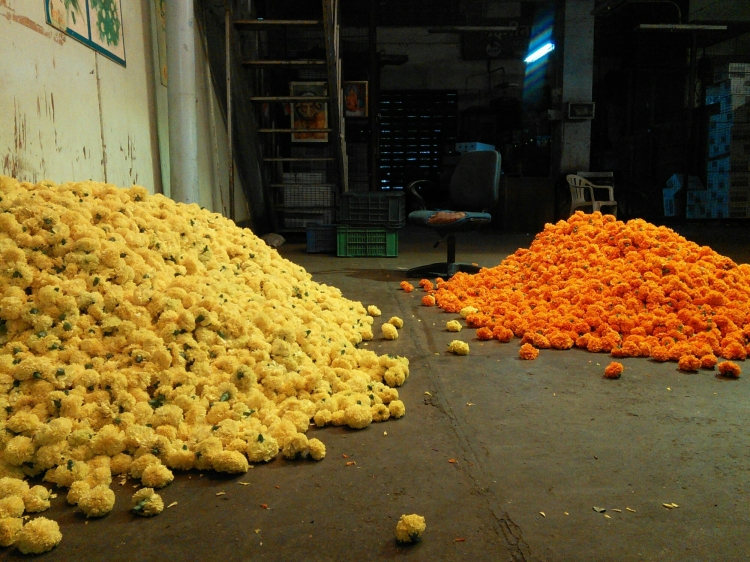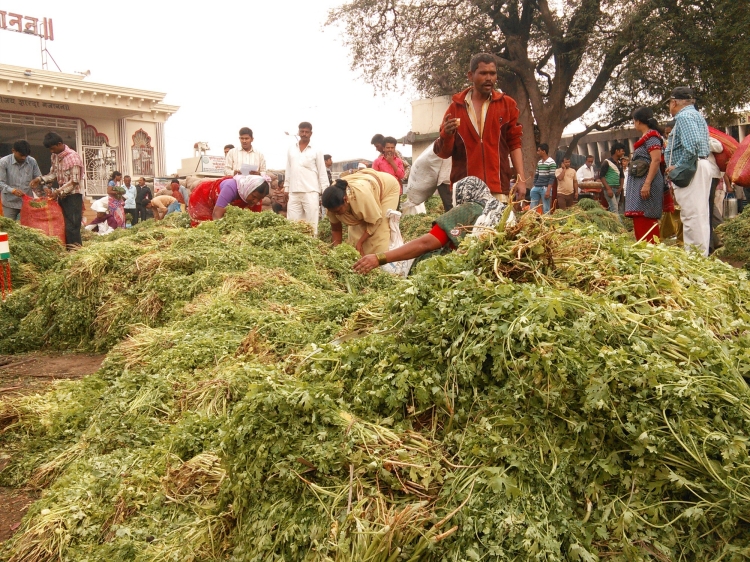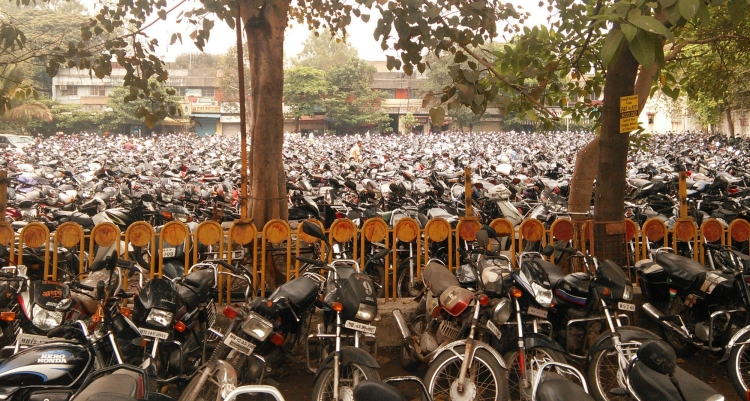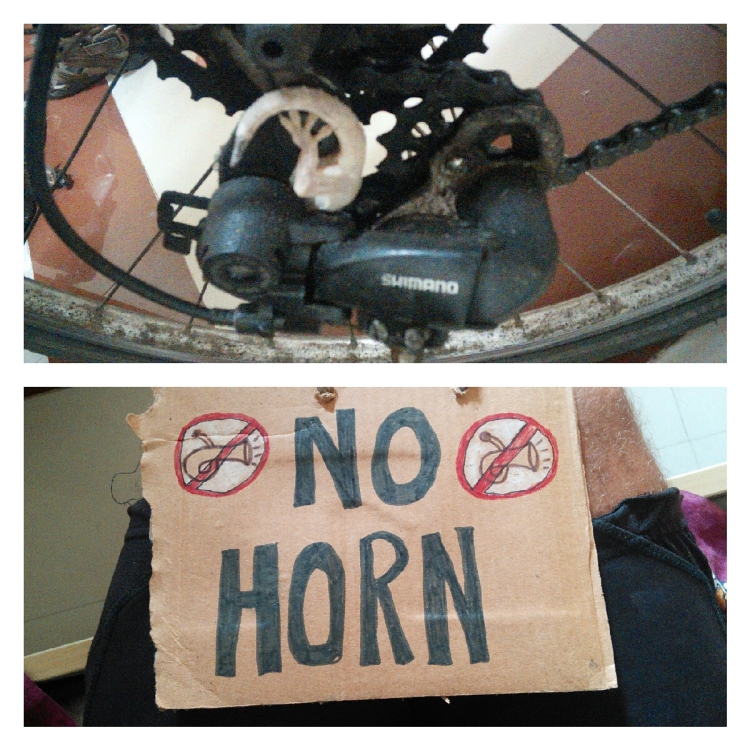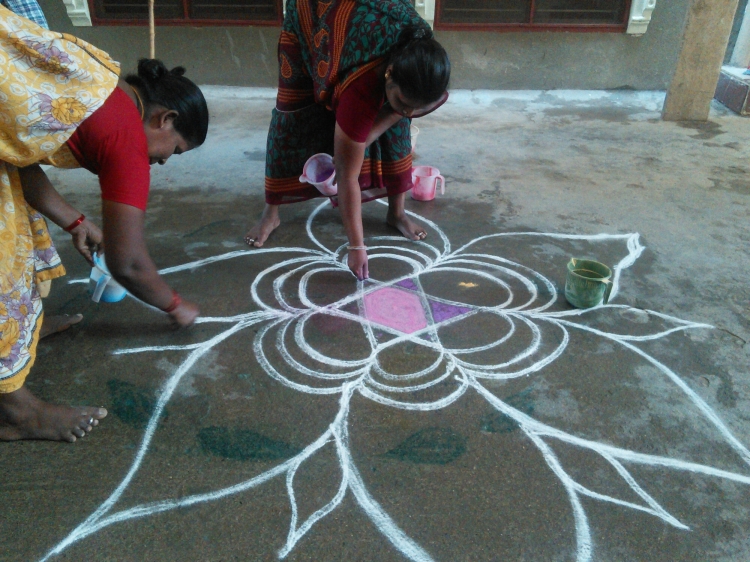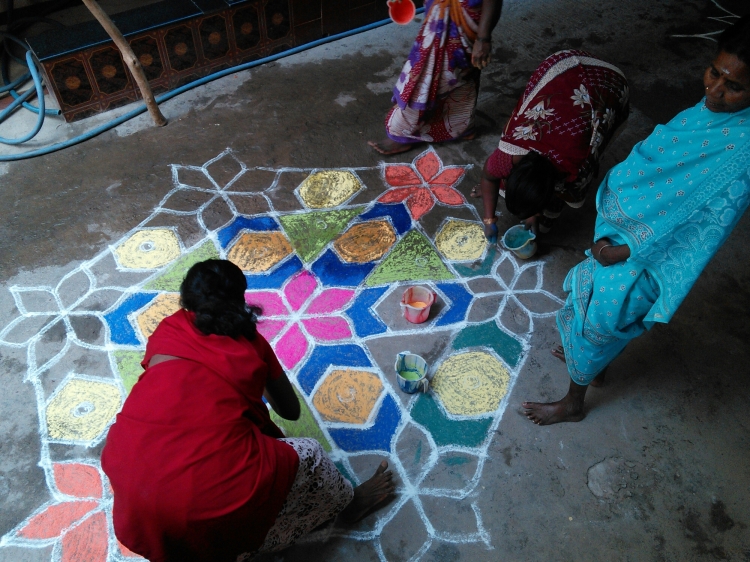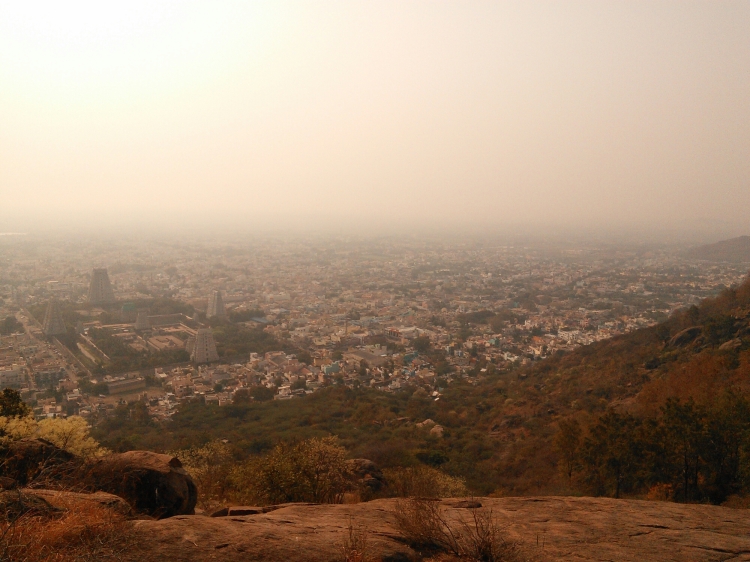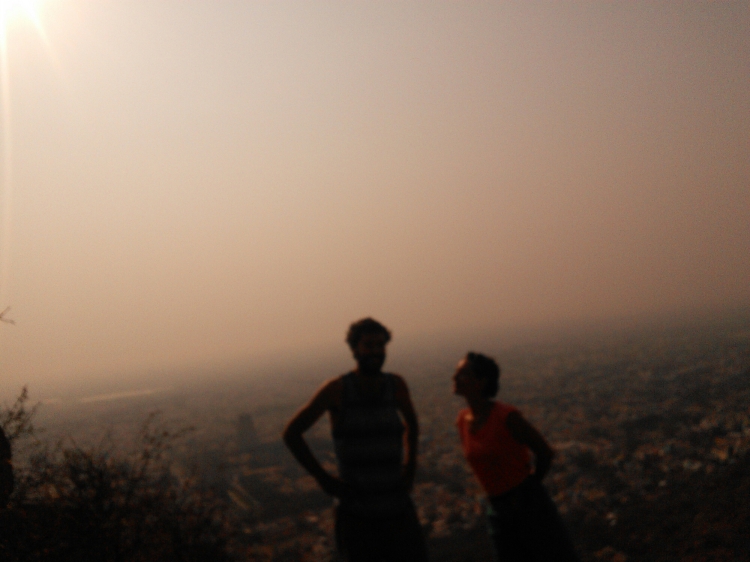this has been it and we are back to where it all started
full of gratitude and love
Última postal de la India
Ayer vi el sol amanecer en el templo de Trimbak. Mientras el cielo estaba aún oscuro, caminé en círculos y me dejé llevar por una corriente de pasos y murmuros. Om nama shivaya. Llegaban estas palabras de todos los rincones, en diferentes ritmos y tonos. Om nama shivaya.
Ahora se escapa la medianoche y comienzan a caer los primeros momentos de la mañana. Es la última madrugada en la India y estoy en el aeropuerto de Mumbai lista para partir. La bici está en una caja de heladera anticipando el invierno de Europa. Mientras escribo este post pensando que no voy a dormir, mis queridos amigos brasileños que desde la última hora y media son oficialmente ilegales, vinieron con un pase exclusivo para descansar en unos sofás de la zona vip. Así que ahora me descoonecto y me concentro en el maravilloso arte de dormir una hora y hacerla rendir por tres. Así me despido con los últimos sueños en esta tierra.
Adiós India, en unas horas remonto el cielo en bicicleta para volver a reconocer las primeras montañas que dieron inercia a este viaje.
Buenas noches familia, amigas y amigos y todo dharma bum!
Más allá de todo
Hace seis semanas que vivo en un Ashram. Acá no tenemos internet y dos veces traspasé la entrada. No sé exactamente que pasa en el mundo, me llegaron noticias de las elecciones presidenciales en Argentina y de la bomba en Ankara. Cada tanto hablo con Yoel y mis padres y así tengo novedades de algunos seres queridos. Estoy desconectada en las formas habituales pero no me siento así, es sólo apariencia. Hoy tengo internet y es suficientemente fuerte para aguantar la energía que quiero mandar en este mensaje.
Las enseñanzas de yoga, de Buddha y de tantas otras sabidurías dicen que para ser feliz uno debe trabajar en disolver las emociones que nos encierran en un ciclo de sufrimiento. Abrir camino a la ecuanimidad (no reacción) para lograr un estado de existencia en donde la paz interior no depende de lo que sucede a nuestro alrededor. Es un largo camino realizar estas enseñanzas pero cada intento es un paso hacia adelante. Aquí aprendí que solamente una emoción es positiva: amar incondicionalmente. “Love everyone, serve everyone and feed everyone with humility, respect and love.”
Hari Om
Over another sea, to Thailand
Dos razones me llevaron a visitar Thailandia: estudiar una técnica de masaje y renovar la visa para la India. Llegué a Bangkok la madrugada de un lunes sin dormir y una chica que conocí en la India me recibió en su casa donde pude descansar por el resto del día y encontrar un autobús para viajar en la noche hacia Chiang Mai (noroeste de Thailandia). Cuando llegué a Chiang Mai visité el consulado indio donde me pidieron un montón de papeles para tramitar la nueva visa. Las visas dan dolor en la panza. Alquilé una bicicleta y pasé un par de días en la ciudad esperando e-mails y tomando jugo de frutas. Regresé a la embajada donde el cónsul revolvió los papeles que me pidió con mucha autoridad dos días antes y sin prestarles atención los abrochó y me despachó con un ticket a la caja. Cada vez más siento que las cuestiones de la autoridad, los poderes y los deberes son un poco una lotería y no hay que tomarse nada muy a pecho. En India aprendí a seguir mi propia ley, a veces una pequeña rebelión pero con confianza en el Dharma! Pero para una visa hay que decir ‘si, señor cónsul, las cartas que usted quiera!’
Después dejé Chiang Mai por Lahu, un pueblo a una hora de la ciudad, en la montaña, a 900m de altura donde el aire es más fresco. Si bien es la época del monsoon (lluvias) este año es bien seco. La técnica de masaje thai es en realidad originaria de la India pero hace centenares de años pasó hacia Thailandia y se desarrolló y mantuvo aquí mientras que en la India se extinguió. Es un arte de sanación hermoso y está basado en el principio budista de metta: amor y compasión.
Después del curso me embarqué en otro viaje hacia Pun Pun al norte de Chiang Mai. Pun Pun significa miles de semillas y es una comunidad y granja orgánica que se estableció hace 20 años sin mucha expectativa de devenir lo que hoy es. Una de sus principales actividades es crear un banco de semillas para trabajar en recuperar todas las variedades de frutas y vegetales que poco a poco con el tiempo se han ido desapareciendo. ¿Se imaginan que en la existen en verdad 200 variedades de tomates? Ellos trabajan para salvar la diversidad que se perdió una vez que la agricultura se industrializó y empresas como Monsanto o CP comenzaron a controlar las semillas.
El último fin de semana en Thailandia fui a Chiang Rai, ahí nomas del borde con Burma/Myanmar para visitar a Momay y su familia en su ciudad natal.
Con Momay fuimos compañeras de doctorado en Liverpool, ayer nomas! Momay ahora es profe de física en la y está a cargo de un pequeño pero hermoso observatorio en la universidad. Fue muy pero muy lindo verla y conocer a sus padres. La mamá es una fanática del masaje thai así que pude practicar con una conocedora del asunto. Me trataron como una reina, prepararon una comida riquisima y pasamos todo el día visitando templos y una tierra que tienen en la selva. Qué gusto terminar así la estadía en este país tropical! Me vuelvo para la India con mucha gratitud.
What happened next?
You thought we were gone? not yet, this is how the story continued…
In Jammu we took an overnight bus and arrived to Delhi completely under the monsoon. The moment we stepped off the bus the rain dropped like buckets from the sky. We were soaked in one second and after assembling the bikes by the side of the road we set off looking for a bus for Yoel. It was 6am and everything was still closed but in India there is always an answer for your question and the answer is always a bit further and after a turn, may be right may be left. After unsuccessful attempts to find a bus agency we took shelter from the rain at the back of a train station. We finally found a bus for 5pm and parked the bikes in the agency. We had the rest of the day to hang out in the floods, get a 2 minute ride in the metro and get lost in the market of spare car parts… a very romantic farewell! Those were our last hours together. After one year on the road moving within half a km distance from each other, taking decisions together, sharing food and shelter, now it was time to say goodbye and split paths. Yoel is going back to France to join a friends reunion and spend the summer with his family. I decided to stay in this side of the world to study yoga and Thai massage.
We said bye under a stormy dark sky and each of us was so concern for the other that we didn’t have much worry to spare for our own journey. Yoel had 24h to travel 1300km to be on time for his flight, find a box for his bike and make it to airport… and experience had taught us not to plan too tight in India. I had to cross Delhi from the old town in the north to the very south, 20km in the capital of India under the rain was not the smooth journey home I would have dreamt of making by myself just after waving off my dear road companion. But when in life there are no choices we gather all we have and make our way through. And so that was the story, after 200m of cycling with tears and raindrops in my eyes the perfectly busy road became a perfectly busy river, the street was flooded and I was cycling along with other rickshaw pullers with the water to my knees. The water carried all the dirt from the street and it was impossible to know what was on the way or under me. It wasn’t the best road to be on but the only thing that was clear at that moment was that I didn’t dare stop my motion and put my feet down. I pushed on, followed behind rickshaws and I yelled people and things out of my way. I did not see a single female around. Once the flood disappeared the rest was easy. After 2h I made it to Sadananda’ house, a Warmshowers host.
Sada is another gentle man, thank you! He started cycling to go to work inspired by his friend and then he took a step further and ventured to Spiti valley on his own. He grew up in a village in Orissa and although his father never went to school and doesn’t know how to read or write, Sada made it to university in Delhi and is today a Professor of Sociology there. It was the first time I was being hosted alone and by a single man but Sada’s sensitivity made it all so easy. He hosted me for 3 days and helped me sort out the exit out of Delhi. During those days the sun came out again and I only saw Delhi from the car windows of Sada’s friends that came to visit in the evening. I was not ready for Delhi, it will have to be another time.
I cleaned and packed my bike and took a train down to Nasik where I left her and some of my belongings in somebody’s spare flat. Just outside of Nasik is the Ashram where I will study yoga in a couple of months. Now my mission is to continue travelling south to meet a very dear friend that when I left Liverpool said “I will see you in India” and she was right! I met with Julie in a farm where we spent 2 weeks farming and enjoying the rural beauties of India living in a very peaceful environment. We stayed in a place called Auroville which was born in the 1970 and was designed to be an international township. The principles that founded this project were to live in harmony with nature and humanity by creating a place on Earth where everybody would be welcomed despite nationality, cast and religion. The concept sounds good but the practice is less ideal. We found oddities in the system and we found inspiring works. We lived in Buddha Garden where we worked in the farm every morning and slept to the sound and fury of storms and sometimes to the moist of their drops! We swam in the sea, learned Indian recipes (still haven’t mastered chapatis) and met truly beautiful people with whom we made friends so quickly it made life so easy. The return to south India was fun and easy and a good balm to gather energy for the next part of the journey.
Safely to Jammu – towards the dharma split with a lot of dharma
The dharma bums on bikes adventures came to an end in Srinagar as we exit the Himalayas. What a fantastic way of ending the trip! Before arriving to India we spent most days and nights out in nature, we cooked for ourselves and we had a lot of silence. In India things changed. Its more than billion population means that there is people everywhere and camping is not so attractive and hotels are affordable, food is good and cheap enough so we gave our stove some holidays and on the road the noise is ever present. The moment we crossed Rothang La (the first mountain pass after Manali) all these things changed and we regained our life in nature, the quietness of remoteness and we also did some wholesome cooking.
The bicycles have done wonders to come this far. Who would have bet that these 200€ babies built in the artful warehouses of Liverpool would cross Europe so smoothly and climb some seriously high roads? Yoel is a great mechanic and a big time recycler and I wouldn’t have set off so confidently if it wasn’t for him. Every tourer that we’ve met have really nice bikes that don’t need much tuning or repairing (they are also 5 times the price). It was a great discovery for me the fact that such bikes exist! But it is still comforting to know that all you really need to travel far is a pair of wheels, a set of cables, nuts and bolts and a good pair of breaks.
Back to how we ended our trip in Srinagar… our stay there was short and sweet, basically sort ourselves out to start a quick return to the plains and find the quickest way to Delhi. Srinagar is still surrounded by mountains and in order to get anywhere you first need to go to Jammu and the two options are a public bus that can take forever or a shared taxi/Jeep. Being a bit tight with time (Yoel’s flight was in 4 days and at 1300km further south from Delhi) we caught a private Jeep with 3 other travellers from Israel.
The journey turned to be an epic adventure. After 2 hours on the road we were stopped by the traffic police because there had been a land slide in the mountains 80km ahead. They forecasted that the road would be cleared after 2 hours – our experience here is that any time estimate has to be multiplied at least by 2 and more accurately by 3. But we waited anyway, we played games, drank chai, had a couple of progresses of 50m along the now jammed road and tried to understand the logistics of the traffic police, corruption and the reality of a land slide. That day was the first time we saw the traffic police doing something but unfortunately it was not a very flattering experience. They were asking the drivers for their driver’s licence in order to let their vehicles continue along the road and get closer to the land slide, otherwise they had to stop and wait. Anil was our driver and he refused to subdue to the loud orders of a pretty aggressive policeman. The situation was rather confusing and we thought may be the driver did not have the paperwork up-to-date but he then managed to explain us that the police would ask for money before returning the licence and that was nonsense. Fair enough. So we waited a bit more and then it became clear that the road opening might take the entire day. We all needed to be in Jammu that night so we made agreement with Anil that he would take us “safely to Jammu” along the other road (that meant a detour and 80km more). He insisted a lot about “safely to Jammu” and seemed a bit dubious about the other road. He stopped the car a number of times to ask for directions or get some reassurance about state of the other road. He spoke little English but somehow we managed to communicate his and our worries. We needed to get to Jammu.
The detour started with a shortcut that ended in a collapsed bridge and so another 20km on top to find the main road. We made it to the mountains and as the road got steeper the car started overheating. Time for a break and find a waterfall to cool down the car. After some tenderness and mechanics we resumed the climb. Everything was going well and the road was not at its best but Anil proved to be a careful driver. A relief! We made it to the top and got to the first passport check that was like being in the film Brazil of Terry Gillian. They had one notebook to register every traveller on the road where the soldier in charge would fill in by hand a form and then complete it with every single detail of your passport and more relevant data like your father’s name and profession. We were 5 foreigners and it took half an hour to do 3. We felt that was probably enough paperwork for the day and tried to get away with 2 of us unrevealed since the soldiers had not seen us. But just as Anil was starting the car they spotted us and got serious about it. We were very, very close to the border to Pakistan and the security measures (whatever they pretend) are a serious matter. For some reason the Israelis were scared of saying their nationality in this region so we decided that they might as well be from Argentina. To my surprise they could sing songs in Spanish from a soap opera of the nineties and had a lot of data about Argentinian celebrities that I don’t even remember (for those familiar with Argentinian TV: who would have guessed that Argentina exported Chiquititas all the way to Israel? and that they watched it and loved it!).
The road was really bad and at that point it was 4pm and we only got as far as 80km from Srinagar with still 240km to go. It was going to be a long day. Only 10 minutes after the passport check point we drove pass another police post and they makes us stop, again! This time only Anil got out, talked to them, came back into the car, mumbled something, went back to them, gave them some cash and cursed with a smile as he got into the car. “So? What happened Anil?” “They fine me” he says and he is almost laughing “no uniform”… and that was it, like a great punch line for a joke! In the last three weeks we have passed dozens of these posts, they even put things on the road for cars to slow down, nobody does, they accelerate and over take even in the midst of these obstacles and the army is all day there, watching the lawless traffic like a circus show. But this one time they decided that the law is worth something and the law says the driver should wear a white T-shirt and grey trousers… now, excuse my language, but what a fucking joke! If India has the highest rates of deaths in traffic accidents might be because the law enforcers are too busy distinguishing the colour of the driver’s shirt rather than measuring their speed and do something about that curious habit of overtaking at full speed in blind curves. But we are not here to curse their manners but to reflect on them and appreciate that this is how things work.
We had a short break for Anil was exhausted and hungry. What a gentle man… is that what gentleman really means? He kept on repeating “safely to Jammu” as a holy mantra that would keep him going for the rest of the day and night. We left the bad road just as the sun was setting and made it to the good tarmac in the dark. Things balance themselves out like this. We were all exhausted by then and Anil started yawning. I thought talking was needed to keep him entertained although probably the road was pretty entertaining already. We learned that he was 45 years old and he had been a driver for 22 years, first trucks and then the Jeep that he didn’t own. He was married late, at 30, may be because both his parents had passed away. His mother had died when he was 8 and his father when he was 12. In such cases is the older brother that arranges the marriage. He has 2 children that go to school. He was a very humble man and it was a blessing to do that journey with him.
We finally arrived to Jammu at 1.30am and after he helped the Israeli friends get a fair price for yet another taxi to Dharamsala, he took us a to a hotel across the road. The last image I have of Anil is in the entrance of the hotel, he is sitting on the bed that was laid outside in the pavement (where the night staff sleeps) talking with the three other guys that are lying on their beds, telling them where we came from staring into empty space, he looks tired but smiles and still repeats “safely to Jammu” as we thank him and greet him good bye.
From a place called Drass to a place called Sonamarg
These are some images of the last two days on the road. Actually the very last day we did not take pictures, we just cycled downhill at full speed. We are heading towards the end…
After Drass the road was pretty bad and coincidentally the traffic got heavy making it a bit more difficult.
Before the pass we stopped for lunch in a wee village were we met the kid in the picture, there was something so mature about the way he just observed the world around him that contrasted so much with the other kids of his age that behave like cool teenagers. We did not know it then but the rest of the afternoon would be flooded with infant encounters, although less peaceful.
As we started to climb towards the last mountain pass, small human settlements started to appear by the side of the road. Probably shepherds that come this way in the summer months and live in improvised tents. While the parents are busy sheep herding or else, the kids come to the road to beg. Vehicles must pass them by so many times that when they see a slow moving bike iunmust be like a promise to heaven for them. Well… we tried many conversations, games and all sorts to get a friendly encounter and it more or less worked until we met the last bunch of 8 kids. It was the last stretch of the climb and the kids were clinging on to the bikes trying to get something out of us. It was all part of a game possibly but for a moment it seemed we were never going to get through them. It got so unbearable that the only way to stop them from clinging from the bikes was to offer them water…. sprayed from the air. It was weird, Yoel tried all his tricks and games and Huetzin made conversations, I completely lost it and just wanted to get out of there. All I could think was misery and how to face misery (I am lost there).
The pass was unexpected and slightly disappointing. The road after the pass was a complete mess. Some snow melt causing some overflowing rivers that helped to keep the traffic entertained and we could pass them easily and have the road a bit for our selves. A big military convoy hold the things still for a while and we could enjoy a descent in the dust. We stopped at a turn to admire the view and suddenly a Jeep from the army stopped behind us well loaded with guns and busy-looking military. A man came down with his long shot gun apparently searching for threat. We thought may be we were the threat but they seemed to be oblivious of our presence. The whole military thing really looks like a street theatre performance sometimes.
And finally we made it to Sonamarg with dust covered faces and dirty clothes ready for a rest. The following day would be our last day on the road by bike. Heading out of the mountains we arrived to Srinagar, located in the middle of a wide valley and surrounded by mountains, suddenly is very hot again and humid. The city has an architecture completely different to whatever we have seen in India so far even the mosques look completely different. Here is probably a majority of Muslims and in those days the community was still in the middle of Ramadan.
And what after Leh?
Arriving to Leh we rejoined the honking orchestra of military trucks, auto rickshaws and any kind of vehicle that desperately wanted to overtake us (and the world) in the single lane under construction. It was tough to accommodate to the new situation and let go of the solitude of the wild mountains. You think travelling by bike is a slow progress but situations like this still seem too abrupt. We took a periphery road and avoided the main bazaar, got lost in little alleys looking for the quietest guest house we could afford and found 2 lovely rooms in a typical Ladhaki house surrounded by a park of Buddhist gompas. We had a hot shower, a HOT shower! After 10 days of washing by bits in snow melt this was the highlight of being back in civilization.
And the other highlight was to be able to eat something out of the dhal, rice, omelette and chapatti world. Although Leh can be an empire of Royal Enfields (this is the brand of every motorcycle you will see in India and part of its original design is a terribly inefficient exhaust pipe that sounds like a space ship taking off), we managed to stay far from the road and the noise and rested for days. We knew the Manali-Leh adventure was over when Fin left. He had to take a shared van in order to make it on time to Delhi to catch his flight. Nobody was looking forward to his departure and even less to his journey. The majority of these vehicles are driven very badly and his was no exception. The good news is he arrived safely and the bad news is his bike was damaged.
As for us 3 we decided to continue the trip and leave the Himalayas by bike. After a couple of days we resumed the road westbound with final destination Srinagar. The first day was sticky, some sort of mental and physical resistance to the road. The fumes from the heavy traffic getting out of Leh made it even less attractive and the head wind didn’t help. But once we had the first descent and arrived to the first village the mood started to change. The landscape is very different to the previous journey, there are villages, the land seems so fertile and the locals are tender and smily.
We slept in a village, shared a beautiful room full of windows and the following day made our way to Lamayuru. The last part of the day we started the climb towards our first and highest pass of this part of the trip. At first the road was steeper than we had experienced but then the gradient dropped and finally we could experience those super human powers Fin promised we would feel after spending 12 days above 4000m climbing mountains. The climb was really enjoyable, never felt breathless, no wind, little traffic and astonishing views.
The descend was smooth until the wind started blowing again against our direction and the road started to be up and down. We were really ready for lunch break around 2pm and needed to gather some energy for the next pass of the day, Namika La, only a 300m climb but the wind can make it rather tiring.
The landscape was beautiful, very rocky, very abrupt and very smooth all at the same time! We sailed down hill for 10km and arrived to a village were we saw the first mosque after Leh. Gradually we will be moving from the Buddhist Ladhak to the Muslim Kashmir as we get closer and closer to the frontier with Pakistan. We could not travel to Pakistan so this is the closest we will manage to get to their culture.
We finished the day in Mulbek a small village spread out in a few km where we found a quiet room in a family’s abode. It was so lovely and peaceful there that the following day we decided to enjoy the morning in this quiet village and resume the road in the afternoon.
Arriving to Kargil was less promising, first big town on the way, we took a wrong turn and spent an hour visiting ridiculously priced rooms. We finally found the way to the old town and the craziness of the bazaar. 90% of the population of Kargil is in the streets, the majority are men and for the first time in weeks, children are begging for 10 rupees (even those that come back from the shop with food in their hands). We found a basic room in a hotel that was close to falling apart and went out for food. It was not a simple mission as we were right in the middle of Ramadan and the sun was yet above the horizon.
On the way out of Kargil we returned to wilderness and peace. We followed the agitated river with crazy current and spent all morning up and down. I had a puncture for lunch and we took refuge of the sun under the shade of some trees by the river. The temperature is hot again and this reminds us that we are leaving the Himalayas… we start feeling nostalgia and some sort of fear to return to the crowded plains. But this is the way forward and that is the only way!
Manali-Leh pics from Huetzin part 4: stairway to heaven
Manali-Leh pics from Huetzin part 3: the Gata Loops and Whiskey Naala
Manali-Leh pics from Huetzin part 2: the adventure of Baralacha La
Manali-Leh pics from Huetzin part 1
A little bit of flat and the highest pass
Morning time in this road stations starts at 5am with jeeps and vans pulling in to get some hot chai and greasy omelettes. We roll off our sleeping bags into the cold morning sun soon after, however we always manage take at least 3 hours before departure. We started the day with a short climb of 5km past Pang and at the top we found before our eyes yet another dramatic change in the landscape: we have reached the Mourai Plains. The road is (for the first time in days) horizontal and it cuts the plains that are like a really wide valley. There is a desert vibe to this place, at this altitude there are no trees but some green little bushes still manage to carpet the sandy ground. With a back wind and no slope we moved through the vastness like powerful birds.
We had a short day and finished with a few km of dirt, off road in the hope to reach Sokar Lake. The lake was like a mirroire in the desert, the closer you get, the further it seems. We continued like this until we found a sign that warned us not to camp outside the designated area. We had to make our guess about what area that was and we decided to shelter from the wind and the law next to a maniwall.
After an interesting game of Canasta with an unusual deck of cards (with too many and too little cards that made it impossible to resolve) we tucked in our tents. Once more blessed with the most wonderful night sky, we had a sound sleep at 4800m and gather all the energy we would need for the next day… Tanglan La awaits, is the last and highest pass of this journey!
We managed to set off before 8am and had a rather strenuous warm up for the day in the 3 km of dirt uphill to meet the main road where we would hear the line of the day made by a 4×4 driver: “This way Manali?” It might be hard to understand but this is THE only road in a 500km radius and it stretches from Leh to Manali… so, at 120km from Leh and 380km from Manali, you would think everybody got their sense if direction sorted sometime ago!
The first 2/3 of the climb are in the dirt and this is more demanding because you need to sort out the rocks on the way and constantly search for the smoothest bit of the road. The group has different responses to altitude but we were still within 4 minutes wait from each other. Yoel was the champion of the climb and Fin behind, Huetzin and me find it a bit harder. This time I did not feel out of breath but I didn’t know from where to gather the energy to push on but hey, good to realise there is always more than you think! Reaching the top was quite emotional for all. When we left Manali I was feeling a but dubious about the bikes and my lungs. Soon it was clear that we could deal with the altitude but I almost still can’t believe our bikes have made it this far! I am so happy we have travelled this mountains and I am forever grateful to Yoel, Fin and Huetzin – such lovely people!
Deeper into the desert of Ladakh
After 6 km of adventurous downhill we reached a group of tiny stone houses roofed with blue plastic sheets, serving both as hotel and restaurants. The place was called Bharatpur. Arrived there at 3 pm it was literally the shop owners and us, beautifully peaceful. We sat on a terrace, in the warm sun (maybe 20°!) and it slowly became clear that this would be it for the day. There was no camping spot around but it was so quiet that it seemed we would have a whole house-tent for ourselves. Then arrived the 30 motorbikes and their drivers eager to attract attention. We knew they were just stopping for tea but how random they had chosen the exact same place as us (amongst ten possibilities!). Clearly outnumbered we moved across the road waiting for the party to be over in our new quiet cave. However the lady in our new place refused to let us sleep at her place!
Back into our first choice, soon the noise of the two wheelers was replaced by trucks who got stuck in the pass as night had now come and water was turning back to ice. Most of the night became a sound and light show, with free real diesel smoke to increase the creepy atmosphere.
It was quite obvious that the next night down the valley we would regain our freedom and silence by finding the best camping spot and cook our own sticky nuddles (we can easily manage that ourselves, we just had to get the cheapest pack available in Manali).
The two followings days were hard for the legs with two climbs above 5000m including the memorable Gata loops- 21 hair pins with super steep slopes in a few turns that made the four of us stop nearly every 500m to regroup and regain our breath with the little amount of oxygen available.
We camped in between the two passes and a very thin layer of snow had covered our tent when we opened our eyes in the morning. We warmed up before leaving with a chai in a parachute tent run by two beautiful old ladies coming from villages further deep in the mountains. They were very generous and we could feel in our food and drink the love they had put in, it makes such a difference!
The scenery dramatically changed after the Nikkina La on the way down to Pang. First we saw some marmots, first wild animal I had seen for a while, second we met an Indian touring cyclist that had a flat tire and needed a pump every 5km to be able to reach Pang and get his bike fixed. Fortunately the landscape was so special that he could catch up with us and refill his tire every time our jaw dropped and our fingers clicked our cameras’ buttons.
The road was in rather bad condition and although having gone downhill we arrived in Pang quite tired for lunch. Feeling rather lazy, we also stayed for dinner and eventually got a good price to stay in the tent behind the dhaba ( restaurant) we had eaten in all day.
Fin noted that it was a red cross tent, probably not given to most needy people since good business was made out of it!
We will remember Pang for the moment we had to pay the bill the owner gave us where prices had all changed. Furthermore when we did the correct maths and found mistakes, she said : ” OK,OK, you pay your total sum, it is discount !” So from now on we know: correct maths is discount, good!
Tough time at the top of Baralacha La
Waiting for the pass to open is time to make some time
The mighty pass is called Baralacha La and it skims the sky at 4850m. This pass has seen a lot if snow and in the last week we have met people that have tried getting through and were sadly turned back due to the amount of snow and ice on the road.
The news are not asking us to rush it up there so we took a day off to hike up a glacier in a valley next to our campsite and accidentally be part of a geology lesson in the wild!
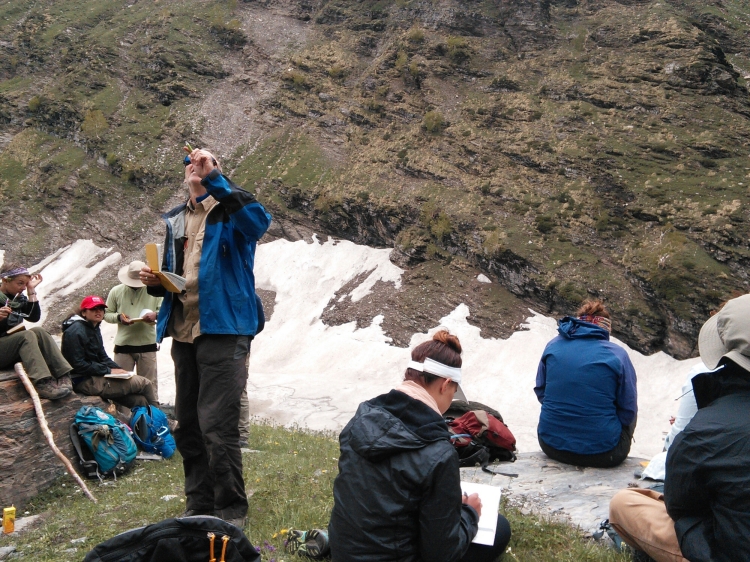
We crossed paths with a group of geologists from the US in their field trip and learned a bit about glacier action and landscaping.
After a day hiking we spent the afternoon on the side road tea stall trying to get some information about the location of our friend Huetzin and send him messages about our situation. We met Huetzin in Oman, almost 4 months ago, and it was through him that we came to know about this route, the highest motorable road in the world (so the say). Back then we made the deal of meeting in June and cycle to Leh together. Huetzin has now cycled the whole of India from south to north and at that point he is trying to catch up with us to continue all together. There are no phones or internet available so we send the good old pigeon message through fellow road travellers (that is the good thing of having just one road and a real minority of cyclist).
In the only shop in town where they play tibetan music that sounds like cumbia we found ‘palmeritas’… this is only the beginning of a trip that will take me back numerous times to my dear homeland! The shop is managed by a very nice man that seems to find maths quite tiring and after 4 items he gets bored of counting and pauses in the hope you will make an offer for your shopping. He might accept your sum but somehow feels the urge of giving you some money back making your shopping ridiculendsly cheap. We had to insist him to take the whole amount and in the end he did, although feeling quite clueless. We spent a long evening trying to make a fire with drift wood we collected in the glacier… lesson of the day: chances are that the wood you pick up from the ice, as much as it can look dry and ideal, it won’t burn!
The next day we made our way to Keylong. We had plenty of time (all day to do 30km) but Fin’s love for speed was irresistible. Unfortunately none of us expected the down hill to finish with a couple of gravel speed bumps well disguised by the dust… he flew over the first one and landed over the second one shedding skin and ligament strain in the act. Tumeric magic was applied to clean the wounds but his left hand swelled in a strange shape and there was little to do about it until getting into town. Luckily the accident happened before the only town with a doctor in the next 350km!
The way to Keylong offered rough patches on the road but outstanding views of the high mountains of the Lahore valley still green and white. The landscape changes fast and suddenly turns quite mineral rich and brings reminiscences of the Andean mountains.
Keylong is a small mountain town easy to get around where we found a hotel and the hospital. As we were walking to grab some lunch Fin spots another cyclist at the other end of the road, “is this your guy?” and there he was, the good old Huetzin has arrived!
From Rothang La to Sissu
As maia was celebrating reaching the top of the first mountain pass (first out of 5 that we will try to conquer in the next 10 days), Fin was already looking at the downhill that he knew was going to be rough (I did not).
Maia realises quite quickly it wasn’t going to be a ride in the park: snow, trucks and stones.
Fortunately we left the trucks and snow behind quite quickly but instead we started to ride down with the huge amount of water coming from the melting snow.
Soon it became difficult to know if we were on the road or in the river. Luckily few vehicles had come that far before us and we were not trapped in the mud.
The thrilling experience lasted a couple of hours, almost as long as to go up the same distance on the other side. The view showed us the real wilderness of this massive mountain range: we are now in the Himalayas. Although we had been in the mountains for a while, at this moment it seemed we had trans passed a boundary, we left behind the inhabited world and now we are in the land of snowcapped desolated mountains. This is the road to Leh and the Ladakh, a region in the Himalayas that is closed to the rest of India (and the world) most part of the year and only can be accessed by land once the summer heat manages to melt the snow that covers its 2 connecting roads.
The wind pushed us all the way to Sissu where we found a free camp site by the river. There we tried to gather more information about the opening of the road. When we left Manali the rumours were that the road will open mid June (5 days to go at that moment of our journey). This year the road will open unusually late due to heavy snowfall still underway throughout May and June. We spoke with the road workers, with tour guides and any passing traveller but we heard a variety of forecasts, “maybe it’s already open for two wheelers, maybe it will open in 3 days, or maybe 2 weeks…” so it looked like we need to do a slow progress and enjoy the mild weather at 3300m!
From the flat land to the first pass, Rothang La, 4000 m
We left what had been our home for 10 days in Dharmalaya for what in our mind was going to be the big adventure ending our cycling journey: the highway from Manali to Leh. Reaching Manali was a pretty easy ride where we could appreciate waste handling policies (just through it down the road) and also first encounter with roads where nature beat human power.
Just before reaching Manali, we decided to avoid a 3km tunnel by following the old road on the other side of the valley. It was perfect until we met that big rock. Panniers off the bike, it took us only 10 minutes to go through the rocks, and the following land slide 2km further down the road. Adventure was what we wanted after all!
A few kilometres further we were joined for a tea by an Australian touring cyclist, Fin. We stayed together in Kullu and then cycled up to Manali together, enjoying a beautiful ride on another old road (without land slides but with tea shop in the cascades! -cold feet and hot throat).
The three of us stayed one week in Manali, getting a bit sick, waiting for the road to Leh to open and also waiting for our friend Huetzin with whom we had agreed in Oman to do this journey together.
Everyday contradictory information was coming to us regarding the road: “it will open tomorrow”, ” not before July “, ” it is open”, “10 m high of snow!”, ” official opening on the 15th of June”.
Knowing that Huetzin was only a couple of days behind, and being bored of the horrible traffic in the streets of Manali we hit the slopes out of town towards the Rothang pass on Thursday 11th of June, with a perfect weather for a 2000m climb.
At the last village before the pass Mahri, 16km from the top, we stopped to have lunch. Although Fin had stopped 1km before there being seduced by an omelette on the side of the road. After a rather disappointing meal, we decided to call it a day as our body started to feel the altitude and the clouds we could see at the top were getting very inhospitable.
We bargained a room full of empty bottles of whisky and cigarette buds for 600 rupees and took refuge in it till the morning.
We happily left Mahri behind and started the final climb being taken over by tenth of taxis bringing Indian tourists to play in the snow for a few hours at the top. By the time we got there it was chaos. Imagine a finish line of the tour de France where every spectator came in taxi and wanted to be brought to the really last metres. Taxis where trying to park, do u turn, over take, look at the view and all of that on a single lane road half covered with snow with local buses from the other side of the valley trying to go through, pure chaos!
Fortunately tourists did not bother to go further that the play area and we were almost alone on the road when reaching the actual top and be thrilled by the view of the next valley where peaks and glaciers were shouting at us : “Welcome to the Himalayas!”
Pasaje de vida en Dharmalaya
En Dharmalaya trabajamos en el jardín, aprendimos a construir en adobe, pintamos bambú, vivimos 5 días sin agua corriente, nos deleitamos todas las noches con vistas del atardecer tan hermosas que parecía que el sol se acostaba en otro mundo y casi todos los días nos visitaron tormentas furiosas y pasajeras que iluminaron el valle con sus relámpagos y despertaron a todos con sus truenos.
En Dharmalaya recolectábamos agua de una vertiente y la subíamos por los senderos de las cabras como hacían toda la vida los aldeanos de estas tierras, cocinamos con los aldeanos de estas tierras y nos comunicamos con sonrisas.
En Dharmalaya conocimos gente muy pero muy linda. Vivimos ahí por 10 días con muchos otros voluntarios, algunos pasajeros como nosotros y otros con una misión más extendida. Los últimos 5 días el grupo de voluntarios se fue reduciendo y eso nos permitió compartir más tiempo todos juntos y conocernos mejor. En poco tiempo las personalidades se destaparon y en esta complicidad humana encontramos mucho amor. De pronto fuimos parte de una familia de amigos, que regalo! es algo que se extraña cuando uno pasa tanto tiempo viajando moviéndose de un sitio a otro.
Partimos una mañana con cierta tristeza por dejar atrás estas amistades pero a su vez con muchísima energía para continuar con nuestra aventura en los Himalayas. Nos alejamos de este castillo de barro en la montaña de Dharma con una gran sonrisa y gratitud.
Conquest of the mud castle on the hill – Dharmalaya
Apart from retreats and courses, we never stayed more than 5 days in the same place for the past 11 months. So from the beginning we knew that joining the Dharmalaya institute to volunteer for at last one week was going to be something different. But first we had to reach there. Hidden in the Bir forest, there was no landmark to find that place. We knew there were 80 km from Dharamsala to Dharmalaya- although, the names are so similar we could have thought we had arrived before leaving!
The best description of how to reach was given by the following image. At least we knew the goal was below snow level but still a good final climb ahead of us.
We rode all day, no lunch break, no idle stop except to look at the map still holding the bikes and on the side of the road. At 4pm we rushed 2 ice lollies that gave us all the sugar we needed to continue climbing and set off again at the same time a storm passed over our heads dropping fat and cold drops that were kind of refreshing and kind of aggressive… we sheltered for 10min and back to business.
The toughest part was yet to come, the most insane slopes were awaiting and our bodies were already quite worn but.. the most beautiful landscapes of the day and the most smily and encouraging people were part of the challenge!
We were still at quite a distance from our goal when the sun started its daily leaving show – first showing off the golden dome of the Tibetan Buddhist temple we passed by earlier on in the climb, and then leaning on the edge of a cloud to display its powerful rays.
By twilight we made it to what we thought was the track to the house. After a final exhausting and slippery slope pushing up the bikes ( bloody pine needles!) we reached the foot of the hill where the mud castle was standing and agreed quickly that the bikes would have to stay here, left behind like childhood friends that we don’t really like anymore ( sorry for that harsh metaphor, we were exhausted).
Dharamsala
Back to the mountains and back on the bikes we went through smooth cycling to challenging slopes and fast heart beats. The first phase from Pathankot was very smooth until after lunch we faced a climb that made us stop by the side of the road and had an uncontrollable nap just there, next to the cars, fumes and horns. People were waving with enthusiasm as they passed past us, we gather their energy and made it to the next town.
This is where our trip in the Himalayas starts and from now on we will continue cycling just like in the old days. We are happy, we feel lighter and freer: no train to catch, no visit to the parcel office, no queuing in the madness (queuing for train reservations has been a complete journey towards patience and social skills and an interesting redefinition of what queuing is).
We headed towards McLeod Ganj, home of the Tibetan government in exile, dwelling of the 14th Dalai Lama. The way up from Dharamsala to McLeoad Ganj was a good warm up, only 17km but the smaller the distance in the mountains often can mean the harder the climb. So on this 17km we went from 550m to 1700m and some unforgettable 3km to by pass the city that might have taken well over an hour. It seems we are on the first day of the trip again but without the rain. We take time, we swap the tent, we finish the drops of water and we pray to find a cheap restaurant to get some fuel for the next climb. The higher we get the views get more and more rewarding. We are reaching the mountains and we can see peaks still snow covered!
We stayed in McLeod for few days. It is an interesting place, it is our first contact with Tibetan culture and perhaps just the beginning. More will come as we head East and North (passing from Bir and heading towards Ladakh).
The second day we were there we bumped into Gill, a friend we made during Vipassana (who knew you can make friends in silence,!) and for the rest of the days we hang out together in the mountains exploring remote villages and freezing streams. The strength of the water running down the majestic mountains deserved a lot of respect and you needed to climb along the stream to find a suitable pool were you could dip in at your own pace without being thrown into the waterfall. And the water was cold as melted ice!
First slopes of the Himalayas
Journey within with Vipassana and Chirag’ s heaven
Only back in Jaipur for a few hours, we collected our bicycles and headed to the other side of town , in the hilly outskirts to the Vipassana meditation centre. On the way we crossed a very deprived area where cows wear plastic cover not to witness the misery. Learning how to witness misery and how to come out of it was exactly what we were going to practice in the retreat. Very fortunate we are to be human to have this opportunity!
Out of thé silence of our ten days retreat, we “fell” in the arms of Chirag and his incredibly lovely mother. They hosted us in their flat for two nights before we would take our train to the Himalayas. Chirag was the perfect person to break a long silence. He was so attentive, so knowledgeable also and he had just come back from a 7 months cycling trip from home to Vietnam. At the age of only 21, he became the fifth Indian to leave India by land on a bicycle ( customs did not know what to do with him and he had to battle for visas and authorisations – very inspiring for his friends and the Indian cyclist community).
His mother who could only speak a few word of English treated us like king and queen. We tasted her home made cheese, home made ice cream, home made sweets, etc… she was much impress when I helped her to prepare a few chapattis as men are not really allowed in the kitchen in the part of world either.
Two lovely days with them and we were finally release from the heat. Firstly in our air conditioned train and then arriving at the foot of the Himalayas where already the air was fresh most of the day.
Minimal tour in Rajasthan: Bundi and Pushkar
After a few days recovery in Jaipur we left the bikes in Monti’s house and ventured the Rajasthani roads by bus. The fist stop was Bundi, a little town with winding roads and smily people. There was a distinct family of wild boars that slept in the sewage to keep afresh from the blazing heat. They grow to a respectable size eating less respectable waste and this combination made us wonder where on earth go their remains when they pass away.
Bundi has a medieval touch and a picturesque fort upon the hill which we did not visit but admire from afar. We took it very very easy as the temperatures are scaling higher everyday.
India is an enormous country with such a large population that the figures are hard to imagine. The best way to experience these stats is to jump on the public transport. We took the bus from Bundi to Pushkar, 4 hours to do 150km at 38°C. Any space available is a potential area of occupation. If your lap is empty you might end up travelling with a box under your nose or an unknown child on your legs. The last trips on the train had already challenged us but we were still struggling to compromise. We used to live in England, right? If you have never been there, let me tell you: they will apologise for using the stairs at the same time as you! In India they will come and sit on your berth if in your sleep you happen to roll to the side leaving 20cm vacant and if this continues long enough, you might end up sharing your seat with 3 other people (and all this at 40°C). As much as we want to let go and level our sense of personal space to the local ways, we have a long way to go… it is clearly a good time to do a Vipassana retreat.
We arrived to Pushkar and within the first 100m a man pointed us towards a hotel with a swimming pool… a what?! we did not even had to bargain the price. Ah! What a lush! Pushkar is a small town in the mountains famous for its sacred lake and for having the only Brahma temple on Earth. It is therefore a pilgrimage place for Hindus but off course nothing to do with the scale of Varanassi. It is interesting how it also became a hot spot for western tourist which go there to relax and shop textiles in its vast Bazaar. Of course this is the extremely low season and although it was the first time we saw that many other tourists (mainly young Israelis), whether it was the heat or the natural pace of the place, we enjoyed a really nice and quiet time.
During the first hours of the morning around the lake you can see the locals bathing and performing puja, is a nice moment to walk around but you need to get the rules right! If you want to avoid being shout at as you enjoy the sun rise, you should not sit near the lake with the shoes in your hand, of course you are not supposed to wear them but you should not even carry them. Also you are not supposed to take pictures of people bathing (fair enough) but under this pretext you may get shout at (again) even if there is no one around you and you are taking the portrait of a snail. The ways, these interactions… Vipassana is coming soon.
This is the low season for tourism but is the peak of the season for marriages. We slept 3 nights in Pushkar and each one to the sound of a marching band or an orchestra near by. A single wedding party will go on for days. One night we found this procession with white horses and a full on parade with lanterns and music, 3 sisters were getting married to 3 brothers. It was one one brides herself who told me this as we both watched the parade standing on a shop stand. How strange it was to me that she was watching the celebration as an outsider like myself. I think that their celebrations are gender segregated and ladies would also gather among themselves and have ball in their own right may be without bombos y trompetas!
Jaipur, heat and rest
Having visited many places, taken many trains , discovered again and again new rules to load our bicycles in the trains and having been sick for a while, we were reaching Jaipur with the hope of getting our head above the water for a sip of air. We had a host from Warmshowers, we were going to do a ten day meditation retreat and we had bought our train tickets to the Himalayas two weeks later, all under control.
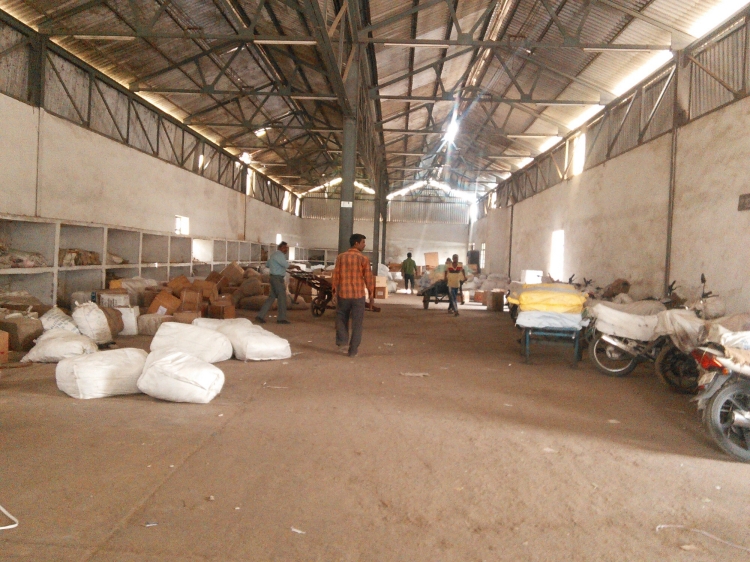
Jaipur's parcel office where we received the bikes. Thus part of Indian railway stations are a complete world on their own, so much stuff going around that we often wonder how in that chaos our bikes have always made it to join us on the other end... thanks to the law of dharma we believe!
Thus when cycling easily through the least chaotic traffic in India so far from the train station to Monti’s house, we felt relieved. And everything after that followed on the same tone. We rested and recovered, we went to the cinema (we saw Court and we highly recommend it) and did some sight seeing. We had a break with messy India – well, to some extent of course.
Curiously one of Jaipur’s attraction is an astronomical observatory built by a science enthusiast Rajah a few hundred years ago. Therein still stands the biggest solar clock of the world, precise down to 20s. On the photo you can see the “needle” , a long set of stairs with a inclination of 27 degrees – Jaipur’s latitude. When the sun shines – and it does often and hard in Rajasthan – the shadow of these stairs indicates on a dial the local time.

This instrument was a sort of astrological clock that would tell you on which constellation was the sun and which constellation was rising at any given moment. There are a few things we did not understand and did not manage to get an explanation from the guide.
Other interesting instruments are standing in the garden and we even took a guide to explain them to us. Unfortunately for them we were very exigent and the two first guides we were provided did not go through the first instrument, due to their English or their explanation. We were sorry to send them back but we really wanted to understand. Finally we found the one they consider their teacher to give us the tour. He was indeed more knowledgeable but not open at all to discussion when we told him (almost begging) not to say that the New moon raises in the west. No celestial body rises in the west but he wouldn’t listen and repeated “new moon rises in the west and moves across the sky to set in the east”… to be honest the meaning of right and left are equally disputable!
For those few days, we were lucky to be hosted by Monti, a very interesting character. He left his home in Bundi at the age of 14 to Chennai because he did not want to follow the rules of his cast and become a lawyer or doctor. He already knew that tourism was his thing. He learned French and started working as a helper for French groups. From that moment he dedicated his life to tourism and after studying in Australia he is now a very successful tour guide for foreigners in India. He honestly said that he doesn’t want to guide Indian tourists because they don’t know how to cue, how to read a map or how to be punctual! On the other hand with foreigners he always has many questions to answer – India puzzles people so much that in walking 200m in the street, westerners have instantaneously tons of questions. How he answered our questions was passionating, so if you need a guide or tour organiser, he is the man!
We could not not go to the Taj Mahal!
Bodhgaya, where under a tree, Buddha became Buddha
After discovering the holy city for Hindus, we had to explore the holy town for Buddhists, that is Bodhgaya. It is place where the prince Siddhartha sat for his long meditation in which he faced his deepest demons and became enlightened.
We were lucky to be hosted by Praveen and his family in a tiny farmers village, 3 km away from the centre of town. Every evening we would come back from town in complete darkness on the narrow path, shortcut for adventurous people. We absolutely loved these 3km of peaceful cycling.
We visited a powerful site, a 30m high statue of Buddha. For the anecdote, we had to take out our shoes when close to the statue. The stones of the floor were black and had been bombarded with sun rays all day. In short, in front of Buddha we practised non reaction to pain and non attachment to the comfort ( and the wise idea) to wear shoes!
Behind this temple is the tree where Buddha got enlightened. We preferred not to take picture of that place where people worship and meditate all day long. Strangely we also witnessed a surreal scene where a female Buddhist monk kept on shouting and pointing at a security guard just beside the temple. Her anger was very much contrasting with her fellow monk smiling trying to solve her issue.
The last day we visited the root institute for wisdom. Indeed , it is a perfect place to get wisdom with a very welcoming atmosphere, a brilliant library and a refined court yard. They offer meditation retreat which must be very nice to attain, if you are into that kind of stuff.
Sarnath
We cycled from Varanasi to Sarnath. Only 15km, but a real trip into the tough side of India!
Firstly, on the way out town, the road goes under the train track. The road under the bridge is hardly wide enough for one bus to go through. When we arrive, the traffic is completely blocked. Two buses on each side wanted both to go through, each driver thinking that his confidence and speed would make the other one stop… by the time they realise one has to move backwards, twenty rickshaws and cars are surrounding them, playing the horn like crazy as if it was a magical instrument to invoke the gods of traffic. If the bus moves 5 cm forward to make some space to turn around, everybody else gets excited and moves 1m forward until the road is completely packed, not a cm to manoeuvre even for motorbikes.
We calmly decide to take a 10m path up to the tracks to leave this mess. As we go up a man shouts toward us : No! No!
We ask him why not, leaving him a chance to explain his sudden reaction. He is : Too steep, too steep!
We say thank you and completely ignore his advice as we have learned to do so in the last two months, cross the tracks and simply walk down on the other side of the bridge, happy to leave the Indians sort themselves out.
The road becomes a deep muddy path for a couple of kilometres where every vehicle wants to go first, overtaking us with splashes and sudden turns.
We then crossed the river in the north of Varanasi where all the dirty water is released to “preserve” the Ganga river. The banks of the river are huge piles of garbage and it is difficult to see the surface of the water under the thick layer of foam, condensate of chemicals and other waste.
We finally make it to the peaceful parks and temples of Sarnath. As soon as we arrive on the site, we are told where to pay, to park, to pee and so on, advice that we again happily ignore and instead have a nap where Buddha gave his first teaching of the Dharma ( path to enlightenment).
The prince Siddhartha Gothama was born with around him the certitude of his greatness, either as a king or as a teacher
After as luxurious childhood, in his twenties he encounters in the surrounding of his palace elderly people, ill people and dead people through which he realises that suffering is inherent to human existence. After seeing a monk and asking what he was doing, he started his quest to understand the cause of this suffering.
For many years he becomes an ascetic, punishing his body to tame his mind but no answers come to him. As he is about to give up his quest, he is offered a bowl of rice which marks the end of his ascetism and discover the middle way as path to enlightenment ( neither punishment nor self indulgence).
He was then 35 years old and taught his discovery for 45 years until his death. His first teaching was in Sarnath where these pictures have been taken.
He is portrayed here defeating a demon with his teachings, and the devotion towards his person questioned us quite a lot since he claimed being as common as any one of us. I suppose he can’t force people not to worship him if that is what they want, as long as his teachings remain the core of their practise.
Ganga
Bénarès, la ville sainte
Published from Bundi, India, 27th of April
Nous sommes à court de mots ces dernières semaines donc nous préférons partager avec les simples images et quelques commentaires. Bientôt notre verbe resurgira j’espère!
Ajanta
In the north of Aurangabad, we visited our second set of caves, this time only Buddhist. A very peaceful place were
we got offered lunch by the security staff!
Cuevas, templos y religiones
published from Jaipur, 24th April
Viajamos de Pune a Aurangabad en tren. Llegamos pasadas las 5am justito cuando el alba empieza a destapar la oscuridad y es la hora perfecta para andar por la ciudad en bicicleta. En la India amanecen temprano, sin embargo Aurangabad parecía estar todavía sumergida en un profundo sueño. Fuimos a la casa de Martina, una chica de Slovakia que se mudó a la India hace más de un año para trabajar en una ONG. Nos hospedo por unos días en un departamento que le prestaron, amplio y vacío y con cocina, qué gusto poder cocinar!
A 30km de Aurangabad están las cuevas de Ellora en donde hace centenares de años se tallaron templos inmensos en la montaña. En el mismo sitio coexisten templos budistas, janistas e hindú, construidos en distintas épocas. Para nosotros fue el primer contacto con la iconografía budista y a partir de aquí empieza a estar muy presente en nuestro camino (más en los próximos posts!).
Salimos por la mañana con las bicis destino Ellora y una discusión absurda nos llevo a un absurdo aún más grande: andar 15km en la mala dirección y en el mismo momento en que nos dimos cuenta pinchamos una goma… Todo en orden para una mañana perfecta! No teníamos nuestro kit de herramientas así que fuimos a un pueblo a buscar una bicicleteria y la encontramos. Después tomamos un atajo por una ruta que parecía haber sido bombardeada por meteoritos o epicentro de un terremoto. Todo esto a las 10am cuando el calor es ya tremendo. Terminamos haciendo hitchhiking en un camión sin amortiguación y polvo de ladrillo que volaba y se nos metió por todos los sentidos. Después de todo eso llegamos a Ellora para olvidarnos de todo y adentrarnos en las cuevas místicas.
Jay, Geeta and Shantish
published from bodhgaya, 18th April
Geeta et Jay vivent dans une maison de taille moyenne au sud ouest de Pune. Ils ont un terrain dans un quartier où les immeubles de plus de deux étages sont interdits. Vivant dans une impasse, le trafic est presque inexistant et la tranquillité règne. Ils ont un manguier, deux cocotiers et beaucoup d’oiseaux venant boire au petit abreuvoir que Jay rempli consciencieusement chaque matin. Les écureuils ne s’en plaignent pas non plus !
Ils sont tous les deux à la retraite même si Jay travaille quand bon lui semble sur un petit appareil utilisé pour souder dont il vend régulièrement quelques exemplaires à son ancien employeur, le géant Tata. Il a conçut le dispositif lui même comme beaucoup d’autres objets ingénieux.
I realise now that people being the protagonists of this post will appreciate to read it in English, so I may be breaking the rules but I’ll change language right in the middle of this post.
The following days were also eventful with music playing, saree trying and a even table tennis game! Jay showed us his very fine painting of landscapes and sceneries. He also did presentation of the journey he did on his bike across Europe last summer with his friend from childhood. Can you imagine, two 60 years old Indian cyclists on the road France, Germany, Hungary for 90 days.
They had planned their exact route and where they would sleep. They never missed a stage!
Funny story is that they followed for a long time the eurovelo 6 road from St Nazarre to Budapest. This road passes very close (200m) to my sister’s house in Besancon. They passed there on the 4th of July. That day I was in my sister’s house! So we had been 200m from each other 9 months ago, 8000km away from where we are meeting now in Pune.
Geeta is also retired from her government job and has always been dedicated to other people: her children, her parents, Jay’s parents.
Now they are all gone and she can spend time doing what she loves: music and especially the harmonium- of which we had a little concerto… She was really impressed that we kept on insisting for helping in the kitchen. She was so open minded that she did let us and the four of us formed a perfect cooking team!
Before arriving to Pune, another Warmshowers member had offered to host us,not in his house but in a flat he rented on his job site, in the mountains nearby. It happened to be that he is good friend of Jay’s family!
He took us to his job place for one night. He is an architect and has been working for 6 years on a colossal project aiming at building an utopian city in the wild mountains 50km away from Pune. Originally the big boss of the building company, Lavasa, wanted companies to move there and employees to have a perfect life, walking to work, playing on the lake, walking in the forest…
The project is facing financial and juridical issues ( they are invading a huge wildlife area and people that gave permissions before are now in trouble). However capitalism is such that it is slowly going where the money is: sell flat as secondary home to rich people in Mumbai. This means no children in the school, no companies and a town empty maybe 90% of the time.
Shantish seemed, with reasons, a bit doubtful. He is such a bright mind and it was very stimulating to talk about all these topics with him.
In the morning we went for a walk away away on a trail (designed by Lavasa) with a precious view on the wild landscape. According to the complete Lavasa plan, houses and buildings will be all around the lake. We definitely agreed with Jay that it was best for it to stop sooner than later.
Next stop Pune? why not!
After seven months of saying ‘ tomorrow we start early!” we made it for the first time that day. And it was so rewarding. Not only to avoid cycling the 75km back to Villapuram in the heat, but also because at 6 in the morning India is still a bit sleepy. The frantic hello! hello! what is your name? which country? (head wobble) that we usually get got replaced by simple smiles and curious looks…light and soft!
We cycled back to Villapuram because we could not put our bicycles in the train from Thiruvalamalai to Pune ( no parcel office). We were told we could do so in Villapuram, for sure. You guess what follows: arriving at the parcel office there we heard : “no bicycles on this train! not possible!”
Now, if you want to travel deep into the world of confusion, of alien logic, of enigmatic chains of thoughts, here is the gate: go to India and just ask why?
We quickly gave up trying to understand and just booked our bicycles in the following train, 12h after ours. Much easier than “why?”
To reach Pune it took 27h hours in an air conditioned sleepers car with 4 other people sharing our little box. Meditation was limited by the height between two beds but the journey went quite fast after all! We arrived at 2am and tried to find a place to sleep. No hotels would accept foreigners around the station (remember: don’t ask why!) and Maia was ill. She managed to sleep through fever on the floor of the noisy lady waiting room until 8 am where we finally could book in the National hotel hidden on the other side of the street. A lot of sleeping happened in the following 24h!
As the sun rose a second time in the city of Pune, Maia gathered enough energy to cycle 12km through Indian traffic ( incredibly brave) to meet our first warmshowers hosts in India, Jay and Geeta. We will tell more about them in the next post but we can already say that we had the most touching encounter and unforgettable stay with them.
On the first evening we had an improvised birthday celebration for Maia. Geeta opened the little glass doors of the temple they have in the kitchen – it has to be situated in the north east corner of the house, beside the kitchen and besides the entrance door always orientated towards the east. She recited a couple of mantras while burning incenses around Maia’s head and upper body. Then they exchanged goods; for birthday it is not only a one way offering in their culture. After a few hours we were in their house, we were already family.
The following morning Jay drove us a mesmerising place of Pune: the flower, fruit and veg market, the biggest in Asia according to a young passer-by!
Tenths of thousands of people go there everyday to buy millions of greens to then sell them on a little trolley at each and every corner of the city.
As we were leaving at 9am, there were still hundreds of bikers trying to get into this parking lot. If you can you spot a free space, let us know!
Tamil Nadu passage
We slept at the train station where they had a room for rent with everything that we needed: a fan and a shower. We set off in the heat towards Thiruvannamalai, 70km away. We actually found a nice road with relatively little traffic and a lot of small villages and villagers that mainly looked strangely at us but also waved and smiled.
We were once asked if we know any martial art or carry a special defence device but we never needed anything like that and now we know that all you need is a helmet. The story goes like this: we stopped in a busy intersection to get some rest in the shade and eat a papaya. On the other side of the street over a huge tree a monkey surveys the road and spots the orange fruit. The monkey viciously climbs down the tree so fast that the tree waves and I naively point to Yoel the exotic wildlife. Yoel is more awake and says “he is coming for us” and very bravely stands up to protect our fruit. The monkey is not so sure but moves aside and hides behind the bike. We continued chatting and as we got distracted the monkey gets closer and closer until he is literally behind our bench ready to grab the papaya and run. We stand up and produce strange noises that have no effect on the monkey who jumps first on the bench and then on Yoel scratching with his filthy hands Yoel’s arm. He jumps off but is not giving up so I try waving a plastic bottle in the air but he knows this is no danger and is almost ready to jump on me when I grab the helmet and surprisingly hit him in the head! He ran off and did not pest again and I stayed a bit in shock after the violent self-defense.
The first night in Thiruvannamalai we slept in an ashram were we felt very welcomed. We got there just in time to celebrate another new year, why not! They were getting ready for Ugadi, the new year in Andra Pradesh (a neighbouring Indian state). The whole place was covered with flower decorations, mango-tree leaves and mandalas drawn on the floor with rice powder. Indians really know how to prepare a space for celebration and it is so important for them that for my foreign eyes it seems that the preparation is the actual celebration. There was a puja and a truly delicious lunch with so much variety that we could not keep up with the plates coming. Here in the south of India we often eat over banana leaves and lunch consists of rice and 2 varieties of curry and some mango pickle that it’s too hot. Lunch is the big meal for them and for us (the whole thing is really inexpensive, around half a British pound!) and it’s very nutritious. We must say that at that point in the trip we had been in India for over a month and we haven’t been ill (although now the record has been unfortunately broken!).
Thiruvannamalai has a ‘red mountain’ called Arunachala where Siva has been seen in a column of fire. It also has a very big temple called Arunachalswar with impressive towers that are fully decorated with sculptures. We were blessed by an elephant, we cued in the dark for unknown reasons or sublime worship, we were asked for money and we were offered fruit.
More than a hundred years ago a man later called Sri Ramana came to Arunachala and lived in a cave where he meditated and attained enlightenment. Years later somehow people started to follow him and learned about the state of ‘self realisation’. With time an ashram was built for his devotees and today even if he passed away, his followers still come here to meet with him. We happened to be part of this mob by chance, accident or curiosity. We stayed in the ashram and tried to discover what were the teachings of Sri Ramana but these remain a mystery for us. We even felt slightly out of place because of our inability to share the devotion that flooded the ashram. Barry was an Englishman with whom we would share morning chats, he told us that every one that goes there is brought in by him and I trust that.
